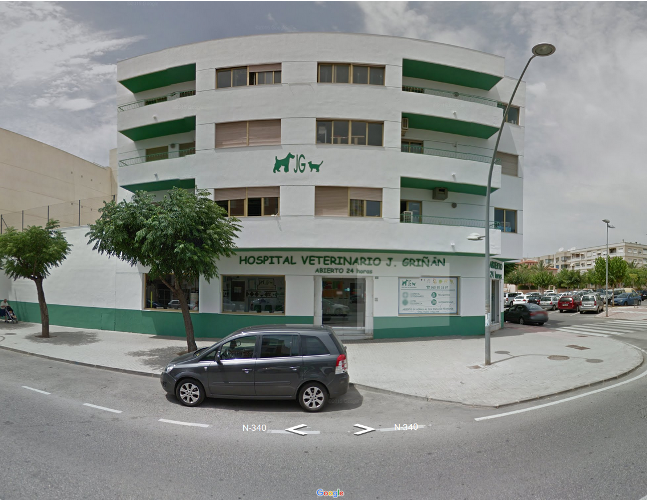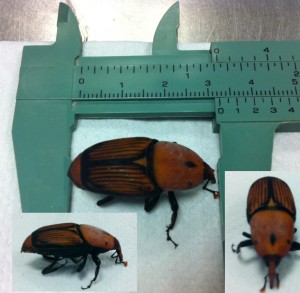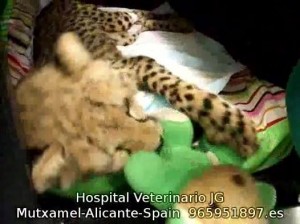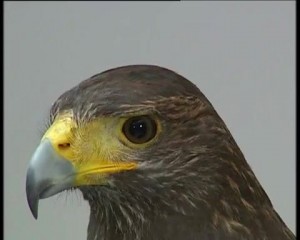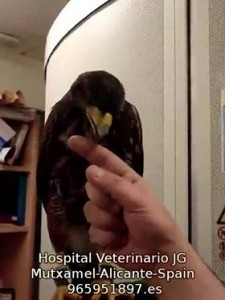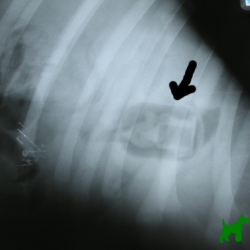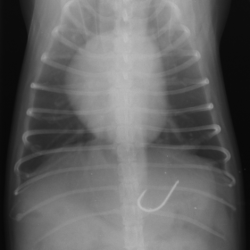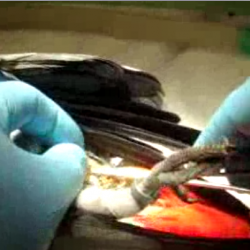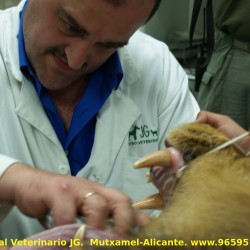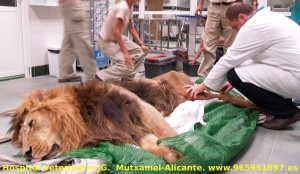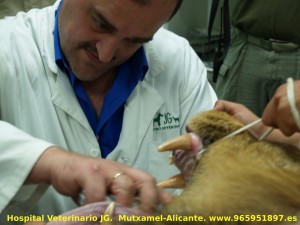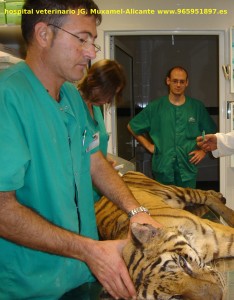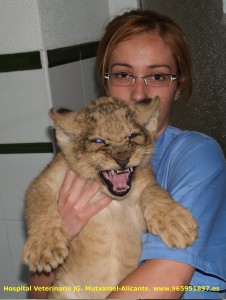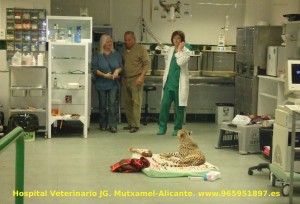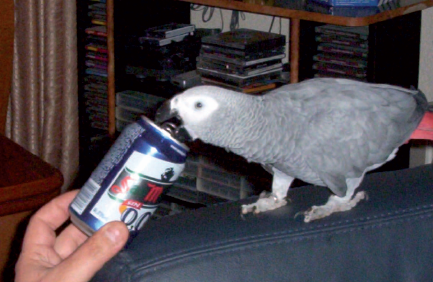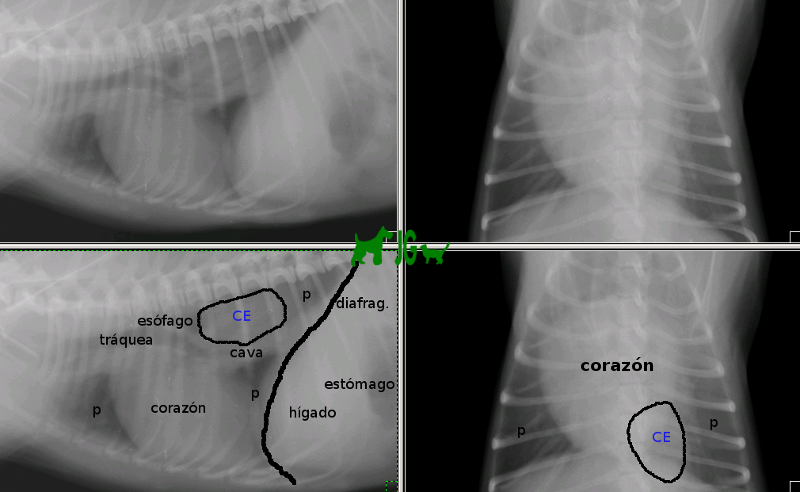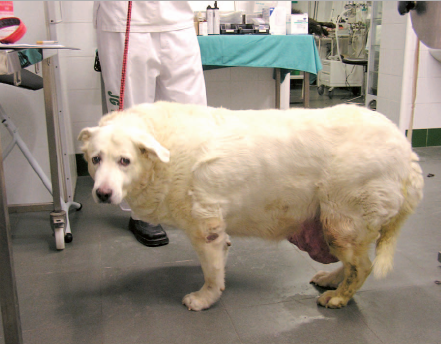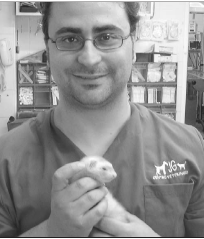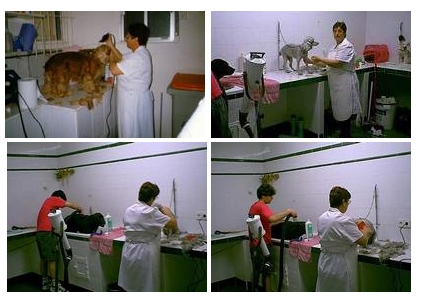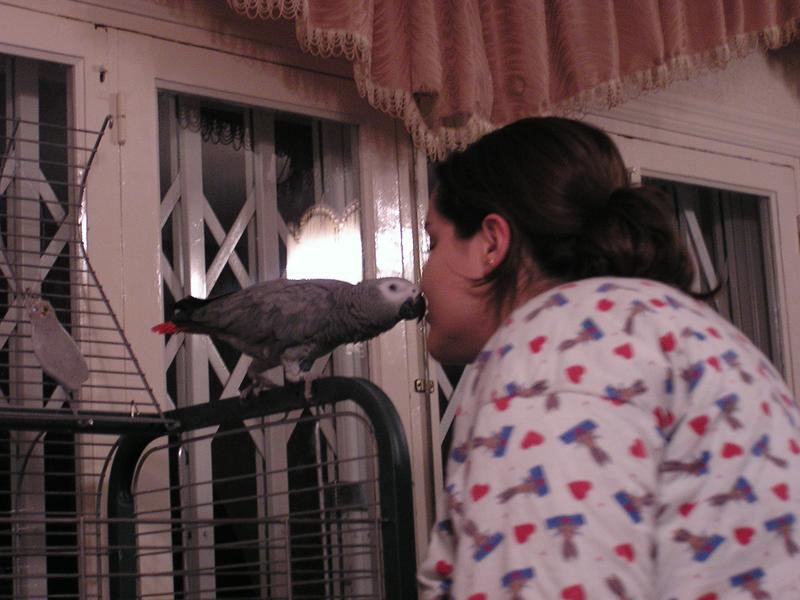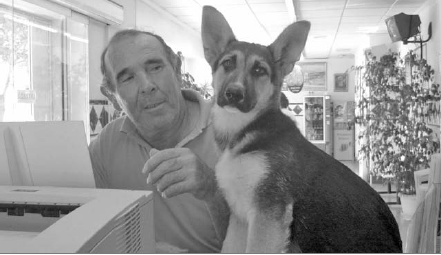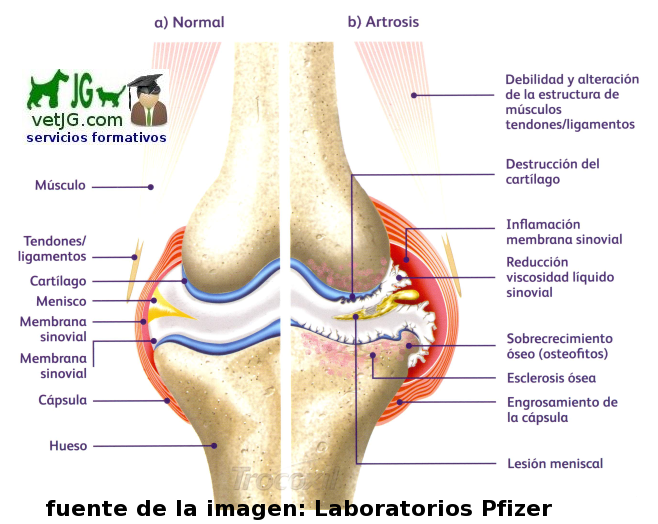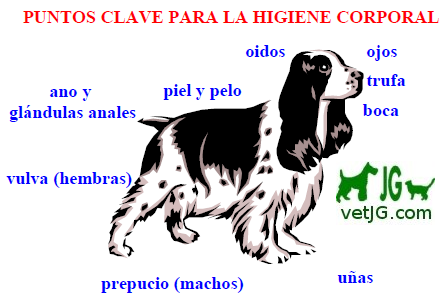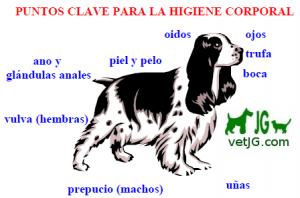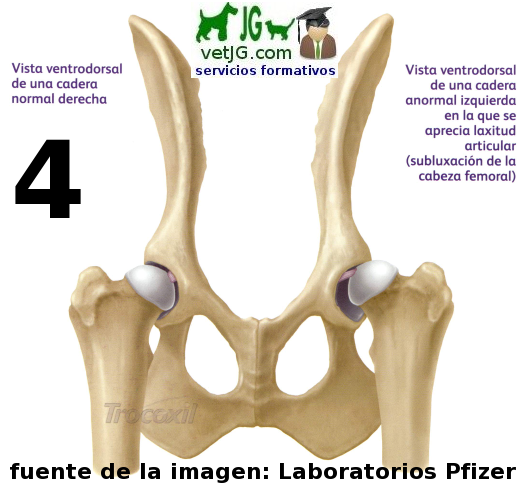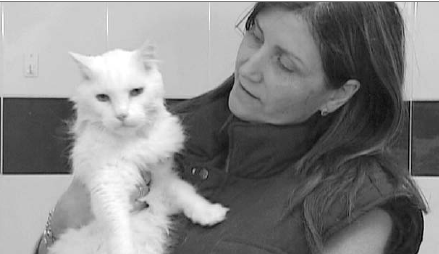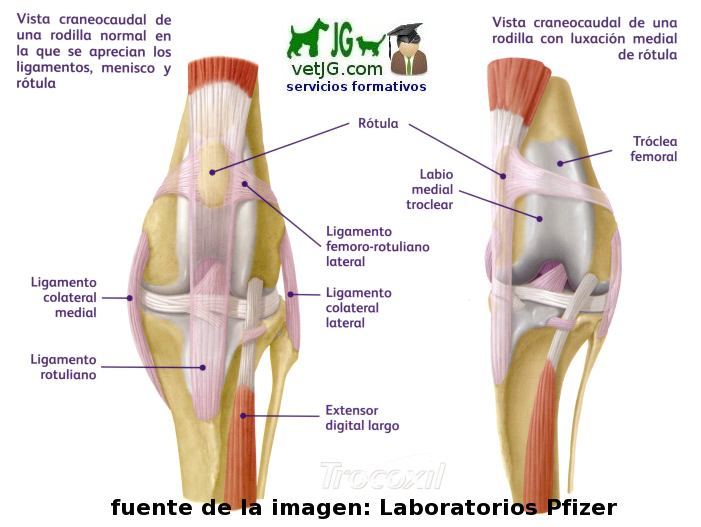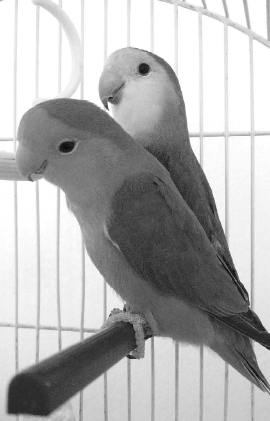Videos por gentileza de Laboratorios Bayer.
Autor: Juan Griñan
Las 10 ventajas que sólo tienen los clientes habituales JG (y no tienen todos los clientes)
¿cuándo puedo empezar a disfrutar de todas estas ventajas? En el mismo momento que confíes en nosotros el cuidado de tu mascota (por ejemplo, cuando vengas a vacunar o a revisar a tu mascota a nuestro hospital todos los años).
De momento puedes darle de alta como paciente JG enviándonos una foto de su cartilla a nuestro whatsapp: 679475391 (foto de la hoja con los datos de tu mascota y foto de las vacunas con sus fechas). Cuéntanos también su historial médico si ha estado enferm@ alguna vez.
nuevo servicio: IMAGING
Invertimos todos nuestros recursos en mejorar la vida de nuestros pacientes (y de nuestros clientes).
Tecnologia puntera. Disponemos del scanner más moderno de España
ver mas en jgtube.vetjg.es
Pues sí, el bicho ha cambiado de matrícula, pero hay cosas que no entiendo …..
Pues sí, el bicho está cambiando la matrícula, tal y como nos temíamos en nuestro post del 17 de marzo de 2020 http://blog.vetjg.com/para-que-lo-entienda-todo-el-mundo-que-pasa-con-el-coronavirus-covid-19/
Vamoraver como decimos en Alicante,o pijoqueeloquee como dicen los amigos murcianos: cuando los veterinarios estamos hartos de ver pacientes con coronavirus diariamente en nuestras consultas resulta que «naide» nos consulta.
Cuando los médicos resulta que están hartos de atender en urgencias a metabolopatías causadas por el «buen nivel del vida» (hipercolesterolemia, diabetes tipo II, ictus, etc..), y malatendiendo a neos «de libro» resulta que aparece un virus que está eliminando a muchos humanos y como no está en su manual resulta que no saben que hacer, o lo que hacen lo hacen mal.
Todos los días estamos atendiendo en nuestra consulta a pacientes felinos y caninos con coronavirus. Sí, con coronavirus que no causan enfermedades graves en nuestras mascotas. Es como atender a un humano con un «costipao»: la mayoría de veces no van al médico y se curan con dos potingues de la farmacia, léase frenadol o costipadol.
Llevo 32 años de sinsudores atendiendo a primates humanos con sus mascotas no humanas, con todo ello lo que significa, y me escandalizo al ver los resultados de la PCR-SARS Covid 19-20-21-22-etc.. de humanos en España, tengo que decir lo siguiente, y que me perdonen los políticos, ya sean del cielo azul o del cielo rojo:
1- el coronavirus Covid-19-20-21-22-etc.. está claro que se ha escapado de un laboratorio, sea por uno que lo ha utilizado para fabricar vacunas contra la gripe, o bien por otra causa, queriendo o sin querer. Ahi lo dejo, algún día se comprobará.
2- el elevado número de PCR positivas es porque tienen el coronavirus, pero no necesariamente el coronavirus «malo», O sea, son positivos a coronavirus, pero igual no es por el «malo».
3- pueden ser positivos al coronavirus, que en algunos de ellos, se transforma en «virus malo». Ojo, el coronavirus puede mutar, o sea, hacerse malo, cuando entra en el cuerpo humano, según las defensas del humano infectado, aunque en la inmensa mayoría pasa como un cuadro gripal.
4-«Naide» se cree que no haya habido ningún p.. caso de gripe en España este año, a pesar de que la gente pueda decir que es gracias a las mascarillas y demás estrategias para evita el contacto humano-humano.
5-Yo, para considerar a mi paciente felino como enfermo de coronavius PIF (peritonitis infecciosa felina, enfermedad MORTAL en los gatos) tengo que ver PCR positiva o negativa, me da igual, proteinas inflamatorias en suero elevadas, hipergammaglobulinemia, y lo que es mas importante: ascitis con derrame pleural. O sea, PCR me da igual, lo que miro es el cuadro clínico. En humanos creo que se debe valorar igual: PCR da igual, lo que se debe mirar es si tiene neumonía. Si tiene neumonía sera Covid o gripe, y si no tiene neumonía grave sera el «coronavirus no malo».
O sea, para considerarlo Covid-19 tengo que ver que tenga síntomas graves. Si da positivo a PCR y no tiene cuadro clinico de Covid-19 lo mas probable es que no tenga covid-19, aunque en los proximos dias pueda desarrollar cuadro clinico grave de Covid, porque el virus, que entró como inofensivo, o más bien, vive con nosotros, mute en el paciente y se haga letal (tal y como sucede en los gatos con PIF).
6- Por lo tanto, tiene menos importancia la cepa que entra que el resultado de ese virus cuando entra en la persona susceptible a que ese virus se vuelva malo en esa persona.
Por todo lo cual, me atrevo a decir, y eso que no he estudiado medicina de humanos, aunque sí medicina de especies animales (que incluyen especies humanas y no humanas) que:
1-el virus que està aniquilando a millones de personas en el mundo es real, y se ha originado por un error en un laboratorio, muy posiblemente queriéndolo usar como vehículo o como medio de vacunar contra el virus de la gripe
2- una PCR positiva no significa que tengas al virus asesino en tu cuerpo. Esta claro que tienes un coronavirus, pero igual es el del «costipao». Igual te mata, depende de tu respuesta inmune, depende de tus defensas.
3-una PCR negativa no significa que estés libre de coronavirus. Puedes estar incubándolo y no dar positivo hasta unos días después. Puedes transmitirlo pero no necesariamente sea «asesino», ya que la capacidad de ser «asesino» dependerá de la persona que contagies, no de tí.
4-la mejor forma de prevenir el contagio: no te relaciones con otros humanos. Evitarás el covid-19 y otros miles de virus más.
(y no vayas al veterinario si no es necesario, ya que el veterinario es igual de animal que tú, o sea, le puedes contagiar el Covid-19 que llevas, que a estas alturas seguro que lo llevas, aunque no lo sepas).
He descubierto la forma de curar el coronavirus (y otros virus), y de paso el cancer. Ahora vamos a tener otro problema: no se va a morir nadie.
Cuando uno investiga e investiga sobre la replicación de virus y la multiplicación de células cancerosas, llega a la misma conclusión: se necesitan ciertas proteínas que desencadenen estas multiplicaciones. Si uno se obsesiona dia y noche sobre el tema, e investiga más y más con la moderna biblioteca de Alejandría (la internet) se dá cuenta de que al final son como unas piezas del tetris las que tienen que encajar en la larga cadena de ácidos nucleicos de las células humanas, o animales, para provocar la multiplicación de los virus o de las células cancerígenas. Pero este tetris es en 3D, no vale el tipico tretis 2D de toda la vida. Que se lo digan a la talidomida, que en una forma 3D era causante de malformaciones en los fetos y en otra forma 3D estaba indicada para el tratamiento de náuseas y no producía malformaciones.
Esto explica el por qué determinadas moléculas, diseñadas y usadas para otros menesteres, se están usando ahora mismo para tratar el puto coronavirus y a las putas células cancerígenas. Como hoy en día la economía prima sobre la salud de las personas, ya no sale rentable producir medicamentos baratos, que ya han perdido su plazo de patente, o sea, cualquiera puede producir ese medicamento sin pagar cánones extra. Esos medicamentos que ya no se usan porque no se gana dinero con ellos pueden salvar muchas vidas, pero ya no sale rentable. ¿ejemplos? muchos: cimetidina, levamisol, ivermectina, azitromicina, etc..
Es acojonante el descubrir como fármacos antiparasitarios, como la ivermectina, la milbemicina, la cloroquina, etc.. sirven igual para tratar parásitos, que para tratar virus que para tratar el cáncer. Que cojones está pasando con éstas moléculas?. La clave está en su estructura 3D.
Si uno además está obsesionado con los semiconductores (palabreja mal traducida al castellano), incluyendo el arduino y a toda la parafernalia de las radiaciones electromagnéticas a las que estamos sometidos, o somos capaces de producir, esto es, a saber, una corriente eléctrica induce un campo magnético, y viceversa, un campo magnético induce una corriente eléctrica, y además es fan de la serie La que se avecina, en la que Fermín Trujillo repite constantemente «algo hay, llámalo dios, llámalo energía, pero algo hay, el universo nos está hablando…. Ahí está la clave: en la energía.
Bueno, para los más preparados, saber que la energía depende de la frecuencia, ya que es directamente proporcional a ella (E=h*v).
El hecho es que las enfermedades se pueden estudiar desde el punto de vista macroscópico (autopsias, cirugías, y todas las técnicas que permiten diagnosticar y tratar «a ojo» a las enfermedades), desde el punto de vista microscópico (citologías, histologías, etc..), desde el punto de vista bioquímico (análisis químicos en el laboratorio) y desde el punto de vista eléctrico (esto ya es menos frecuente: pocos tienen los cojones de estudiar las enfermedades desde el punto de vista eléctrico, salvo algún «pirado» que ha hecho sus pinitos al respecto y lo han tratado como «loco»).
Hay que saber que estamos siendo bombardeados diariamente por radiaciones electromagnéticas naturales, la misma luz, y otras artificiales que aumentan nuestra «calidad de vida» como las wifi y los teléfonos «inteligentes» que nos permiten interactuar con otros primates humanos a tiempo real, sobre todo para enviarnos mensajitos cachondos de bromas sobre el coronavirus y el confinamiento.
Pues bien, si alguien hubiera parido a una persona que fuera médico, veterinario, bioquímico, físico e ingeniero electrónico, hubiera sido el padre de la persona que puede curar las infecciones víricas, parasitarias y el cáncer. Esa persona no existe. Si uno se pone a investigar en la referida biblioteca de Alejandría desde el punto de vista médico, veterinario, bioquímico, físico e ingeniero electrónico, al final se pierde: siempre te falta algún conocimiento para el que no has sido adiestrado, y te toca estudiar y estudiar sin parar, sin llegar nunca a comprender cosas que no te explicaron.
¿Veterinario por que? joder somos los únicos adiestrados para la «higia pecoris, salus populi» (no se si se escribe así, pero paso de buscarlo). O sea, estamos adiestrados para la SALUD PUBLICA. Sabemos todo lo que hay que hacer en caso de una pandemia, mejor que los médicos.
Después de éste preámbulo introductorio resulta que uno descubre que A CIERTAS FRECUENCIAS, podemos interferir en el mecanismo de replicación de virus, parásitos y células cancerosas. O sea, podemos suministrar electrones, ya sea por el aire o por aplicación de corriente eléctrica, contínua (directa según los ingleses) o bien alterna, para fastidiar ese acople de moléculas (con una determinada estructura 3D definida por los enlaces atómicos y sus electrones) e inhibir dicha multiplicación.
¿por qué no ponemos a un médico, a un veterinario, a un bioquímico, a un físico y a un ingeniero electrónico juntos para diseñar un plan de ataque?. Igual no se le ha ocurrido a nadie o bien no hay presupuesto para pagarles, teniendo en cuenta que en España se investiga para figurar, no para investigar. El presupuesto que damos para investigar un tema es para pagar al funcionario de turno para que pueda cobrar a final de mes su nómina. Somos cientos, o miles, los que estamos dispuestos a investigar, sin cobrar, sobre estos temas.
A que frecuencias podemos bombardear con electrones a las células para que no produzcan virus, parásitos o células cancerosas? Yo tengo una idea, pero la pondré en marcha cuando pueda, necesito voluntarios, y que no me metan en el «maricomio». Hay una determinada frecuencia de bombardeo de electrones que pueden parar esa mutiplicación de virus y células tumorales, que básicamente usan las mismas vías. Con 5 Euros te diseño un circuito electrónico con arduino y dos circuitos más.
Te quieres bombardear de electrones? Ponte debajo de una pinada y verás como las antenas (ramas y hojas de los pinos) equilibrarán tus radiaciones electromagnéticas. En dos minutos estarás nuevo, pero tan pronto vayas a la civilización moderna volverás a intoxicarte.
En ese caso de que tengamos éxito tendremos un problema: no se morirá nadie, y a ver que hacemos con tantos humanos (ya no se morirán tantos millones de personas al año) y veremos que hacemos con los miles de millones de «leuros» que tienen invertidos las farmacéuticas para seguir viviendo del tema.
Ahora vas y lo tuiteas.
Que haria yo si fuera presidente del gobierno de España (II). Asesinato masivo de españoles.
Tengo pesadillas por la noche. He soñado que los abuelos se ponen enfermos y en el hospital les dicen que vayan a morirse a su casa, que solo van a salvar a los jóvenes, he visto españoles muertos dentro de bolsas y algunos no tiene ataudes, y todos almacenados en pistas de patinaje porque no hay crematorios para quemarlos. He soñado que la gente está muriendo en sus casas porque no hay médicos para atenderlos. Me despierto con una taquicardia que te cagas con la ilusión de que sea un sueño y compruebo que ES VERDAD: estamos dejando morir a nuestros abuelos que tantas penurias pasaron para darnos un futuro a nosotros y que dieron su vida por nosotros. Es REAL: estamos matando a nuestros padres y a nuestros abuelos a caso hecho. Mientras que en ciertas partes de España hay aparatos (respiradores automáticos) para salvarles la vida sin usar, por culpa de las AUTONOMÍAS, no se comparten esos aparatos con hospitales que carecen de esos aparatos. Además, el político de turno es incapaz de enviar a un hospital privado a esa persona que SE ESTA MURIENDO y no puede ser atendida en un hospial público por falta de medios. O sea, usted muere porque me dá a mí la gana y no quiero ayudarle: esto es UN ASESINATO.
Estamos asesinando a españoles porque los políticos han decidido que ha llegado su hora. Ni Hitler hacía eso. Estamos dejando morir a españoles porque viven en una zona de España que no tiene aparatos ni médicos para atenderlos, y sin embargo en otras zonas de España tenemos aparatos sin usar y miles de personas preparadas para atenderlos. Pero al ser plurinacional, al no ser una nación, grande y libre, como decía aquél, los dejamos morir porque sí. Este genocidio no puede quedar impune: los responsables deben ir a la cárcel permanente no revisable.
Los hospitales privados se reservan para gente que pueda pagarlos y para los familiares de esos políticos asesinos que cobran un sueldo INDECENTE gracias al trabajo de los demás. ¿de verdad podrá dormir ese ASESINO sabiendo que por su culpa está muriendo gente desatendida?. ¿No es capaz de pagarle un taxi o una ambulancia para que lo lleve a otra AUTONOMÍA e intenten salvarlo ? ¿No es capaz de enviarlo a un hospital privado que tiene los respiradores automáticos sin usar?.
Una de las frases genocidas e indignas de los políticos: «los esfuerzos terapéuticos deben ser sobre las personas que vayan a tener éxito, al resto que le den por culo». Son verdaderos ASESINOS de españoles. Cuando pase todo esto se les debe llevar a la cárcel para siempre.
Y usted, lector, es cómplice si por lo menos no le dice estas REALIDADES a los demás.
una prueba: https://www.larazon.es/salud/20200404/oeu7rbdxjrhblcv57utgw2xfbm.html acojonante.
El dia 20 de este mes escribí el post «que haria yo si fuera presidente del Gobierno de España para controlar el COVID-19«, o sea, hace 12 días. Afortunadamente se están tomando las medidas que yo aconsejé, poco a poco, pero aún faltan. Hago un copiar-pegar de ese post y comento lo que hemos conseguido.
Para hacer esta solución menos utópica podemos:
1-Evitar el contacto entre persona sana o enferma y persona sana o enferma: Entonces por qué permitimos que se aglomeren en aeropuertos, trenes, autobuses, supermercados, etc.. tantas personas?. Que tienen que ir a trabajar? Vamos a decirle que hay fiesta nacional hasta el 1 de abril y que no vayan a trabajar y que no se junten con otras personas. conseguido. hemos ampliado la gente en confinamiento. El Estado les paga el sueldo esos días. Los empleados públicos, incluidos políticos, que cobren como máximo 3.000 euros al mes (digo yo que tendrán bastante), el resto de lo que cobran, a la saca (yo creo que si se hace público, NADIE se opondrá a que los extras de su sueldo vayan a la saca). estamos a punto de conseguirlo pero lo dudo Ponemos unos servicios mínimos (como los festivos) de los empleados públicos. Por así decirlo, vamos a adelantar la Semana Santa, y la llamamos Semana Española.
2-Evitar el contacto entre persona sana o enferma y persona de riesgo: La UME, que sabe como equiparse, en las residencias de ancianos y en los centros de personas sensibles y allí no entra ni sale ni dios en dos o cuatro semanas. El ejército a las salidas de las grandes ciudades: por ejemplo Madrid y Valencia: no sale ni entra nadie si no es transportista de víveres. Hay que cerrar como mínimo Madrid ¿es que no lo entendéis?. Cuando ya estén todos vacunados y deje de morirse gente, todos a Alicante, todos invitados a la playa de San Juan, yo pago una cena a los madrileños en «los Charros» de la playa de San Juan. <
conseguido ¡¡¡3- expliquemos bien el tema de los soldaditos y los bichos por televisión (los abuelos están enchufados las 24 horas a la tele), pero cada 2 horas y cambiando el formato del anuncio cada dos por tres, para que no cambien de canal al ver el mismo anuncio:
seguimos con el mismo anuncio, engañoso, sin decirle la verdad a los españolesa) Digamos claramente: usted que tiene más de 70 años y ahora se encuentra bien, va a morir si no nos hace caso: no salga de su casa. Busque a alguien que le lleve las cosas a casa y si no, los servicios sociales le llevarán las cosas a su casa. Su Ayuntamiento o Diputación le ayudará (así usamos las Diputaciones para algo) Digamos claramente: usted, que se encuentra muy bien, puede tener el virus y hacer que enfermen otras personas: aléjese lo máximo que pueda de otras personas, puede contagiarlas, aunque crea que está libre de virus. Mejor dicho, dándole forma: usted YA tiene el virus: evite contagiar a nuestros mayores casi lo hemos conseguido pero hay que informar a los abuelos mejor
4- empresas que han cerrado estos días porque no tienen trabajo o porque les han obligado: préstamos al 0% interés, avalados por el Estado y con control por la Agencia Tributaria: si no pagas el préstamo te embargo (son verdaderos especialistas en cobrar impagados). Según tu historia tienes X miles de euros de gastos al trimestre: te los presto sin intereses. no conseguido: nadie tiene claro como recibir el dinero del estado, y por lo visto cobra intereses
5- no he visto ninguna noticia que aconseje como aumentar las defensas de las personas, cómo darle fuerza a nuestros soldaditos para que nos defiendan de los bichos. En television YA: aconsejamos comer vitamina C (naranjas, que están pudriéndose en los árboles), acidos omega (frutos secos: nueces, almendras, etc..), yogures y frutas b>y verduras. nada, no hay manera, no dan ningún consejo para nuestros mayores por televisión
6- proteger a los que están dando su vida por nosotros: el personal sanitario: pagarles lo que pidan, están trabajando como cabrones, exponiendo su vida por nosotros. En JG ya hemos dado mascarillas para los servicios sociales del Ayuntamiento de Mutxamel. Utilizar los hoteles y lo que haga falta para aislar a los enfermos. Que sí, que la gente ofrece gratuitamente sus instalaciones sin nada a cambio.
por fin se están utilizando instalaciones privadas ¡¡7- redistribuir el material protector y los salvavidas (respiradores) entre toda España. Madrid necesita respiradores?. Yo mismo mañana cojo mis furgonetas y paso a recoger los que no se estén utilizándose en Alicante y los llevo a Madrid. No podemos tolerar que haya gente que necesita sedarse e intubarse con respirador artificial para salvar su vida y se le ponga en el pasillo a ver si se muere porque acaba de entrar un joven que tiene «prioridad». Miles de personas recogerían estos materiales y lo llevarían a Madrid gustosamente. Escribir en comentarios quien se ofrece. nada, ni de coña, los de murcia o andalucía que tienen los respiradores automáticos parados, no envían a Madrid o a Barcelona lo que no usen. Esto es un país plurinacional, o sea, que le den por culo a los abuelos de Madrid si no tienen ventiladores automáticos: que se mueran. Quizá hace unos años cuando firmaron su jubilación no le dijeron: si se pone usted enfermo dejaremos que se muera porque usted está en la lista negra: dejar morir porque usted es viejo
Yo no sé de política, pero creo que no habrá NADIE que se oponga a que debemos nuestra vida y nuestro dinero a las personas mayores, que tanto han hecho por nosotros a lo largo de su vida y han sufrido tanto por nosotros. Que alguien engaña o hace trampas? A saco contra él: se le embarga todo lo que ha engañado con intereses y multa. esto ya se ha superado: que nuestros mayores se mueran porque no hay sitio para ellos
O sea, comparecencia en prime time, telediario a mediodia: «Españoles, estamos contagiados todos ya, lo que pasa es que el que esté más sensible se vá a poner más grave. Doy mi vida para salvaros a todos, pero hacernos caso: no salir de casa. nadie es capaz de decir la verdad Los mayores: vuestro Ayuntamiento os llevará la comida a casa GRATUITAMENTE. Para eso tenemos el ejército: a llevar comida a todas las personas mayores o personas discapacitadas para que no salgan de su casa. Joder, si el estado tiene nuestros datos: edad, nombre, dirección, renta, etc… ¿quien mejor que el estado sabe donde están los que necesitan ayuda?. Que hace falta mas gente? yo sé de 100 personas que me traen gatos de la calle para castrar que se vendrían conmigo a Madrid a llevarles respiradores, mascarillas y lo que haga falta.
Yo no sé sobre economía ni sobre política ni sobre primates humanos, me han educado para curar animales no humanos, pero estimo que el que haya sobrevivido el día 1 de abril ya no de morirá del coronavirus. vaya metedura de pata la mía, resulta que lo peor está aún por llegar a día de hoy 4-4-2020. Quizá la fecha haya que cambiarla allá para navidades del 2020 Entonces tendremos 15000 muertos si seguimos haciendo lo que estamos haciendo. vuelvo a meter la pata, llevamos 11.000 muertos a día de hoy, mal contados, ya que deben ser el doble los muertos reales.. A ver si hacemos ese día FIESTA NACIONAL. Pero hasta ese día van a morir MILES de españoles si no cogemos el toro por los cuernos y sólo somos capaces de ver la puta gráfica de contagiados (que no vale para nada ya que estamos todos ya contagiados) y la puta gráfica de muertos (esperando a que la «seleccioń natural» actúe).
Actualización de recomendaciones sobre el COVID-19
Ante el recrudecimiento del número de casos en España, nos permitimos recomendarle una serie de consejos.
En la actual situación ya no es importante contraer el virus, ya que probablemente usted ya lo tenga, aunque se encuentre muy bien, sino evitar contagiar a personas mayores o a personas enfermas de otras cosas, que sí que enfermarán del virus por su culpa.
Esta situación vá para largo, para varios meses, por lo que debe estar preparado y tranquilo.
Utilice nuestro whatsapp para consultarnos cualquier tema de salud sobre su mascota.
No venga a JG sin consultarnos antes. Nuestra obligación es proteger del virus a nuestros clientes y a nuestros empleados.
No nos llame por teléfono porque estamos saturados de llamadas.
Utilice nuestro whatsapp: 679475391, email clientes@vetjg.com o las consultas on-line gratuitas: coronavirus.vetjg.es para evitar desplazarse todo lo posible.
Salga de casa lo mínimo posible: Mejor salga un día a la semana para comprar que todos los días.
Si sale de casa, aléjese lo máximo posible de otras personas aunque parezcan sanas o tengan mascarilla. Se va a contagiar, seguro, mucho más si está a un metro de distancia que si está a cinco metros de distancia de otras personas. También se va a contagiar si toca algo que haya tocado otra persona aunque ésta no esté enferma: mostradores, cubo de basura, carro de la compra, etc…
Si sale de casa, lávese con alcohol las manos al entrar y al salir, así no meterá el virus en su casa.
No utilice a su perro con la excusa de poder pasear por la calle. Si es posible, no lo saque a la calle: habilite un espacio en su casa. Si no es posible ésto, lo puede sacar a hacer sus necesidades pero el menor tiempo posible y el menor número de veces posible.
No contacte con personas mayores. Seguramente usted ya tendrá el virus aunque no esté enfermo y pueda contagiarlo a esas personas mayores, que sí enfermarán por su culpa.
Si tiene síntomas de resfriado y empeora, contacte con el teléfono 900-300-555 y no vaya al médico si no se lo dicen.
Si vá al hospital por su cuenta, se va a contagiar con toda probabilidad y podrá enfermar o convertirse en portador del virus y ya podrá infectar a otras personas. Además, entorpecerá la atención de las personas gravemente enfermas.
Si se aburre, confeccione mascarillas de tela y nos las trae a JG cuando tenga muchas para esterilizarlas y envasarlas individualmente y las entregaremos a la policía. ¿cómo puede esterilizar su mascarilla de tela en su casa, o sea, como puede matar a los virus que están en su mascarilla de tela?: muy fácil, pásele la plancha. El calor destruirá a los virus.
Aliméntese con frutas, verduras y frutos secos, y si tiene posibilidad, tome el sol y permanezca en sitios aireados.
JG VETERINARIOS: cuidamos de su mascota, cuidamos de usted
Avda Alicante, 18 (edificio JG) 03110-Mutxamel-Alicante-España
Por fin alguien que explica el coronavirus tal y como es. Para que todo el mundo lo entienda.
Otro que apoya mi teoría. Mejor explicado IMPOSIBLE.
Entendiendo por qué es tan agresivo nuestro enemigo.
por cierto, ya se están tomando las medidas (la mayoría) que aconsejé el día 20 en ¿que haría yo si fuera presidente del gobierno?
Estoy obligado a proteger a mis clientes contra el coronavirus (y con mucho gusto)
Estoy satisfecho de ver como el Presidente del Gobierno vá tomando en cuenta las medidas que indiqué en mi post «que haría yo si fuera Presidente del Gobierno de España», poco a poco.
Acabo un día como veterinario después de atender urgencias en mi hospital: he operado una piómetra, una endoscopia esofágica de un yorki con un hueso en esófago de tres días de evolución, atención médica de varias insuficiencias renales, de varios leishmaniósicos, de varios post-quirúrgicos de osteosíntesis, de varias gastroenteritis, de varios gatos con estomatitis, etc.. etc.. y después de contestar varias consultas no urgentes por wasap.
Cierto veterinario avispado me decía «sólo has facturado un 30% del mínimo que debes facturar para cubrir gastos?». Contesto: Po zi, podría hacer como otros centros: como está la gente «de vacaciones» podría facturar un 120% del mínimo, pero NO QUIERO: mis empleados y mis clientes están por delante de los ingresos económicos: debo protegerlos y evitar la afluencia masiva de clientes a mi hospital veterinario. Sólo voy a atender a los clientes IMPRESCINDIBLES, los que realmente necesitan atención veterinaria médica en este momento. El resto, que consulte por el wasap.
Vamos a ver, mis clientes son primates humanos, o sea, animales (para eso estoy especialmente preparado, muy preparado, llevo 30 años preparándome), animales racionales que piensan y tienen un «exceso de corteza cerebral» (para esto no estoy preparado) y son herbívoros (de esto podemos discutirlo en otro post si queréis).
Resulta que mis clientes están ahora mismo sujetos a infectarse por un virus MUY CONTAGIOSO, que ni dios puede evitar que les infecte (también podemos discutir esto en otro post), mejor dicho, TODOS están infectados por el coronavirus en estos momentos.
Pues como no podemos evitar que se infecten, SI QUE PODEMOS evitar que enfermen: vamos a potenciar su sistema inmunológico, o sea, me tomo la libertad de aconsejarles sobre que deben hacer para hacer a sus «soldaditos» más resistentes al coronovirus (y no soy médico de personas, pero sí de animales):
1- BOSTEZAR: hay que potenciar el «segundo cerebro»: bostezar, y volver a bostezar, y así estimularéis vuestro segundo cerebro, o sea, lo que se llama el «sistema nervioso autónomo parasimpático (vaya nombrajo)». Esto consiste en una serie de neuronas que se encargan de proteger y reparar los daños de vuestro cuerpo. Se autoreparan las lesiones producidas por vuestra vida de humanos «modernos». Por la boca entra comida y numerosos tóxicos que pueden lesionar a vuestro sistema defensivo (el pobre hígado, con su sistema portal, está para eso). Numerosos soldaditos están desactivando productos tóxicos que estáis ingiriendo con vuestra comida. Al bostezar, estáis estimulándolos. Igual efecto tienen los ejercicios de relajación, la acupuntura y numerosos nombrajos disponibles en el mercado. A mi paciente, de cuatro patas, no le puedo hacer bostezar, ojalá pudiera, pero a su propietario sí que puedo ayudarle.
2- DIETA CON FIBRA: hay que comer «cosas» que tengan celulosa (como buenos herbívoros que somos, que sí, coño, que somos herbívoros, que nos volvimos carnívoros para ser más inteligentes y mira donde hemos acabado). Nuestro intestino debe trabajar para mantener OK a nuestro segundo cerebro: debe tener celulosa para poder trabajar: comer frutas y verduras, y frutos secos (pipas, nueces, almendras, etcc). Por ejemplo, en el hiperber de Mutxamel hay unas bolsitas maravillosas que llevan nueces, pipas, pasas, cacahuetes, avellanas y no se cuentas cosas más (todo pelado, no tienes que pelarlo): grandes fuentes de celulosa y de ácidos omega que van a poner a vuestros soldaditos «a la orden». Si váis al aseo como mínimo una vez al día, vamos bien. Si no, más celulosa. Y si no, más fructo-oligosacáridos (ya entra en juego el duphalac, el medicamento más recetado por mí para mis pacientes ya que me llaman el «doctor duphalac»). Si tomáis el duphalac, bien, y si no, frutas a punta pala, que tienen el duphalac natural).
3- REIRSE, REIRSE MUCHO. La risoterapia es un chute de endorfinas que mantiene a nuestro cerebro al 100% para mantenernos protegidos. Googlear chistes de Eugenio (que viejo me he hecho, cojones), o de andaluces (que son los más chistorros del país): vuestro sistema inmune os lo agradecederá (cuanto más os riáis, mas vacunados estaréis contra el coronavirus). El que oiga 100 chistes estará más protegido contra el coronavirus que el que oiga 50 chistes.
4- OIR MUSICA. Cuando ya estéis «jartos» de reiros, googlear música. Por ejemplo: «we are the champions», «la dolche vita», «guilty», «yo soy español, español, español…», «mi carro me lo robaron», «reloj no marques las horas», y en general todas las canciones de Antonio Machín, o de Beethoven. Poner estas canciones a máximo volumen (que tiemblen las lámparas del comedor) y tararearlas a toda voz (ahora no van a denunciaros por eso). El que escuche, y cante, 100 canciones de éstas estará más protegido contra el coronavirus que el que escuche 50.
5-ACARICIAR A VUESTRA MASCOTA. Si sois tan afortunados como yo de tener a un bicho (o varios) de cuatro patas en vuestro sofá, que os enseña los dientes cuando le tocáis la manta, estáis de buena suerte: estáis vacunándoos contra el coronavirus. Vuestra tensión arterial bajará, vuestras endorfinas (que estimulan a vuestros «soldaditos») estarán a tope. No hay mayor subida de endorfinas como cuando acarecíais a vuestro perro o a vuestro gato y os responde con un «rrrrr».
6-VICIOS DE PRIMATES HUMANOS. No puedes dejar de fumar en estos días, no puedes dejar de hacerte tus brebajes alcohólicos estos días: sería contraproducente. Tus soldaditos están acostumbrados y no puedes quitarle estos vicios. Lo ideal sería también aumentar otro tipo de liberación de endorfinas «vacunadoras contra el coronavirus» teniendo relaciones sexuales, pero de eso yo no entiendo, ya que mis pacientes están ON sólo dos veces al año, por lo que ahí lo dejo…..
Os aseguro que si bostezáis varias veces al día, coméis frutas y verduras y frutos secos, or reís mucho, oís música a toda voz, y habéis tocado a vuestra mascota mientras os quita sitio en el sofá, estaréis super-vacunados contra el coronavirus.
PD: una buena copa de protos, en compañía con la risoterapia y con la música, aumentará tus defensas contra el coronavirus, tenlo por seguro ¡¡¡¡¡
edito 4-4-2020: digno de ver:
Para que lo entienda todo el mundo: que pasa con el coronavirus COVID-19 II?
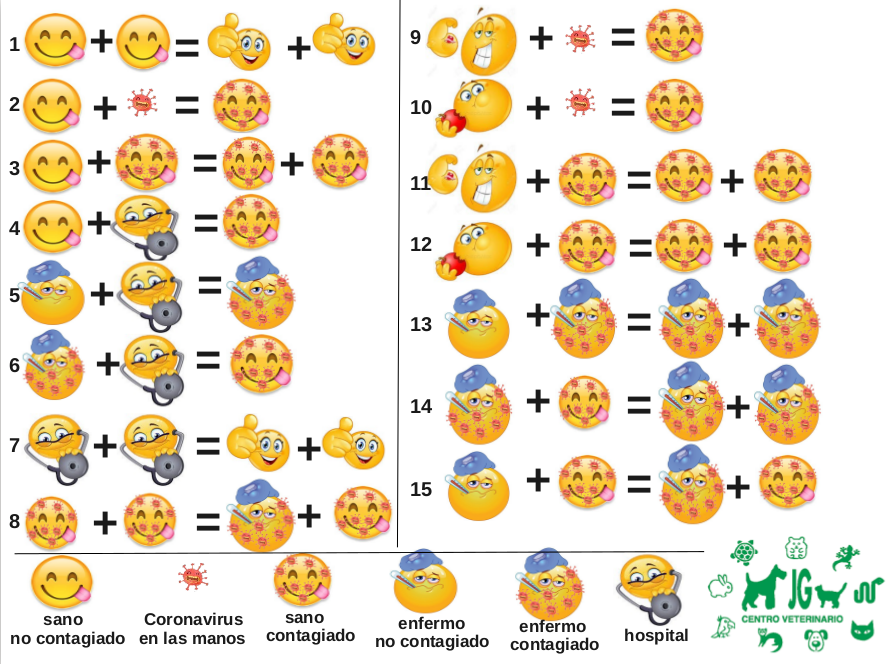
1- lo ideal: persona sana y no contagiada ineractúa con persona sana no contagiada.
2-persona sana no contagiada toca el carro de compra del carrefus, el mostrador de la farmacia, la moneda de 2 Eur del mercadona, el teclado del cajero del banco cuando ha ido a sacar dinero, la manguera de la gasolinera cuando fui a poner gasolina y a comprar tabaco y patatas fritas sabor a jamón, la cartilla del perro cuando he ido a vacunar a Toby, el rollo de papel higiénico que estaba en oferta, el botón 1 del ascensor de mi comunidad, la bolsa del telepizza, el móvil de mi marido que ha salido a pasar el perro y ha tocado antes la papelera, la tapadera del contenedor de basura que han tocado centenas de vecinos, el regalo del día del padre que tenía guardado en el cajón de la cocina, etcc….
Por eso iré a comprar al super o a comprar tabaco un día a la semana, sacaré al perro cuando él lo necesite y no cuando yo lo necesite, llevaré guantes, aunque sea de esos de fregar, a tirar la basura, no iré al veterinario salvo que Toby esté realmente jodido, y no para vacunarlo ni para cortarle las uñas.
3-yo estoy muy bien, me voy a una orgía o botellón con amigos que están sanos, me pongo en contacto con personas que parecen sanas pero están contagiadas, y por gilipollas, me contagio, aunque no enferme, pero ya soy contagioso para los demás, y ya seré capaz de producir la muerte a personas susceptibles.
4- me voy al hospital para que me vean porque es gratis: entro sano y salgo contagiado, con lo cual ya puedo matar a mis padres que son mayores.
5- me voy al hospital porque me duele la cabeza o porque me tengo que medir el sintron, o porque quiero que me hagan la receta del adiro. Entro sano y salo cargadito….
6- tengo síntomas del coronavirus y me voy al médico: me van a curar pero quedo como transmisor de virus
7- los médicos del hospital están dando sus vidas por nosotros: son verdaderas máquinas salvavidas. Hay que poner un día del año dedicado a ellos
8- un sano contagiado contacta con un sano contagiado: enfermo seguro
9- soy una máquina, estoy supersano, y toco algo con el virus: o enfermo poco o no enfermo y llevo el virus para contagiar a los demás.
10- me cuido mogollón, no enfermo pero llevo el virus en mi mochila para contagiar a los demás
11- soy un tipo sano, pero cuando contacto con un tío sano portador, me convierto en portador también
12- idem
13- estoy enfermo o soy viejecito y contacto con un enfermo: me contagio fijo y enfermo del coronavirus.
14- estoy enfermo del coronavirus y me tomo una cerveza con un tío sano que ya tiene el virus aunque no esté enfermo: los dos nos ponemos más enfermos
15- estoy enfermo de otras cosas y contacto con un tío enfermo de coronavirus. ¿hiciste el testamento?
Importante: ¿como distinguir entre un primate sano no contagiado (A) y un primate sano contagiado (B)? Imposible. Solución: no te acerques a menos de 5 metros.
Importante: ¿como distinguir entre enfermo no de coronavirus y un primate enfermo de coronavirus?. Imposible: solución no te acerques a ningún primate a menos de 5 metros.
CONCLUSIÓN: si ya estabas recludio en tu casa y YA eras anti-social todo el día jugando a la play-station, por que ahora quieres salir a la calle? Estate quietecito en TU CASA. Así no transmitirás el virus que llevas encima Y NO LO SABES.
Mapa del virus en España
que haría yo si fuera Presidente del Gobierno de España contra el coronavirus COVID-19?
¿que haría yo contra el Coronavirus si fuera Presidente del Gobierno de España?
Vamos a ver, iba a escribir lo que hubiera hecho yo en España si hubiera sido yo Pedro Sánchez antes de llegar a como estamos hoy con el tema del coronavirus, pero sería absurdo: no valdría para nada.
No me voy a meter con temas políticos, porque ahora mismo hay una prioridad nacional: los españoles, los compatriotas.
No apruebo las medidas que está tomando el gobierno al cien por cien ni tampoco voy a bendecir las medidas de los ingleses que básicamente dicen que «sálvese quien pueda» y que sobreviva el más fuerte.
Tampoco voy a hablar sobre lo que hacemos los veterinarios cuando hay epidemias parecidas en animales de abasto (los que nos comemos): todo dentro, todo fuera, o sea, sacrificar a todos los animales (sanos y enfermos) presentes en la granja, desinfectar y meter nuevos animales sanos transcurridos un tiempo.
Tampoco voy a hablar sobre lo que hacemos los veterinarios cuando hay epidemias parecidas en animales de compañía que afectan a los humanos (ejemplo rabia): sacrificio de todo mamífero viviente a no se cuantos cientos de metros a la redonda desde el lugar del caso detectado.
Lo que si voy a hacer es enviar a casa al tío ese responsable de las epidemias en España que es capaz de reirse todos los días cuando anuncia los muertos en España. Que se vaya a su casa para no contagiarse. No se puede llevar esta epidemia tan sólo viendo las gráficas de los muertos. Hay que prevenir las muertes de españoles, y se puede. No se puede estar esperando a que cambie la puta curva SIN HACER NADA.
Tenemos una realidad:
0-los datos de China de muertos son falsos. Nobody se cree esos datos. Quizá los multiplicamos por 10 y son exactos. Los datos de Italia si que son exactos, son datos no políticos. Los datos de muertos en España también son exactos, verídicos. En España, HOY 20-3-2020 dicen que LO PEOR ESTA POR LLEGAR. O sea, LO SABEN. que cojones están haciendo?
1- es un virus contra el cual no hay nadie inmunizado, por lo que todos vamos a contagiarnos, tarde o temprano. Sabemos que no moriremos si nos contagiamos con pocas dosis infectivas. Puntualizo: ya estamos todos contagiados: unos estamos sin síntomas, otros tenemos falta de olfato o del sentido del sabor a los alimentos, otros estamos resfriados, otros estamos un poco peor porque tenemos fiebre y otros estamos intubados en el hospital porque estamos muriéndonos.
2- enfermaremos bastante o incluso moriremos (al igual que con la gripe, si no nos vacunamos, aunque un poco más) los grupos de riesgo: enfermos, inmunodeprimidos o personas mayores.
3- es un virus silencioso y muy contagioso: personas sanas o personas sin síntomas, además de las enfermas, están contagiando al resto. Hay que tener en cuenta que una persona sana que es contagiosa nunca va a producirle la muerte a otra persona sana que no pertenece al grupo de riesgo (está eliminando pocos bichitos). De igual forma, una persona enferma nunca va a producir la muerte a una persona sana que no pertenece al grupo de riesgo. Leeros mi pensamiento en este blog sobre «para que el todo el mundo lo sepa: que esta pasando con el coronavirus».
4- vive bastante tiempo en cosas impregnadas con secreciones corporales. Que las tiendas desinfecten los carros de la compra con lejía diluida. Tirar las putas mascarillas a la basura porque están llenas de bichos. Las únicas que funcionan son las que llevan el ejército y los sanitarios de la UVI.
O sea, es un virus muy contagioso entre personas (como la gripe) y es capaz de matar a personas débiles (algo más que la gripe) porque no podemos protegerlas con vacunas.
Entonces, la solución es fácil, pero a la vez utópica: evitar el contacto entre persona y persona, sobre todo entre persona (sana o enferma) y anciano o persona débil. O sea, evitar el contacto menor a 5 metros entre personas, estén o no enfermas.
Para hacer esta solución menos utópica podemos:
1-Evitar el contacto entre persona sana o enferma y persona sana o enferma: Entonces por qué permitimos que se aglomeren en aeropuertos, trenes, autobuses, supermercados, etc.. tantas personas?. Que tienen que ir a trabajar? Vamos a decirle que hay fiesta nacional hasta el 1 de abril y que no vayan a trabajar y que no se junten con otras personas. El Estado les paga el sueldo esos días. Los empleados públicos, incluidos políticos, que cobren como máximo 3.000 euros al mes (digo yo que tendrán bastante), el resto de lo que cobran, a la saca (yo creo que si se hace público, NADIE se opondrá a que los extras de su sueldo vayan a la saca). Ponemos unos servicios mínimos (como los festivos) de los empleados públicos. Por así decirlo, vamos a adelantar la Semana Santa, y la llamamos Semana Española.
2-Evitar el contacto entre persona sana o enferma y persona de riesgo: La UME, que sabe como equiparse, en las residencias de ancianos y en los centros de personas sensibles y allí no entra ni sale ni dios en dos o cuatro semanas. El ejército a las salidas de las grandes ciudades: por ejemplo Madrid y Valencia: no sale ni entra nadie si no es transportista de víveres. Hay que cerrar como mínimo Madrid ¿es que no lo entendéis?. Cuando ya estén todos vacunados y deje de morirse gente, todos a Alicante, todos invitados a la playa de San Juan, yo pago una cena a los madrileños en «los Charros» de la playa de San Juan.
3- expliquemos bien el tema de los soldaditos y los bichos por televisión (los abuelos están enchufados las 24 horas a la tele), pero cada 2 horas y cambiando el formato del anuncio cada dos por tres, para que no cambien de canal al ver el mismo anuncio:
a) Digamos claramente: usted que tiene más de 70 años y ahora se encuentra bien, va a morir si no nos hace caso: no salga de su casa. Busque a alguien que le lleve las cosas a casa y si no, los servicios sociales le llevarán las cosas a su casa. Su Ayuntamiento o Diputación le ayudará (así usamos las Diputaciones para algo) Digamos claramente: usted, que se encuentra muy bien, puede tener el virus y hacer que enfermen otras personas: aléjese lo máximo que pueda de otras personas, puede contagiarlas, aunque crea que está libre de virus. Mejor dicho, dándole forma: usted YA tiene el virus: evite contagiar a nuestros mayores
4- empresas que han cerrado estos días porque no tienen trabajo o porque les han obligado: préstamos al 0% interés, avalados por el Estado y con control por la Agencia Tributaria: si no pagas el préstamo te embargo (son verdaderos especialistas en cobrar impagados). Según tu historia tienes X miles de euros de gastos al trimestre: te los presto sin intereses.
5- no he visto ninguna noticia que aconseje como aumentar las defensas de las personas, cómo darle fuerza a nuestros soldaditos para que nos defiendan de los bichos. En television YA: aconsejamos comer vitamina C (naranjas, que están pudriéndose en los árboles), acidos omega (frutos secos: nueces, almendras, etc..), yogures y frutas y verduras.
6- proteger a los que están dando su vida por nosotros: el personal sanitario: pagarles lo que pidan, están trabajando como cabrones, exponiendo su vida por nosotros. En JG ya hemos dado mascarillas para los servicios sociales del Ayuntamiento de Mutxamel. Utilizar los hoteles y lo que haga falta para aislar a los enfermos. Que sí, que la gente ofrece gratuitamente sus instalaciones sin nada a cambio.
7- redistribuir el material protector y los salvavidas (respiradores) entre toda España. Madrid necesita respiradores?. Yo mismo mañana cojo mis furgonetas y paso a recoger los que no se estén utilizándose en Alicante y los llevo a Madrid. No podemos tolerar que haya gente que necesita sedarse e intubarse con respirador artificial para salvar su vida y se le ponga en el pasillo a ver si se muere porque acaba de entrar un joven que tiene «prioridad». Miles de personas recogerían estos materiales y lo llevarían a Madrid gustosamente. Escribir en comentarios quien se ofrece.
Yo no sé de política, pero creo que no habrá NADIE que se oponga a que debemos nuestra vida y nuestro dinero a las personas mayores, que tanto han hecho por nosotros a lo largo de su vida y han sufrido tanto por nosotros. Que alguien engaña o hace trampas? A saco contra él: se le embarga todo lo que ha engañado con intereses y multa.
O sea, comparecencia en prime time, telediario a mediodia: «Españoles, estamos contagiados todos ya, lo que pasa es que el que esté más sensible se vá a poner más grave. Doy mi vida para salvaros a todos, pero hacernos caso: no salir de casa. Los mayores: vuestro Ayuntamiento os llevará la comida a casa GRATUITAMENTE. Para eso tenemos el ejército: a llevar comida a todas las personas mayores o personas discapacitadas para que no salgan de su casa. Joder, si el estado tiene nuestros datos: edad, nombre, dirección, renta, etc… ¿quien mejor que el estado sabe donde están los que necesitan ayuda?. Que hace falta mas gente? yo sé de 100 personas que me traen gatos de la calle para castrar que se vendrían conmigo a Madrid a llevarles respiradores, mascarillas y lo que haga falta.
Yo no sé sobre economía ni sobre política ni sobre primates humanos, me han educado para curar animales no humanos, pero estimo que el que haya sobrevivido el día 1 de abril ya no de morirá del coronavirus. Entonces tendremos 15000 muertos si seguimos haciendo lo que estamos haciendo. A ver si hacemos ese día FIESTA NACIONAL. Pero hasta ese día van a morir MILES de españoles si no cogemos el toro por los cuernos y sólo somos capaces de ver la puta gráfica de contagiados (que no vale para nada ya que estamos todos ya contagiados) y la puta gráfica de muertos (esperando a que la «seleccioń natural» actúe).
Espero vuestros comentarios para ampliar todo lo que haga falta. Estamos en una emergencia nacional de los españoles y TODOS somos capaces de defender a los españoles, política aparte. Is pain is not Spain, is pain is diferent. Por cierto a ese tio de la OMS, con gafas, a ver si le embargamos el sueldo de febrero y marzo, porque ha hecho el payaso con todo el poder que tiene. Estoy viendo al ministro astronauta en televisión en estos momentos y la psoriasis me está rebrotando. Igual es capaz de saber cual es la pendiente del momento magnético del átomo de Bohr pero no sabe que el Protos es vino de Ribera del Duero, o sea, no tiene ni idea de la realidad del virus COVID-19
Para que lo entienda todo el mundo: que pasa con el coronavirus COVID-19 ?

Consejos sobre el coronavirus COVID-19
Medidas de protección de nuestros empleados y de nuestros clientes en el Hospital Veterinario JG
¿QUE SON LOS VIRUS?.
Los virus son unos bichitos que no se ven a simple vista, son microscópicos. Tienen el vicio de reproducirse dentro de nosotros, destruyéndonos lentamente, por lo que nos provocan síntomas de enfermedades, por ejemplo: fiebre, malestar, tos, mocos, etc… y además salen con los líquidos que expulsamos, por ejemplo al respirar o al toser, para buscar otras personas y poder reproducirse en ellas. No tienen otra cosa que hacer que meterse en nuestros soldaditos (células defensivas) y multiplicarse. Lo hacen sin querer: me meto en la célula y empiezo a hacer fotocopias de mi mismo sin parar hasta que la rompo.
Hay bichos que se reproducen muy rápidamente: entra uno y enseguida se fabrican 10 en pocos minutos, sin embargo hay bichos en que entra uno y salen 2 ó 3 en el mismo período de tiempo. En este último caso hablamos de bichos o virus «menos contagiosos».
SISTEMA INMUNE.
El sistema inmune de las personas, constituido por varias células o soldaditos defensivos que son más grandes que el virus, se encarga de defendernos de todos los tipos de bichitos (si no, no estaríamos leyendo ésto): se los comen y los matan. Este sistema inmune se encarga de destruir a todos estos bichitos y se acuerda de cómo son. Desde que nacemos, no paramos de ser bombardeados por muchos tipos de bichos, y nuestro sistema inmune los va destruyendo provocando en nosotros los mencionados síntomas de enfermedad, más o menos intensos, acordándose de su matrícula. Si unos de ellos vuelven a invadirnos, como ya sabemos su matrícula, los destruimos antes y nuestros síntomas son mas leves. Si vuelven a invadirnos, los destruimos más rápido y no mostramos ningún síntoma (es lo que se llama técnicamente «estamos inmunizados»).
Su finalidad es reproducirse en nuestros soldaditos defensivos, por lo que cuanto mas sanos estemos, antes podremos destruirlos. O sea, si nos alimentamos bien y tenemos una vida saludable, cuidando nuestras defensas, nuestros soldaditos estarán super-preparados para destruir bichos: los matamos, enfermamos poco o nada, y nos quedamos con su matrícula para poder eliminarlos rápidamente cuando vuelvan a invadirnos.
POBLACIÓN DE RIESGO.
Si resulta que estamos tomando medicamentos para alergias, para trasplantes, o quimioterapia, y para otras cosas más, resulta que estos medicamentos están quitando efectividad a nuestros soldaditos defensivos. Lo mismo pasa cuando tenemos alguna enfermedad con bajada de defensas o somos «triabéticos» (con la zuca (azúcar), colesteró (colesterol) y triglicéricos (triglicéridos)): afectará a la fuerza de nuestros soldaditos, o cuando somos muy viejos, por ejemplo más de 70 años de edad: los soldaditos están cansados y no son capaces de responder igual de bien contra todos los bichos que nos invadan: a estas personas les llamamos técnicamente como «población de riesgo».
DOSIS DE VIRUS.
Pero claro, todo depende de la cantidad de bichos que nos invadan. Nuestro cuerpo puede soportar ataques de 100 bichos peor que si nos atacan 10 (es lo que se llama técnicamente «dosis infectiva»). Si nos atacan 10 acabaremos con ellos rápidamente, y más rápido si sabemos ya su matrícula, o sea, si ya nos han invadido antes.
Resulta que los bichos llamados COVID-19 no nos han atacado nunca (no tenemos su matrícula grabada) y resulta que nos entran de 1.000 en 1.000 y resulta que de cada uno que entra en nuestros soldaditos salen 100. Nuestros soldaditos no tienen su matrícula grabada y además están saturados: hay demasiados bichos para destruir y no damos abasto para comérnoslos, por lo que los síntomas son más acusados, son más graves. Si nos entran de 10 en 10, podremos destruirlos, sin manifestar síntomas graves, y quedarnos con su matrícula, para cuando nos vuelvan a invadir destruirlos rápidamente. Claro, aunque entraran en la población de riesgo de 10 en 10, los síntomas serán mas graves que en las personas sanas, pudiendo incluso matarnos. No te digo nada si entran en la población de riesgo de 1000 en 1000, será aún más grave.
CUANTO AGUANTAN FUERA DEL CUERPO.
Otro punto a tener en cuenta es la capacidad de supervivencia de los bichos fuera del cuerpo humano. Hay bichos que viven mucho tiempo sin que les dé el sol, otros mueren enseguida cuando les dá el sol, otros viven en los pañuelos varios días, otros viven varias horas en el pañuelo. Los bichos del COVID-19 viven muy bien en el pañuelo varios días, viven con el sol directo varias horas. Igual que viven en el pañuelo varios días, viven igual de bien en el papel higiénico del mercadona o del pryca, en los billetes de 50 euros, en la manga del jersey que ponemos cuando estornudamos, en las flores que le hemos regalado a la chavala para su cumpleaños, en el carro del supermercado, en nuestras manos, en nuestros labios, en nuestras narices, en la cartilla del perro, en la mascarilla, ….. Esto es lo que se llama técnicamente como «muy contagioso».
PERSONAS QUE CONTAGIAN.
Hemos dicho que los bichos que entran en nosotros, se multiplican dentro de nuestros soldaditos y nos hacen enfermar con síntomas más o menos graves (dependiendo del número que haya entrado, o del tipo de población de personas) y estamos expulsándolos con nuestra respiración o con nuestra tos, por lo que estamos infectando a las personas que tenemos cerca. Por eso tenemos que apartarnos de ellas a cierta distancia.
El dichoso COVID-19 hace todo esto, como muchos otros virus, pero es que además es capaz de invadirnos y no hacernos enfermar si estamos fuertes, se multiplica más o menos dentro de nuestros soldaditos y sale con la respiración y con la tos. O sea, una persona que se encuentra sana, no enferma, está contagiando a las personas que están en su alrededor (sin saberlo nadie).
Además, como ocurre con otros virus, personas que han tenido síntomas, han estado enfermos y han superado la enfermedad, y están sanas, resulta que están varias semanas expulsando bichos, contagiando a otras personas.
O sea, el COVID-19 entra de 1.000 en 1.000 y vive bien fuera del cuerpo humano, y encima no tenemos grabada su matrícula, y encima es capaz de no hacernos enfermar pero sí que nos hace contagiar a los demás. Si además invade (contagia) a la población de riesgo, Jiuston tenemos un problema: los soldaditos no van a poder con él (y él puede acabar con nosotros).
BICHOS QUE CAMBIAN DE MATRÍCULA.
Otra peculiaridad de los bichos, por ejemplo en el de la gripe (y esperemos que no sea en el COVID-19), es la facultad de cambiar de número de matrícula cuando les venga en gana (técnicamente llamado como «mutar»). En este caso la persona que haya sobrevivido al bicho tendrá que enfrentarse a un nuevo bicho porque tiene matrícula diferente.
FORMA DE PROTEGERNOS.
Si nos inyectamos unos pocos bichos con una determinada matrícula, y más o menos atontados, no puros (es lo que se llama técnicamente como «vacunación»), podremos protegernos contra ellos para cuando nos vuelvan a atacar: nuestros soldaditos conocerán su matrícula y podrán eliminarlos rápidamente si nos invaden. A ver, también podemos inyectarnos 1 o 5 bichos sin atontar (no 10, que podrían hacernos enfermar), y tendremos el mismo efecto: estaremos protegidos. En este caso, aunque nos invadan 1000, como tenemos su matrícula grabada, podremos con ellos sin apenas tener síntomas de enfermedad. Entonces pensamos: ¿por qué no nos inyectamos 5 bichos puros entonces?. Pues resulta que sí, la inmensa mayoría de gente vacunada estaría protegida y sana, pero muchísima de esta gente estaría eliminando virus aún estando sanos como hemos dicho antes, y estaría contagiando a otras personas, incluso a los grupos de riesgo.
Y podréis pensar: ¿ por qué no nos inyectamos una vacuna con 5.000 bichos muertos? así no enfermaremos al inyectarnos la vacuna y estaremos protegidos ¡¡. Pues resulta que en el caso de COVID-19 , como en algunos otros virus, al matarlos también destruimos su matrícula, con lo que no conseguimos protegernos.
Como vivimos en el planeta de los simios (lo siento) podemos protegernos de varias formas: vacunándonos contra el COVID-19 (hasta ahora no podemos, a la espera de Trump a ver que hace, ya que aún no somos capaces de atontar los 5 bichos antes de inyectárnoslos en la vacuna), o bien evitando contagiarnos unos a otros con dosis infectivas altas, o sea, que nos entren de 5 en 5 en vez de 1000 en 1000, y así no enfermaremos o lo haremos levemente (incluso sin darnos cuenta), y además ¡¡nos habremos vacunado sin querer!!, ya que nos habremos guardado la matrícula de esos 5 bichos.
Claro, si nos encontramos con 200 personas que nos han pasado 5 virus cada una, enfermaremos igual que si una única persona nos ha metido de golpe los 1.000 bichos: por eso mismo tenemos que estar en casa quietecitos, vacunándonos sin querer porque nos los tragamos de 5 en 5 y guardamos matrículas para estar protegidos cuando nos ataquen 1.000 bichos.
¿Estoy en mi casa quietecito y estoy tragando virus de 5 en 5? Pos si: estás saliendo al supermercado, a comprar tabaco, a poner gasolina, etc… y te estas tragando 5 virus cada vez (eso si llevas cuidado), y por suerte te estás vacunando sin querer. Hombre, si has ido 200 veces a comprar tabaco o al supermercado el mismo día, ya te han entrado los 1.000 y entonces enfermarás. Pero si has ido al supermercado una vez y te has acercado a 200 personas, ya has tragado los 1.000 bichos también.
Entonces no salgo de mi casa y no me contagio. Cierto. Pero eso no es viable, tienes que ir a comprar, o aunque no salgas seguro que te entra algo con virus (incluso el viento por la ventana).
Ante todo tranquilidad , porque si te pones nervioso/a resulta que vas a afectar a tus soldaditos defensivos, quitándoles fuerza (es lo que se llama estréss) y vas a enfermar antes y además enfermarás tragando menos bichos ¡¡¡. O sea, hay que tener la «mente fría».
¿cuando desaparecerá la epidemia?: cuando estemos todos vacunados o protegidos y tengamos guardada la matrícula, habiendo o no enfermado. O sea, a TODOS nos va a entrar el CORONAVIRUS, tarde o temprano, pero vamos a hacer que nos entre en poca cantidad y en varios encontronazos.
O sea, tenemos que evitar aspirar mocos de boca, nariz o labios de otros simios (y evitar tocar las manos de otras personas, porque los simios se meten los dedos en cualquier sitio, y podrían llevar ya no 1.000, sino millones de bichos en ellos) manteniendo una cierta distancia de seguridad. ¿ Un metro ? me río yo del metro. En mi hospital veterinario he puesto la distancia de seguridad entre clientes de 5 metros (y rezando no venga un murciano como ese que escupe los huesos de aceituna varias decenas de metros). Fuera de coñas, vamos a evitar que vengan a nuestro hospital gente contagiosa (con síntomas) y que si alguien tose lo haga sin querer, y cuyos mocos lleguen a una distancia de 4,99 metros, y pasarle un soplete por las manos (es coña, le haremos lavarse las manos con alcohol) para que no me contagie al personal (que me ha costado muchos años seleccionarlo) y para que no me contagie a mis adorables clientes que han venido con su mascota enferma porque realmente necesitaba venir.
Y a rezar de que no cambie de matrícula rápidamente el dichoso COVID-19. Y si cambia, seguiremos en la lucha, porque argo hay, llámale dios, llámale energía…………
PD: podemos utilizar el mismo ejemplo del COVID-19 con el virus del moquillo canino, por ejemplo, a ver si algún día ampliamos el tema….

Consejos sobre el coronavirus COVID-19
Medidas de protección de nuestros empleados y de nuestros clientes en el Hospital Veterinario JG
Medidas de protección de nuestros empleados y de nuestros clientes en el Hospital Veterinario JG
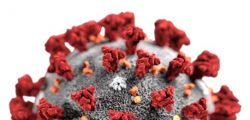
Consejos sobre el coronavirus COVID-19
Para que lo entienda todo el mundo: que pasa con el coronavirus COVID-19 ?
1- es obligatorio el frotarse las manos con un desinfectante al entrar en JG. En caso negativo, no se podrá acceder.
2- la distancia entre clientes en la sala de espera o en recepción o en caja será de 5 metros. Están bien señalizados los puntos.
3- en recepción y en caja sólo se atenderá en dos puntos bien definidos del mostrador, separados en más de 5 metros.
4- No está permitida la entrada a la tienda y sólo se podrán vender alimentos, sin acceder a ella.
5- en la consulta sólo podrá entrar un cliente con el paciente. Se atenderá siempre con las puertas de la consulta abiertas.
6- se suspende el programa de esterilización de gatos callejeros.
7- no podrán acceder personas que no sean clientes, por ejemplo, para sacarse café de la máquina.
8- en caja, en recepción y en consultas se trabajará con mascarilla y guantes.
9- están prohibidas las charretas, corrillos y demás sálvame de luxe en sala de espera, consultas, recepción, tienda y caja.
10- están prohibidas las visitas a hospitalizados en grupo. Sólo podrá acceder una persona cada vez.
11- para consultas no urgentes al veterinario se dispone de la web coronavirus.vetjg.es (sólo disponible para nuestros clientes).
12- está prohibida la entrada de los voluntarios de la protectora JG.
13- está prohibida la entrada de personal de mantenimiento, proveedores y repartidores.
14- se ha realizado mailing por SMS a todos los clientes con estas normas y consejos sobre el coronavirus humano.
15-ponemos a disposición de las autoridades sanitarias nuestras instalaciones y todo el equipamiento y aparataje diagnóstico y terapéutico que disponemos en nuestro hospital para su uso en caso necesario, así como todo el material fungible que disponemos en él, además de nuestra ayuda humana como sanitarios que somos.
16- se entregarán estas normas por escrito a todos los clientes que nos visiten.

Consejos sobre el coronavirus COVID-19
Para que lo entienda todo el mundo: que pasa con el coronavirus COVID-19 ?
Consejos sobre el coronavirus COVID-19

Medidas de protección de nuestros empleados y de nuestros clientes en el Hospital Veterinario JG
Para que lo entienda todo el mundo: que pasa con el coronavirus COVID-19 ?
- Tranquilo, no hay evidencia científica de que el coronavirus COVID-19 se transmita a las mascotas o por las mascotas. Sin embargo es muy contagioso entre personas.
- Evite compartir espacios cerrados con otras personas, evitar grandes esperas en las colas de los supermercados, etc..
- Lávese las manos con alcohol rebajado con agua cuando entre su domicilio.
- No tocarse ojos, nariz y boca.
- Cubrirse al toser o estornudar con pañuelos desechables.
- Permanezca en su casa si no se encuentra bien o si tiene tos, fiebre y dificultad para respirar. En este caso puede llamar al teléfono 900-300-555 para que le ayuden telefónicamente y le digan si debe acudir o no a algún centro médico para que le atiendan.
- No acuda a centros sanitarios si sus síntomas son leves (podría contagiarse allí).
- Ya algo personal: si se encuentra bien, si las autoridades sanitarias se lo permiten y si el tiempo acompaña, quizá sea el momento de salir al monte a respirar aire puro con fragancias de las plantas aromáticas y a hacer ejercicio. (Edito: acaban de prohibirlo desde el próximo domingo 15-3-2020)
- Durante todo este mes de marzo, si no es urgente la asistencia de su mascota, para evitarse desplazamientos, como cliente JG puede consultar on-line a su veterinario gratuitamente cualquier duda:
- Contactar con Juan.
- Contactar con Jose.
- Contactar con Mar.
- Contactar con Jota.
- Contactar con Geno.
- Contactar con Aitor.
- Permaneceremos como siempre al pie del cañón en el hospital JG ABIERTOS LAS 24 HORAS para atenderle en caso urgente.
- en esta web introduciremos actualizaciones sobre el coronavirus humano.

Medidas de protección de nuestros empleados y de nuestros clientes en el Hospital Veterinario JG
Para que lo entienda todo el mundo: que pasa con el coronavirus COVID-19 ?
GRUPO JG: cuidamos de tu mascota, por eso cuidamos de tí.
Oferta de empleo para Auxiliar de Veterinario
WhatsApp y Skype para comunicarte con nosotros
 Los clientes de nuestro hospital ya disponen de otra herramienta para comunicarse con nosotros gratuitamente: Skype.
Los clientes de nuestro hospital ya disponen de otra herramienta para comunicarse con nosotros gratuitamente: Skype.
Como una imagen vale más que mil palabras, os ahorraréis muchas consultas si vemos en directo a vuestro amigo mientras hablamos.
Seguro que os gusta ¡¡¡
¿alguna vez has deseado que NO te toque la lotería?
Hoy nos han traido al enemigo público número uno.
un guepardo jugando
una mirada penetrante, perfecta, precisa, …
¿cómo dan besitos las rapaces?
Los sábados, ITV gratis para tu mascota
Cuando se hermanan el chico y la chica.
Cómo saber los hábitos del propietario de un perro, a la vista de su radiografía
Fuera de bromas, hay que tener mucho cuidado con nuestro mejor amigo, sobre todo si es glotón, tanto si es cachorro como si es adulto. Hay una larga lista de objetos no digestibles que puede ingerir, sobre todo si están impregnados con comida.
Mostramos algunos ejemplos:
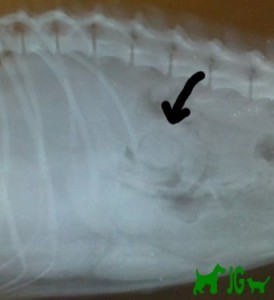
Almendra en intestino delgado de un foxterrier |

Una moneda de 1 Euro en el estómago de un caniche. |
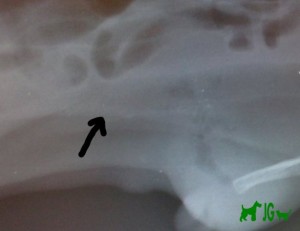
Palillo de madera, de comida china, en el peritoneo de un pinscher. |
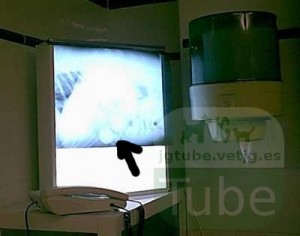 Dos pelotas de golf en el estómago de un rottweiler Dos pelotas de golf en el estómago de un rottweiler |
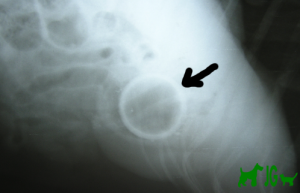
Pelota hueca en el estómago de un pastor alemán. |
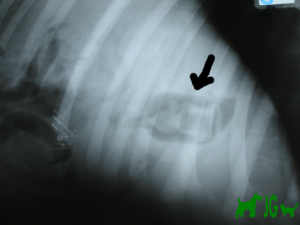 Huevo kinder (con sorpresa dentro) en el estómago de un bouvier Huevo kinder (con sorpresa dentro) en el estómago de un bouvier |

Tapón de corcho en el estómago de un pastor alemán (se muestra también el tapón una vez extraído) |
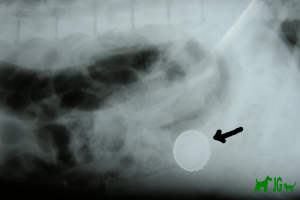
Tapón de una botella de cerveza en el estómago de un bull dog francés. |

Un clásico: «mi perro no come huesos». |
Si tenemos la suerte de presenciar la ingestión, debemos acudir al veterinario, ya que su extracción será muy fácil con la endoscopia, mientras permanezca en el estómago.En ocasiones el cliente no se dá cuenta, y acude con su perro al hospital con cuadro de malestar, vómitos, etc.. Pueden pasar varios días desde que ingirió el objeto hasta que aparezcan estos síntomas, incluso el hallazgo radiográfico puede ser casual, ya que si no pasa al intestino, puede permanecer varias semanas en el estómago sin dar síntomas.Afortunadamente, en pleno siglo XXI en el que nos encontramos, la resolución de todos los casos es satisfactoria. |
Peligros en el paseo por la playa: anzuelos. Hay que extraerlos con endoscopia.
Mientras que haya pescadores desaprensivos que dejen anzuelos a la orilla del mar, tendremos a nuestro perro expuesto a ingerirlos.
Afortunadamente gracias a la endoscopia podemos extraerlos fácilmente, sin necesidad de intervenir en el quirófano.
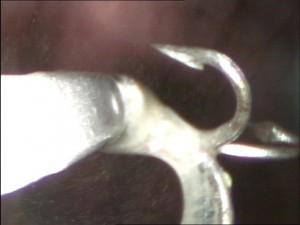 Imagen de una videoendoscopia: maniobrando para extraer un anzuelo del estómago de un pastor alemán. Imagen de una videoendoscopia: maniobrando para extraer un anzuelo del estómago de un pastor alemán. |
 otro anzuelo en la entrada del estómago de un caniche otro anzuelo en la entrada del estómago de un caniche |
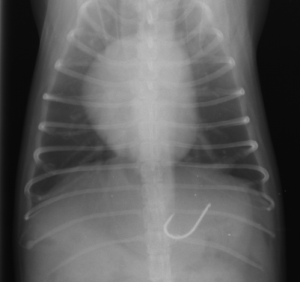 anzuelo en el estómago de un yorkshire anzuelo en el estómago de un yorkshire |

Sala de endoscopia |
Casi siempre el anzuelo viene acompañado por un hilo de nylon, el cual no se deberá cortar, ya que facilitará mucho su extracción por la endoscopia, ni tampoco se deberá tirar de él, ya que se podrá clavar aún más.
Tampoco hay que usar remedios caseros como dar espárragos y otra serie de imprudencias que vemos frecuentemente. Lo que hay que hacer es extraerlos lo antes posible mediante endoscopia.
En pocos minutos nuestro perro saldrá del hospital totalmente recuperado.
Asistiendo al parto de un loro gris
asistencia al parto de un loro gris
Una de las consultas más frecuentes que tenemos sobre loros es la distocia, esto es, la incapacidad para expulsar uno de los huevos.
La gran mayoría de veces la puesta se consigue con tratamiento farmacológico, pero cuando el tamaño del huevo es anormalmente grande, requiere de manipulaciones obstétricas, o sea, asistirle manualmente.
Este es el caso de Curra, un yako (también llamado loro gris africano o Psittaccus erithacus erithacus, pacientes muy populares en nuestro hospital)
Se procedió a la extracción del huevo atascado bajo anestesia general, y se le dieron a su propietario consejos y trucos clásicos para suprimir la puesta, y para evitar puestas posteriores.
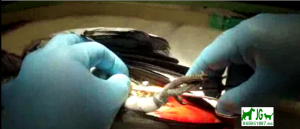 |
 |

extrayendo la cáscara una vez extraido el interior del huevo |
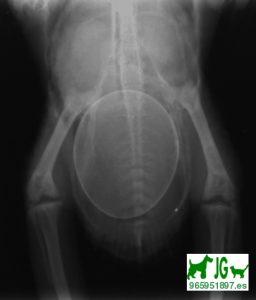 radiografía donde se aprecia la imposibilidad de que salga el huevo por sí solo debido a su tamaño radiografía donde se aprecia la imposibilidad de que salga el huevo por sí solo debido a su tamaño |
Ya no es una buena noticia: no se prohibirá la venta de perros y gatos en tiendas de mascotas.
 SEPTIEMBRE-2014: YA NO ES UNA BUENA NOTICIA.
SEPTIEMBRE-2014: YA NO ES UNA BUENA NOTICIA.
Resulta que ahora NO LO QUIEREN PROHIBIR.
¿ SERÁ POSIBLE QUE TENGAMOS QUE SEGUIR VIENDO A LOS CACHORROS COMO PELUCHES EN LOS ESCAPARATES ?
———————————————————
JUNIO-2014: El Ministerio de Agricultura, Alimentación y Medio Ambiente ya cuenta con un Borrador de Anteproyecto de Ley por el que se establece la normativa básica del comercio y la tenencia responsable de perros y gatos.
Según este borrador se PROHÍBE LA VENTA DE PERROS Y GATOS en los comercios del sector:
2. Queda prohibida la comercialización de animales en las tiendas de mascotas, así como su exhibición y exposición al público con fines comerciales.
Que lo aprueben cuanto antes ¡¡¡¡
Ayudaremos a disminuir la ingente cantidad de perros y gatos abandonados y que no tienen dueño.
Medicina de felinos: cuando es un gato un poco grande.
Cuando en la consulta aparece un felino «poco convencional» es mejor que si te hubiera tocado la lotería. Todo es igual que en los gatos, pero a lo grande.
Es impresionante la belleza de estos animales, y más impresionante es su manejo médico-quirúrgico.
En ejemplares adultos está en peligro la integridad del médico, por eso se manejan bajo sedación. En cachorritos,….. ver video al final…..
Algunas imágenes:
Ya está abierta la matrícula del Curso de Capacitación de Auxiliar Veterinario
ya tenemos abierta la matrícula ¡¡¡
Hemos realizado cambios en el curso, entre otros, hemos bajado el precio.
Visita la web para más detalles: http://curso-para-auxiliares-de-veterinario.vetjg.es
¿ tiene su loro todo lo que necesita ? (parte 1 de 3)
Las psitácidas, grupo de aves que comprende en general a todos los loros, periquitos, guacamayos, agapornis, etc.., son unas de las mascotas que están desplazando a los perros y gatos de los hogares, debido sobre todo a que requieren menor tiempo de atención por parte de sus propietarios y a sus escasos gastos de manutención.
Hay unos requisitos mínimos que el propietario de estas mascotas debe conocer. La mejor forma de cuidarles consiste en imitar su hábitat en la naturaleza. El 90% de las enfermedades que presentan se deben a los malos cuidados de sus propietarios, sobre todo en cuanto a su alimentación y a las condiciones psicológicas a las que están sometidos en la jaula.
A modo de resumen, se deben tener en cuenta los siguientes puntos:
Documentación. En el momento de la compra de cualquier psitácida tendrán que adjuntarle la factura oficial con el número de CITES y tendrá que guardarla durante toda la vida del animal. Es como su DNI y este código demuestra que ha sido adquirida legalmente, ya que la mayoría de especies están protegidas y tienen su comercio sometido a la legislación internacional de tráfico de especies protegidas.
Es muy recomendable implantarle un microchip, que se realiza con tan sólo una inyección, ya que a pesar de que lleve anilla, ya sea abierta o cerrada (en este caso se demuestra que ha sido criada en cautividad) puede ser retirada en caso de sustracción y no podremos demostrar la propiedad. Cualquier loro que no tenga su CITES se considera ilegal, pudiendo ser requisado por las autoridades en cualquier momento.
Alimentación. Además de las clásicas semillas de maiz, trigo, pipas de girasol, etc.. deberá aportarle frutas y verduras diariamente, tales como zanahoria cruda (para acostumbrarle intente ponerle zanahoria rallada los primeros días) y manzana o pera. Son muy frecuentes las sinusitis y otras enfermedades derivadas de la alimentación sólo con semillas, debido a que éstas son deficitarias en vitaminas, sobre todo en vitamina A.
Es recomendable colocarle las semillas de forma que el cueste algo conseguirlas (imitando así a su comportamiento en la naturaleza), colocándolas dentro de alguna malla o red metálica o de cuerda.
La mixtura de semillas es mejor que la adquiera en envase cerrado, debido a que las semillas expuestas en las tiendas a granel son manoseadas frecuentemente por el público y pueden ser vehículo de agentes infecciosos.
Se le debe ofrecer una vez a la semana frutas desecadas, y mensualmente se le puede ofrecer algún premio, tal como barritas de miel o frutas.
Debe controlar el sobrepeso, sobre todo si le suministra demasiados premios o demasiadas semillas grasas tales como las pipas de girasol o cacahuetes. Es frecuente encontrarnos con loros obesos. No se le deberá dar aguacate ni cebolla puesto que son tóxicas.
De vez en cuando se le debe ofrecer zumo de frutas (no cítricos) con una cuchara o jeringa, ya que es una fuente extra de vitaminas y además lo tomará como un juego. No se les debe dar queso, macarrones, pizza, hamburguesa y numerosos alimentos humanos: le acortarán la vida. Por ejemplo, un poco de chocolate puede matar a nuestro loro en cuestión de minutos. Existen alimentos en forma de croqueta (parecida a las de perros y gatos) que contienen todo lo que nuestro loro necesita, pero aún así, es necesario suministrarles frutas a diario .
.
Agua de bebida. Deberá cambiársela a diario, teniéndola siempre limpia. No medique el agua con vitaminas ni con antibióticos si no es estrictamente necesario. Debe evitar que el bebedero se ensucie con las deyecciones, colocándolo alejado de la percha.
Hábitat. La jaula debe ser lo suficientemente grande para que no se roce cuando estira las alas. No deberá colocarla en sitio excesivamente soleado, ni en corrientes de aire. Debe evitar la calefacción y el aire acondicionado. Nunca la coloque en la cocina o donde se emitan vapores tóxicos. Son bastante sensibles al humo del tabaco. Les alegra tener adornada la jaula con ramas o incluso hojas, ya que así se encuentran casi en su ambiente natural. Es recomendable dejarles salir de la jaula varias veces al día, ya que así estimulamos sus instintos naturales y evitamos problemas de comportamiento, tales como depresiones o picaje. No permita que pique o “chupe” objetos metálicos de adorno: son muy frecuentes las intoxicaciones por plomo, zinc y otros metales pesados. Es muy bueno que tomen el sol algunos minutos al día, no a través de un cristal, sino directamente.
Higiene de plumas. Una vez al día le colocará una bañera con agua (incluso en invierno) para que se bañe, retirándosela a los 20 minutos. Se le pueden recortar las plumas secundarias de un ala con el fin de no permitir el vuelo, práctica muy usual para loros que pasan la mayoría del tiempo fuera de la jaula, aunque no es recomendable, ya que una de las bellezas de estos animales es verlos volar.
Apache, uno de nuestros pacientes, campeón del Mundo
protectora de animales JG: atencion gratuita para animales sin dueño
Son muchos los clientes que llevaban tiempo sugiriéndonos que organizáramos una protectora de animales, debido sobre todo a la mala gestión de las presentes en el área de Alicante.
 Esperamos la colaboración de toda persona que desee ayudar a los animales sin dueño de forma desinteresada.
Esperamos la colaboración de toda persona que desee ayudar a los animales sin dueño de forma desinteresada.
Puedes apuntarte en su web: 965951897.es
Todos los servicios de nuestro hospital de Mutxamel son gratuitos.
el consultorio por internet… a pleno rendimiento
[usuario desconocido] 2012-12-29
17:59:27 como les contaba el conejo con maloclusion de todos los molares, tenia todos los cuidados y los mejores, la jaula se limpiaba integramente todos los dias, la comida se le ponia fresc: tanto el alimento balanceado, como la alfalfa como la fruta, varias veces al dia se le ponia fresca y era renovada, al igual que el agua, y practicamente cada 15 dias era control en el veterinaria, sin embargo tuvo esos problemas en todos los molares, porque segun los veterinarios era una raza creada geneticamente para carne, no para vivir largo tiempo(neozelandes y californiano)…yo lo que quisiera saber es si teniendo todos estos cuidados, todas las razas son geneticamente propensas a eso, o hay razas que con los cuidados estos, tienen menos probabilidades de desarrollar maloclusion de molares????? . . . . . . . . . . . . su respuesta en conejos.vetjg.es
ya son centenares de preguntas las que estamos contestando en el chat de amigos JG.
guia de enfermedades de los peces
catálogo de enfermedades de los peces
 Ya hemos incorporado en la web de los amantes de los peces, el catálogo de enfermedades.
Ya hemos incorporado en la web de los amantes de los peces, el catálogo de enfermedades.
Catálogo de especies exóticas invasoras
Se acaba de publicar el catálogo de especies invasoras
 Hace unos días se publicó en el Boletín Oficial del Estado (BOE) el listado de especies exóticas invasoras.
Hace unos días se publicó en el Boletín Oficial del Estado (BOE) el listado de especies exóticas invasoras.
Estos animales y plantas que no son de la fauna o flora españolas compiten con nuestros animales y plantas autóctonos, pudiendo hacerlos desaparecer.
Se prohíbe además del tráfico o venta, la posesión de determinadas especies como mascotas o adorno.
……………………….. Podéis leer el BOE aquí y comprobaréis al final del mismo el amplio surtido de animales y plantas.
Protegido: El mono titi pincel blanco Saguinus oedipus. Guía de cuidados. parte 4 de 4: CUIDADO VETERINARIO. INVESTIGACION. REFERENCIAS
Protegido: El mono titi pincel blanco Saguinus oedipus. Guía de cuidados. parte 3 de 4: MANTENIMIENTO EN CAUTIVIDAD. NUTRICION
Protegido: El mono titi pincel blanco Saguinus oedipus. Guía de cuidados. parte 2 de 4: ORGANIZACION SOCIAL. REPRODUCCION. DESARROLLO DE INFANTES
El mono titi pincel blanco Saguinus oedipus. Guía de cuidados. parte 1 de 4: INTRODUCCION. HISTORIA NATURAL
 Introducción. Historia Natural
Introducción. Historia Natural
MONO TITI CABECIBLANCO Saguinus oedipus
Preparado por: Anne Savage, Ph.D.
Coordinador SSPã Mono Tití Cabeciblanco
Traducido por: Amparo Zapata Alcalde, Biol.
MANUAL PARA EL CUIDADO DEL MONO TITI CABECI BLANCO
El propósito de este manual es proporcionar una guía para el mantenimiento y exhibición del Mono titi cabeciblanco en cautividad. Nosotros damos una información general del Mono titi cabeciblanco en el medio silvestre, en instituciones de investigación, y en zooloógicos. En el momento en que nueva información llegue a ser disponible, nosotros estaremos enviando los últimos capítulos para su manual. Por favor siéntanse en libertad de darnos alguna información adicional o comentarios que puedan ser útiles para futuras revisiones. La dirección para preguntas y comentarios es:
Anne Savage, Ph. D.
Disney’s Animal Kingdom
Conservation Station Administracion
P. O. Box 10,000
Lake Buena Vista,. Florida 32830-1000
Agradecimientos
Este manual fué escrito en parte por mienbros de Mono titi cabeci blancos SSP ã Grupo de manejo. Especial agradecimientos a Linda Pastorello, Stacey Johnson, Bill Langbauer, Candy McMahon, Ron Cline, Mike Quick, Mike Coker, Anne Dottore, Gerry Aquilina,
Anthony Brownie, Ingrid Porton, por su valiosa información y revisión de este manual. Material adicional para los capítulos fué suministrada por Dara Zirofsky, Parviez Hosseini, Julie DeCubellis, Nicollete Zarday, y Yvonne Federowitz. El capítulo de veterinaria fué escrito por Melinda Franceschini, con la útil información y revisiones de Vicent Seccareccia, D.V.M., David Lee-Parritz, D.V.M., James Cooley, D.V.M., y Charles Sedwgwick, D.V.M. La cubierta fué diseñada por Michael Stone. Dara Zirofsky merece nuestros sinceros agradecimientos por proporcionar invaluable asistencia y paciencia escribiendo, editando y coordinando la completación de este manual. Este proyecto fué financiado por Institute of Museum Services General Operating como soporte al Roger Williams Park Zoo.
I Historia Natural
* Mono titi cabeciblanco son pequeños primates que pesan entre 400-700 g y son de aproximadamente 23.07 cm de longitud (incluyendo la cola)
* Mono titi cabeciblanco es una especie en peligro de extinción, endémico del norte-oeste de Colombia
* Las principales amenazas para la existencia del Mono titi cabeci blanco en el medio silvestre incluye, la destrucción del hábitat, la caza, y el mercado de mascotas.
* Mono titi cabeciblanco ha sido un importante modelo para investigaciones biomédicas porque es el único primate que desarrolla adenocarcinoma de colon en cautividad.
Introducción
Aunque el Mono titi cabeciblanco es abundante en cautividad con poblaciones tanto en zoológicos como instituciones de investigación por todo el mundo (Tardif, 1989), este es uno de los primates con más peligro de extinción en su hábitat nativo de Colombia. Encontrado solamente en el norte-oeste de Colombia, Mono titi cabeciblanco es continuamente amenazado por la destrucción de su hábitat, por la captura para el mercado de mascotas tanto local como internacional y para la industria biomédica (Mast & Patiño, 1988). A finales de 1960 y a principios de 1970 entre 20.000-40.000 Monos titi cabeciblancos fueron importados para los Estados Unidos para uso de investigaciones biomédicas (Hernández Camacho & Cooper, 1976) .En 1973, la especie fué declarada en peligro de extinción y la exportación fué cancelada. Mono titi cabeciblanco es una de las especies de primates más importantes como modelo de investigaciones biomédicas y ha sido usado en estudios de Epstein-Barr virus de colitis y cáncer de colon. sin embargo el uso principal en la comunidad biomédica ha sido el estudio de adenocarcinoma de colon como este es el único modelo, de primate parecido a los humanos que espontáneamente desarrolla colitis y cáncer de colon. (Clapp, 1993).
Mono titi cabeciblanco es solamente una de las muchas especies en peligro de extinción encontradas en Colombia. Resaltando la importancia de esta especie en programas educativos y campañas al público que puedan generar soporte para la conservación de los recursos naturales de Colombia.
Taxonomía
Los Callitrichidae comprende la más diversa familia de primates del nuevo mundo con 32 especies. Callitricidos son los más pequeños primates del nuevo mundo, tienen cola no prénsil, poseen garras en vez de uñas y se mueven como un cuadrúpedo (Hershkovitz, 1977 ). Todos los callitricidos carecen de un par de molares que están presentes en otras especies de primates del nuevo mundo. En adición Callithrix y Cebuella pueden ser diferenciados en la base de la dentición de Saguinus y Leontopithecus. Solamente Callithrix y Cebuella tienen cortos colmillos más abajo de los dientes anteriores permitiéndoles perforar la corteza de los árboles y asi inducir el flujo de exudados (goma y savia) los cuales son importantes fuentes alimenticias. En contraste, Saguinus y Leontopithecus tienen colmillos largos configuración dental en la cual los caninos son mucho mas largos que los incisivos.
De las 12 especies de tamarinos dentro del género Saguinus (Mittermeier et al. , 1992 ; Mittermeier& Coimbra-Filho, 1981 ), Snowdon y Soini (1988) han dividido tamarinos en dos grupos, el Hylaen (o Amazónico) y el extra amazónico. Más tarde el grupo tamarinos trans Andino incluye tres taxas ( S. geoffroyi, S. oedipus, y S.Leucopus), todos los cuales son encontrados en Colombia.
Con respecto a la taxonomía de S. oedipus y S. geoffroyi ha habido considerable discrepancia. Hersgkovitz (1977) describe a ambos, al Mono titi cabeciblanco y el tamarino Panameño como subespecies de Saguinus oedipus (S. o. oedipus y S o. geoffroyi respectivamente), y Hernández Camacho y Defler (1983; 1985 ) han sugerido también que estas dos taxas estan dentro de una superespecie. Sin embargo, reportes de Skinner (1991 ) y Rosenberger (1992 han sugerido que la opinión más aceptada es que ambas taxas son especies diferentes (ver Mast et al., 1993 para una completa revisión). Skinner (1991) sugiere que cuando la distribución geográfica y ecológica relacionada con las variedades es pobremente conocida, como en el caso de Mono titi cabeciblanco y del tamarino Panameño, los taxonomistas deben recurrir a otros métodos, tales como comparaciones morfológicas. Skinner (1991) comparó 17 características morfológicas pertenecientes S. geoffroyi, S. leucopus, y S. oedipus. Ella encontró que S. leucopus y S.oedipus están más cercanamente relacionados que la especie de S. geoffroy Además, ella concluye que S.oedipus y S.geoffroyi fueron dos especies separadas. Es también importante anotar que solamente S.oedipus desarrolla espontáneamente cáncer de colon.
Descripción Física
La larga melena de cabello blanco en su cabeza le da el nombre apropiado del Mono tití cabeciblanco. Machos y hembras no son sexualmente dimórficos, pesando aproximadamente de 404-417 g. en el medio silvestre, a 565-700g. en cautividad (Savage, 1990; Savage et al.,1993). Rodilla a talón miden (M=7.26 cm ) y cabeza -cola miden (23.07 cm )
La apariencia del Mono tití cabeciblanco es similar tanto en el medio silvestre como en cautividad (ver Savage, 1990 para una completa revisión). La cara del Mono tití cabeciblanco es negra , en los lados de la cabeza en las sienes están cubiertas de pelo plateado. La cara esta adornada con una grisácea o blanquecina banda supraorbital, con un flequillo grisáceo que cruza el hocico hasta la comisura de la boca. En la parte media frontal tiene una cresta blanca. La superficie dorsal del cuerpo es principalmente negra o marron mientras que las partes bajas del cuerpo, brazos y piernas son predominantemente blancas (Hershkovitz, 1977).
Morfología de las glándulas odoríferas
Las hembras del Mono tití cabeciblanco tienen bastante desarrolladas glándulas odoríferas anogenitales y suprapúbicas. Hembras tienen más grandes glándulas odoríferas que los machos. Perkins (1969) reportó que los rollos secretorios de las glándulas cebáceas apocrinas y los ductos secretorios asociados con estas unidades están más desarrollados en las hembras El grosor de la piel de las glándulas también difiere entre machos y hembras, con glándulas cebáceas observadas aproximadamente a 1.6 mm por debajo de la superficie de la piel en hembras, pero en los machos están a una profundidad de 0.4 mm. El área total de las gándulas odoríferas en hembras del Mono tití cabeciblanco esta dentro del rango de 7.89-8.31 cm (Savage et al.,1988).El uso de las glándulas anogenitales y suprapúbicas difieren entre machos y hembras.
Distribución
Mono tití cabeciblancos son encontrados solamente en Colombia, desde la orilla Este del Río Atrato, la orilla Este del Río Cauca, y el bajo Magdalena limitado por la costa Norte del Caribe colombiano. Por el sur, el rango de distribución propuesto por Mast et al., (1993) siguen los 1500 m contados desde el Este hacía el oeste empezando en el Río Cauca y cruzando la Serranía de Ayapel y la Serranía de San Jerónimo (Hernández- Camacho y Defler, 1983; 1985; Hershkovitz, 1977) ( Figura 1 ).
Amenazas para la supervivencia del Mono tití cabeciblanco en el medio silvestre
Colombia es uno de los países con mayor diversidad biológica y el segundo después de Brasil con mayor número de especies de plantas y animales. Dado su tamaño (1/7 de Brazil), Colombia es un gran refugio de concentración de especies por unidad de área, más que cualquier otro país en el mundo (Alderman , 1989; Mast et al.,1993; Mittermeier & Mast, 1990). Una de las más grandes amenazas para el Mono tití cabeciblanco y para la biodiversidad colombiana es la destrucción del bosque. Colombia esta entre los 10 primeros países con mayor deforestación, siendo sobrepasado por Brazil, en el hemiferio oeste, en términos de números de hectáreas deforestadas. Cada año más de 4000 km de hábitat tropical es destruido (Myers, 1989).
Amenazas para el Mono tití cabeciblanco y muchas otras especies de primates de Colombia, pueden ser caracterizadas por la directa presión de ellos para con ellos mismos (ejemplo: caza y captura viva ) o peligros asociados con la pérdida del hábitat (Mast et al.,1993; Mittermeier.et al., 1989) En la parte norte del rango de distribución del Mono tití cabeciblanco la mayor parte del bosque que ha sido destruído ha sido en gran escala dedicado a la agricultura y la ganadería. El remanente de bosques en esta parte del país esta ligado generalmente a tierras no útiles para la agricultura ( por ejemplo piedra caliza, o márgenes de los ríos que son inundables en determinadas épocas del año) (Mast et al., 1993).
Parte del hábitat del Mono tití cabeciblanco que corresponde a pequeñas montañas en la parte norte oeste de la codillera Andina y Central, enfrenta el problema de la recolección de leña y la agricultura a pequeña escala. Sin embargo la mayor eminente amenaza para la selva es originada por los proyectos hidroeléctricos (ver Mast et al., 1993 para una completa revisión ).
El 70% de la energía eléctrica de Colombia es hidroeléctrica, pero solamente el 6% del potencial hidroeléctrico del país ha sido explotado hasta hoy. Si los proyectos hidroeléctricos de Colombia fuesen completados inundarían miles de hectáreas de ecosistemas de alta diversidad. Solamente un proyecto hidroeléctrico propuesto como URRA (comprende URRA I y URRA II ) puede inundar mas de 60.000 hectáreas en la cuenca alta del Río Sinú. Esta área incluye más de 54.000 hectáreas de bosque primario y secundario que están dentro del Parque Nacional Natural de Paramillo el cual es una zona que alberga una alta población del Mono tití cabeciblanco (Mast & Cubberly, 1987; Mast & Patiño,1988; Mast et al.,1993; Ramirez Cerquera, 1985 ).
Afortunadamente, comparado con otros países, un sector de la población colombiana se ha opuesto al desarrollo de proyectos hidroeléctricos, por sus impactos negativos ambientales y sociales. Recientemente el Banco Mundial ajustó el préstamo (préstamo 2889-CO) de la agencia de la central eléctrica colombiana (ISA) y las ocho regionales afiliadas tienen un programa donde se intenta minimizar el impacto ambiental de la expansión hidroeléctrica bajo el Plan Nacional de Expansión de la central eléctrica (Mast et al.,1993). Se han desarrollado metodologías para mayor efectividad en los proyectos, para minimizar los efectos adversos socioeconómicos y ambientales, para proporcionar entrenamiento al equipo de la central eléctrica y para desarrollar criterios medioambientales más estrictos para proyectos hidroeléctricos y termales (Mast et al.,1993). Mast et al., (1993) provee una descripción detallada del proyecto hidroeléctrico propuesto y su probable impacto sobre los recursos naturales de Colombia.
En adición, al drámatico impacto de la destrucción forestal que tiene sobre el futuro de la supervivencia de estas especies, la captura para el comercio interno de mascotas o su exportación, tiene y continua teniendo, un impacto en la sobrevivencia del Mono tití cabeciblanco. Entre 1968 y1972 tanto como 14.000 Cotton-top fueron importados por Estados Unidos y entre 30.000-40.000 fueron exportados de Barranquilla, Colombia entre 1960-1975 (Hernández-Camacho & Cooper, 1976).El número de Mono tití cabeciblanco capturados del medio silvestre durante este periódo es probablemente más alto que el número dado de animales que han muerto durante captura o exportación.
A pesar que en 1973 fue negada la exportación de Saguinus oedipus y el ser enlistado en Apendice I de CITES, la importación del Mono tití cabeciblanco a los Estados Unidos continuo en pequeña cantidad, la mayoría transportados a través de países como Panamá ( Mack & Mittermeier & Coimbra-Filho, 1983; Thorington, 1972). En Colombia aún existe mercadeo para Mono tití cabeciblancos (Mast & Cubberly, 1987; Mast & Patiño,1988). Comerciantes de fauna silvestre están constantemente vendiendo Mono tití cabeciblancos como mascotas y pueden ser metidos de contrabando a otros países (Barbosa et al., 1988). como Mast et al., 1993 expresa, «No teniendo leyes contra lo contrariosi existe la manera de hacer dinero a través de la captura y venta de especies silvestres, allí existirá alguien deseoso de asumir el riesgo para ganar dinero. La mejor manera para reducir la amenaza es eliminar totalmente la demanda de captura de animales silvestres.» (p.37)
PARTE 1 : INTRODUCCION. HISTORIA NATURAL
PARTE 2 : ORGANIZACION SOCIAL. REPRODUCCION. DESARROLLO DE INFANTES
Cuerpos extraños en el perro: atención veterinaria urgente.
 La ingestión de cuerpos extraños (CE) en perros es bastante frecuente. Sin embargo su estancamiento en el esófago es poco frecuente. Y aún mucho menos frecuente es que estos cuerpos extraños correspondan a carne, como fué ano
La ingestión de cuerpos extraños (CE) en perros es bastante frecuente. Sin embargo su estancamiento en el esófago es poco frecuente. Y aún mucho menos frecuente es que estos cuerpos extraños correspondan a carne, como fué ano che el caso de un yorkshire terrier que atendimos en nuestro hospital, y cuya radiografía mostramos, observando la bola de carne (CE) en el esófago torácico, encima del corazón. El tamaño del trozo de carne, estancado en el esófago, superaba en más de 8 veces el tamaño del cardias (apertura que comunica el esófago con el estómago), de ahí que no pudiera pasar al estómago para su digestión.
che el caso de un yorkshire terrier que atendimos en nuestro hospital, y cuya radiografía mostramos, observando la bola de carne (CE) en el esófago torácico, encima del corazón. El tamaño del trozo de carne, estancado en el esófago, superaba en más de 8 veces el tamaño del cardias (apertura que comunica el esófago con el estómago), de ahí que no pudiera pasar al estómago para su digestión.
El paciente acudió con signos de intentos repetidos de vomitar y cianosis (respiraba mal) causada por la inhalación de la espuma generada por el reflujo del esófago, que inundó el árbol respiratorio del paciente, impidiéndole respirar bien. Gracias a que el propietario (en la foto, mostrando su agradecimiento) acudió rápidamente al hospital con su perro, al que se le realizó una endoscopia de urgencia, el yorkshire se recuperó rápidamente.
Los tipos de cuerpos extraños que puede ingerir un perro son muy variados: monedas, agujas, anzuelos, (foto 4), pelotas (foto 3), chapas de botella (foto 2), tapones de corcho y de plástico, e incluso slips (foto 1) ó huevos «kinder sorpresa» (foto 5, en este caso con el juguete dentro del huevo sorpresa). Gracias a la endoscopia, la cual se debe realizar lo antes posible, se pueden extraer la mayoría de estos objetos del cuerpo del perro, evitando así intervenciones quirúrgicas complicadas, pudiendo abandonar el paciente el hospital en pocas horas, sin ninguna cicatriz ni puntos.
La endoscopia consiste, básicamente, en introducir un tubo con una cámara de televisión por cualquier apertura o cavidad corporal del perro. Este tubo también lleva incorporadas unas pinzas para agarrar al objeto en cuestión y poder extraerlo por dicha apertura.
Feeding and caring for Gerbils at home
By Domingo García
Gerbils are clean animals that are relatively odourless with a natural curiosity and easy to handle.
They are very friendly and will climb onto your hand without any problem to take food even though you don’t have to handle them too much.
Their livers are mainly nocturnal but they do leave their nests if they hear a noise that worries them.
Gerbils are able to retain water but this does not mean that you do not have to give them water on a regular basis.
An important factor in caring for gerbils is the temperature they are kept at. Although they can survive at 30C, the ideal ambient temperature for them is between 17-22C with a humidity level of not more than 50% otherwise their fur will turn greasy.
They are able to live together, especially if they have been brought up together but they are known to fight and females are more aggressive than males.
It is advised to house gerbils in either metal cages or fish tank-style containers that have plenty of ventilation. If a metal cage is to be used make sure the space between the bars is not too wide because gerbils are very agile and can squeeze through small gaps.
The flooring of the cage should be of an earthy-type material because gerbils like to burrow and their nest should ideally be made of paper. Avoid using materials with artificial fibres as these can be ingested and cause respiratory or digestive problems.
The use of sand is also not recommended as this can cause abrasions to the animals face.
Feeding gerbils is straight forward. You can use a mix of seeds that contain protein granules and the diet can be supplemented with fresh vegetables.
Gerbils also like oily seeds such as sunflower as well as dried fruits which can be given as treats rather than as part of their regular diet because this could cause osteoporosis if their calcium intake levels drop, which in turn could lead to bone fractures or deformities.
The dog’s ancestors
Dogs were domesticated from the gray wolf about 15,000 years ago
Evolution and domestication
 Dogs were domesticated from the gray wolf about 15,000 years ago. They perform many roles for people such as hunting, herding, protection, assisting police, companionship, and, more recently to assist handicapped people.
Dogs were domesticated from the gray wolf about 15,000 years ago. They perform many roles for people such as hunting, herding, protection, assisting police, companionship, and, more recently to assist handicapped people.
In 2001 there were an estimated 400 million dogs in the world. Over the 15,000 years the dog has been domesticated, the dog has developed into hundreds of different types through selective breeding by humans and shows more behavioural and morphological variation than any other land mammal.
Origins
Dog is the commonly used term that refers to members of the Canis lupus, or «true dogs», including the wolf, coyote (canis latrans) and the jackal (canis aureus) whose main representative is the Golden Jackal, the dingo (canis dingo) and the domestic dog (canis familiaris). Wolves in North America or Eurasia appeared when the two continents were connected by the Bering Strait and from there spread to the American continents, Europe and Asia eventually reaching the south of India, Arabia and northern Mexico. There is evidence that the jackals originated in North Africa and from there spread to the south and west, reaching the Malaysian peninsula as well as India and Arabia, where they coexist with wolves. The coyote is isolated geographically from the jackals, but not the wolves and only inhabit the Americas. Consisting of a single species that originated recently (about 500,000 years ago) and was formed from a few packs of wolves that were left behind after the last Ice Age. The dingo is the Australian representative of the genus Canis, although there is evidence that in fact it was a feral dog, which reached the Australian continent from Asia, alongside the first natives. This genre would originate from a subspecies of the wolf called Canis lupus pallipes. There are several theories about the origin of the domestic dog the most accepted being that they are the direct descendants of the wolf. However the influence of other species in the evolution of the domestic dog may be considered more than a suspicion, at least in some breeds. You can see in the enormous genetic variability present in today’s domestic dog, for example the differences between the Chihuahua and the St. Bernard, that there can only have been a multifaceted origin or it was at least heavily influenced by other species.
Domestication
Wolves and their dog descendants would have received significant benefits from living in human camps…more safety, more reliable food, lesser caloric needs, and more chance to breed. Humans would also have benefited enormously from the dogs associated with their camps. For instance, dogs would have improved sanitation by cleaning up food scraps. They would have alerted the camp to the presence of predators or strangers, using their acute hearing to provide an early warning. Anthropologists believe the most significant benefit would have been the use of dogs’ sensitive sense of smell to assist with the hunt. The relationship between the presence of a dog and success in the hunt is often mentioned as a primary reason for the domestication of the wolf. The dog was our first pet, as manifested by the numerous rock paintings found in various latitudes showing hunting scenes. The first two contributions to man’s way of life were: the aforementioned cooperation in hunting and the protection of the camps. At this point arose the need for two types of dogs.
One light, brave, with good sense of smell, obedient and with the aptitude to race… the Canis familiaris leinieri, ancestor of the hound. Another, heavier, stronger, good hearing, which would correspond with the modern guard dogs whose ancestry is Canis familiaris inostranzewi. This was soon followed by the domestication of sheep, which required a Shepherd type dog. The shepherd dog needed to be lightweight, extremely intelligent, and above all to have lost the instinct of aggressiveness towards cattle and sheep… their ancestor was the Canis familiaris metris-optimae.
Independently, in the northernmost regions the Canis familiaris palustris formed which evolved into the modern sled dogs. In modern times the most widespread form of interspecies bonding occurs between humans and dogs and the keeping of dogs as companions. In the 1950s and 1960s, dogs were kept outside more often than they tend to be today being primarily used as a guard, children’s playmate, or walking companion.
Since then there have been huge changes in the role of the pet dog, such as the increased role of dogs in the emotional support of their owners. People and dogs have become more and more integrated in each other’s lives, to the point where pet dogs actively shape the way a family and home are experienced.
This article was published in Costa Blanca News.
The hamster as a pet
The word ‘hamster’ comes from the German word ‘hamstern’ which means ‘to hoard’.
 Zoological Classification
Zoological Classification
- Kingdom: Animal
- Class: Mammal
- Order: Rodentia
- Family: Muridae
- Subfamily: Cricetinae
Originating in Europe, Middle East, North Africa, China and Siberia.
Syrian or golden hamster – Mesocricetus auratus
Chinese hamster – Cricetulus griseus
European hamster – Cricetus cricetus
Dwarf hamster djungariana/Russian / songoru- Phodopus sungorus
Roborovskii dwarf hamster – Phodopus roborovskii
In the wild the golden brown-red colour develops with dense, short hair. The domestic hamster descended from three siblings, one male and two females located in Syria in 1931. There are many different species of hamsters throughout the world and most The hamster as a pet hamsters inhabit semi-desert areas where they live in burrows. These burrows consist of many tunnels and separate chambers including chambers where the hamster will store food and sleep. Hamsters are nocturnal, sleeping during the hot days and waking in the cooler evenings. They have very poor eyesight but a keen sense of smell and excellent hearing. Most species of hamsters have expandable cheek pouches in which they can carry food and bedding back to their burrow where they will store food. The word ‘hamster’ comes from the German word ‘hamstern’ which means ‘to hoard’.
Maintenance
There are a huge variety of cage styles and sizes and which one to choose can be confusing. Make sure you choose one that is appropriate for the size of hamster you are choosing as well as one that is easy to clean. Also make sure you have cage accessories such as bedding, an exercise wheel, and a cozy sleep hut picked out. A variety of products made out of cotton or similar materials are marketed as nesting material. However, there are potential problems with using some of these products. Many commercial nesting materials are actually made up of very small threads or fibres. These threads can sometimes get wound around little hamster toes and cause injuries. Also, if your hamster eats some of these bedding, the fibres may not be digestible. While the risks are small, there are easier alternatives. Simply use undyed and unscented toilet paper, facial tissue, or soft paper towels. You can shred these a bit but you can let your hamster finish shredding them and crafting them into a soft cozy nest.
A good exercise wheel will help keep your hamster healthy. In the wild, hamsters would travel miles every night in search of food, and some hamsters in captivity have been reported to run up to 8 km per night on their exercise wheels. Hamsters need lots of exercise and most pet hamsters love to use exercise wheels. The best kind of hamster wheel has a solid surface that either attaches to the side of the cage or is free standing. The common wire wheel that looks like a ladder wrapped into a circle with side bars for support is not the best choice as it can cause injuries. Hamsters need to be able to chew. For chewing, a variety of wood structures and toys will help keep your hamster’s teeth in shape. Hamsters also tend to like playing with tubes and tunnels and things they can climb on.
Excessive cleaning of the cage can cause stress to the animals as it alters the territorial markings. The cage should be cleaned weekly by removing the hamster from the cage and throwing away old bedding and food. However, your pet will appreciate it if some of its old bedding is placed in the clean cage along with the fresh bedding.
Food
Your pet hamster requires a fairly regular diet consisting of proteins, vitamins and minerals. Your pet will be quite happy to be fed about once a day, usually in the early evening, when it is starting to wake up.
Recommended 5-10 grams a day with a 16-24% protein, 60-65% carbohydrate, 5-7% fat. It is recommended to supplement the diet with seeds, grains, fruit and vegetables to provide variety without unbalancing the intake of nutrients. Hamsters need a regular supply of fresh water. You should either provide a water bowl filled with fresh water daily, or you can use a small animal water bottle.
Handling
The most important thing you need to know is that hamsters are nearsighted and have very limited view. Hamsters only bite if scared or uncomfortable. You can move them with your hands or if they are aggressive with a container (empty and clean). Be careful when you pick up a hamster that is asleep, to wake up abruptly can cause them to bite.
Anatomy
Hamsters have poor eyesight; they are nearsighted and colorblind. However, they have an acute sense of smell and can hear extremely well. Hamsters can use their sense of smell to detect gender, locate food, and detect pheromones. They are also particularly sensitive to high-pitched noises and can hear and communicate in the ultrasonic range. One characteristic of rodents that is highly visible in hamsters is their sharp incisors. They have two pairs in the front of their mouths and these incisors never stop growing and thus must be regularly worn down. Hamsters carry food in their spacious cheek pouches to their underground storage chambers. When full, their cheeks can make their heads double (or even triple) in size. Have an odoriferous gland that serves for marking territory, individual identification and possibly sexual attraction.
General data on the golden hamster
Average life: 2-3 years
Body length: 9-18 (as races)
Adult female weight: 90-180g
Adult male weight: 80-140g
Birth weight: 1.5-3g
Daily water intake: 12-30ml
Daily food consumption: 10-15g
Breeding: Hamsters become fertile at different ages depending on their species, but this can be from one month to three months of age. The female’s reproductive life only lasts about 18 months, but male hamsters remain fertile much longer. Females are in heat approximately every four days, indicated by a reddening of genital areas.
Hamsters are seasonal breeders. Breeding season is from April to October in the northern hemisphere, with two to five litters of 1 to 13 young being born after a gestation period of 16 to 23 days. Golden hamster females are also very aggressive toward male hamsters and must be separated immediately after breeding in order to prevent an attack. Female hamsters are also particularly sensitive to disturbances while giving birth and may even eat her own young if she thinks they are in danger, although sometimes she is just carrying the pups in her cheek pouches. Hamsters are born hairless and blind in a nest that the mother will have prepared in advance. After one week they begin to explore outside the nest. They are completely weaned after three weeks, or four for Roborovski hamsters.
This article was published in Costa Blanca News.
Como crear una pequeña reserva natural y disfrutar de ella
 Es muy fácil, si queremos disfrutar viendo muchas especies animales en nuestro jardín o en nuestra casa de campo tenemos que procurar que haya comida y agua. El agua, de la lluvia a ser posible, se conserva en algún estanque, de pequeña profundidad, que improvisemos con algún plástico impermeable. Este agua es necesaria para un sinfín de especies, vertebrados e invertebrados.
Es muy fácil, si queremos disfrutar viendo muchas especies animales en nuestro jardín o en nuestra casa de campo tenemos que procurar que haya comida y agua. El agua, de la lluvia a ser posible, se conserva en algún estanque, de pequeña profundidad, que improvisemos con algún plástico impermeable. Este agua es necesaria para un sinfín de especies, vertebrados e invertebrados.
Pero para darle más vida animal a nuestro terreno necesitamos empezar por abajo de la pirámide alimentaria: necesitamos tener plantas. Para ello colocaremos unas semillas (alpiste, cañamones, mijo, etc..) o mejor aún, haremos una pequeña siembra. Estas plantas y sus semillas traerán un ejército de insectos, por tierra y aire, que a su vez serán fuente de alimento de aves, reptiles y pequeños mamíferos, los cuales a su vez servirán de alimento para otras aves, otros reptiles y otros mamíferos, y asi sucesivamente. En poco tiempo tendremos muy cerca de nosotros a numerosas especies de pájaros insectívoros como el petirrojo o el herrerillo, pájaros granívoros como el verdecillo, el jilguero, etc.., un ejército de hormigas, cucarachas, gusanos, lagartijas, etc.., todos ellos fuente de alimento de otros animales.
Tenemos que tener en cuenta que el pequeño estanque será también el hábitat de anfibios, insectos, y un largo etcétera de especies, que también se incorporarán a la cadena alimentaria.
Para disfrutar de esta variedad de animales necesitamos de un observatorio, desde donde, con un poco de paciencia, realizaremos fotografías de la gran variedad de animales que acuidirán a comer y a beber.
Si ya queremos disfrutar con una mayor presencia de animales carnívoros, será necesario fomentar la presencia de los temidos «pequeños roedores» en nuestra reserva. Esto se consigue colocando un pequeño vertedero, con restos de comida, latas, etc.., que a buen seguro incrementará la presencia de ratas y ratones, manjar exquisito de determinados depredadores del tipo de aves, rapaces (cernícalos, o mochuelos, por ejemplo) y no rapaces (alcaudón, arrendajo, etc.. ), reptiles (como lagartos y serpientes, como la bastarda, muy frecuente en nuestros terrenos), y como no, de depredadores mamíferos como la garduña o la comadreja.
Con un poco de suerte, y dependiendo de la zona, también fomentaremos la presencia de otros grandes herbívoros, como los conejos y jabalíes, y de otros grandes carnívoroso como los zorros, etc…
Sin quererlo, habremos provocado una actividad frenética de vida, diurna y nocturna, en nuestro terreno.
Ala, si te gusta disfrutar de la naturaleza y de la caza fotográfica, ya sabes por donde empezar.
Tenéis un ejemplo en este enlace.
También tenéis un pequeño listado de las especies de aves y de reptiles presentes en España.
When your dog is ill
Do you really know you when your dog is sick? Many times, our pets may show behavioural changes indicative of suffering. The owner is the only one that can detect the symptoms and will be of vital importance when it comes to communicating these to the vet.
When you get home and do not get the usual greeting or your dog does not respond in the normal manner when invited for his daily walk, he may be suffering or incubating an illness. If his appetite is not normal it can often be caused by gastritis. This can happen quite regularly (every 1 or 2 weeks) especially if fed leftovers. This type of feeding can cause a sudden change in pH or a drastic increase of gastric acids. In these cases, simply fasting the dog for 24 hours will often bring him back to normal. Nausea can manifest itself by excessive licking or salivation, the ingestion of grass or weeds. Excessive thirst is also indicative of a gastro-intestinal or sometimes urinary problems.
 Excessive scratching of the anal area may indicate an alteration in anal glands or a parasitic intestinal worms. Frequent shaking of the head could indicate an outer ear infection. Excessive scratching of the skin may indicate the presence of fleas, especially if the scratching happens in the posterior third. In addition to behavioural changes you should take note of the frequency and colour of the stools and urine. In neutered bitches the regularity and strength of periods can also be of importance. Respiratory symptoms such as coughing should be monitored and noted if it occurs during exertion or rest, at night or during the day… the vet will probably ask these questions. Certain breeds are more prone than others to particular diseases, common (but not exhaustive) are: Setters and Greyhounds – Distemper virus. Rottweilers – Parvovirus. West Highland Terrier – obstruction of the cardia. Shar-Pei – Entropion Dachshunds – spinal problems. Golden Retrievers – intestinal disease. Chow-Chow – moist dermatitis. Boxers – skin tumours. Pekinese – ocular prolapse. Yorkshire Terrier – liver disease and dental problems. German Shepherd – hip dysplasia. Doberman – cervical spine problems. Dogue de Bordeaux – demodectic mange. Poodle – heart disease. Collie – eye problems. Bulldog – respiratory problems. Age is another factor to take into account when it comes to certain illnesses. From one year of age it is almost impossible for a dog to have parvovirus, from 7 years onwards it is more common to encounter heart disease, osteoarthritis, cataracts, etc, and from age 10 a fairly frequent occurrence are mammary tumours, skin tumours, spleen tumours, etc.
Excessive scratching of the anal area may indicate an alteration in anal glands or a parasitic intestinal worms. Frequent shaking of the head could indicate an outer ear infection. Excessive scratching of the skin may indicate the presence of fleas, especially if the scratching happens in the posterior third. In addition to behavioural changes you should take note of the frequency and colour of the stools and urine. In neutered bitches the regularity and strength of periods can also be of importance. Respiratory symptoms such as coughing should be monitored and noted if it occurs during exertion or rest, at night or during the day… the vet will probably ask these questions. Certain breeds are more prone than others to particular diseases, common (but not exhaustive) are: Setters and Greyhounds – Distemper virus. Rottweilers – Parvovirus. West Highland Terrier – obstruction of the cardia. Shar-Pei – Entropion Dachshunds – spinal problems. Golden Retrievers – intestinal disease. Chow-Chow – moist dermatitis. Boxers – skin tumours. Pekinese – ocular prolapse. Yorkshire Terrier – liver disease and dental problems. German Shepherd – hip dysplasia. Doberman – cervical spine problems. Dogue de Bordeaux – demodectic mange. Poodle – heart disease. Collie – eye problems. Bulldog – respiratory problems. Age is another factor to take into account when it comes to certain illnesses. From one year of age it is almost impossible for a dog to have parvovirus, from 7 years onwards it is more common to encounter heart disease, osteoarthritis, cataracts, etc, and from age 10 a fairly frequent occurrence are mammary tumours, skin tumours, spleen tumours, etc.
Because our dogs cannot speak, it is up to the owner, or the person who best knows the dogs habits and spends most time with them to act as a spokesperson when visiting the veterinary. The more detailed your information is the more accurate the diagnosis by the veterinarian will be. It can make a big difference. Here is a list of the data that the animal owner should provide to the vet when your pet gets sick (which constitute the so-called medical history).
Origin
Where did you get your pet: shop, breeder, rescue home, found?
Habitat and care
Where do you reside: city or countryside?
Which family member is most familiar with the pet?
What is the regular food?
How often do you batheyour pet? Which shampoo do you use?
Do you have other animals?
What kind? Have they been sick?
Where do you walk normally? Who walks the dog? How many times a day?
Health status
Are the vaccinations complete and up to date?
Against which diseases?
Is the treatment against internal and external parasites up to date? Which products are being used?
When was the last time you visited a vet? Which tests were performed?
What was the last date of a blood test?
Has the animal had any surgery?
Has the animal been sick before? What medications do you give?
Present illness
What’s wrong?
Since when?
What do you attribute it to?
If you are able to answer all of these questions when your pet becomes ill, it would be a great aid to a vet’s diagnosis
This article was published in Costa Blanca News.
Pet Rabbits
Rabbits are mammals which belong to the Lagomorph order that also includes hares and pikas (Lagomorph means ‘hare-shaped’)

Rabbits are mammals which belong to the Lagomorph order that also includes hares and pikas (Lagomorph means ‘hare-shaped’). They are similar to rodents in that they have incisor teeth that continually grow. The rabbit species widely kept as a pet is Oryctolagus cuniculus and within this species various breeds have been developed by enhancing different characteristics through selective breeding such as Dwarf rabbits, giant breed rabbits, lop-eared and long-haired varieties like Angora.
Description of the species and maintenance
In the wild the rabbit is a sociable and territorial animal, living in large groups within complete burrow systems known as warrens that they have dug.
Rabbits rarely face danger when threatened but use their speed and agility to escape and dart down into their warren to escape harm. Within the group the rabbits have a dominance hierarchy with the most dominant male having mating rights with the females. The rabbit is mostly nocturnal, nesting in the warrens throughout the day and emerging at dusk to forage for food until the morning. Rabbits are herbivores (plant eating) and have a high reproduction rate. They have long ears, powerful hind legs with long feet and a short, furry, upturned tail. The ideal temperature range for development is between 16-21 º C. If you keep them outdoors they must be protected from the elements, extreme temperatures and predators.
Optimal size of the cage would be 0.3 m2 per kilogram of body weight. Ideally made of galvanized steel. The size of the mesh for the floor should be 1 x 2.5cm, which allows the passage of feces into the tray and poses no risk of injury to the legs and paws.
As a general rule the cage should be at least four times the length of the fully grown rabbit when stretched out and high enough to allow the rabbit to stand on its hind legs without its ears touching the roof.
A padded area should be provided to allow a rest from the mesh. Rabbits tend to defecate in a corner of the cage, making this the ideal area for the litter box. Change the material of the litter box about twice a week. Do not place absorbent material that can be eaten as this can cause intestinal disorders.
Rabbits are playful and enjoy running and jumping and so will also need a safe exercise area with plenty of room that allows them to do this for one or two hours daily.
They need plenty of toys to chew to combat boredom: ideal materials are straw baskets, boxes or cardboard tubes, paper bags, hard plastic, wood, balls with bells inside … etc.
Food
Rabbits should be fed a basic rabbit mix and ample hay (vital for their digestive system) daily along with fruit and vegetables or plants and flowers.
The best fodder we can give our rabbits is a good quality hay. A good hay is made up of a variety of plants, has a pleasant smell and is not moldy or discolored. The hay should be placed in a special fence to enable the rabbits to forage. The concentrated food should be given in small quantities so not to cause digestive problems.
This should be high-energy foods, rich in carbohydrates such as cereals. Never feed any amount greater than 10g per kg of weight of your pet per day and always crushed. There are also rabbit pellets available in stores. These are compressed food pellets designed to meet a rabbit’s nutritional requirements. Never feed more than 40g per kg of this mixture per day. Same as with other pets, a diet based only on this can be very monotonous and therefore it should only be included as a component of the diet. Green foods can constitute 45% of the diet but you should get your animal used to it gradually increasing the amount daily until you reach the desired quantity. NEVER suddenly change the diet of your rabbit or suddenly introduce a new food. Green food can consist of clover (no more than 20% of green fodder), alfalfa, dandelion, carrots, pears and apples (peeled) … also herbs such as sage, thyme, rosemary or mint. Green food should never be left in the cage for longer than three hours. Don’t forget that our little friends love to crunch, they love branches… Birch, Beech, Alder, Poplar, Willow, Hazelnut, Apple and Pear trees are all suitable. Let us never forget that any forage, branch or item that we use in our animal feed must be free of pesticide residues, heavy metals or other hazardous substances. Always give them their food at room temperature, never cold.
Behaviour
Rabbits are very curious animals, actively exploring their environment and especially during their first year of life will gnaw and dig wherever they can. Peak activity hours occur at dawn and dusk and they often nap during the day.
Rabbits mark their territory with colourless, odourless drops which are produced by glands on the chin. If they are not neutered they may also mark their territory with urine and even faeces. Pay special attention when you let them loose in your home as they can get on furniture (long jump and even turn 180º in the air). They also like to pick up and throw small objects using their nose and mouth and love to chew. Two rabbits kept together create their own hierarchy and bonds… even mutual groom. Sleeping in many cases closely together. A rabbit may show dominance over any member of the family, although the way usual for them, differs from that we normally know. The behaviour of a rabbit with cats, dogs and ferrets differs in many cases. It is necessary to study the conditions under which they live together to identify possible risks to the rabbit. In many cases (especially ferrets) rabbits show a fear of the smell of these other pets making it impossible to cohabitate. Another aspect to consider is that rabbits although not outrageously noisy are able to vocalise. A low hum emitted by an intact male rabbit circling the owner may be a prelude to an attempted intercourse with the owner’s foot. A rabbit satisfied with a petting session can grind its teeth. However, the reluctance to grind teeth together can indicate pain. When they are wounded or frightened they can emit a high-pitched sound, as well as kick to warn of danger. The rabbit licks its front legs to wipe its face and ears and with the tongue cleans all the hair that can mould every three months. Frequent brushing and oral administration of a laxative (malt) during these periods may serve to prevent he formation of fur balls.
Just as we teach dogs and cats we can teach desired behaviour to rabbits by awarding them with treats. Keep in mind that the character may alter with hormonal changes during their season. It is possible that they show aggressiveness towards their owners and have an increase in destructiveness towards objects in the house. Males mark their territory with greater intensity.
General data
- Normal body temperature from the third week of life: from 38.5 to 39.3 º C (40 º C)
- Weight at birth: 30-80gsm.
- Age at which they open their eyes: 10-14 days.
- Weaning: 5-8 weeks
- Life expectancy: (5) 8-10 (12) years
- Adult weight: 1-10 kilos according to breed
- Daily consumption of food grain: 50g/kg
- Sexual maturity between 10-18 weeks
- Gestation length: 31-35 days
- Number of offspring per litter: 4-12 (15)
- Number of litters per year: 3-10
This article was published in Costa Blanca News.
Keeping pet reptiles (Part II)
This article continues this previous article on Keeping Pet Reptiles and deals with aspects like Diet and Humidity of reptiles.
This article continues this previous article on Keeping Pet Reptiles.
 Humidity: Humidity in a reptile’s enclosure is important at all times. It can influence appetite and shedding. Each species has its own level but most are like the tropical species and prefer a humidity level between 65-90%. To humidify your terrarium, vivarium or reptiles’ habitat and maintaining the correct level of humidity in the reptiles’ enclosure can be achieved by some simple arrangements within the pets’ home.
Humidity: Humidity in a reptile’s enclosure is important at all times. It can influence appetite and shedding. Each species has its own level but most are like the tropical species and prefer a humidity level between 65-90%. To humidify your terrarium, vivarium or reptiles’ habitat and maintaining the correct level of humidity in the reptiles’ enclosure can be achieved by some simple arrangements within the pets’ home.
For snakes or large lizards a good and effective source of humidity can be created by using a tub or a shallow ground pond that has a large surface area. Humidity in a terrarium or vivarium can be created by having a full container of water placed upon the roof. This reservoir of water will be used to create a large amount of humidity for the reptiles’ enclosure. Pierce the bottom of the container with a very small hole and direct the water drops onto your selected area within the terrarium, vivarium and reptile enclosures. The flow of the water droplets should not create any large wet spots on the reptile enclosure’s floor. Position on the floor of the reptiles’ habitat, terrarium or vivarium a suitable escape or hide container filled with any natural water-retaining material. Allow the retaining material to evaporate dry of moisture and then add more water. This will create humidity within a small area that your pet can retreat into.
VENTILATION: Vents that allow exchange of air over time without creating a wind tunnel are recommended. Reptiles have fairly low metabolic rates so as long as the air is replaced over time they seem to cope quite well. Also, the doors themselves let air in so they inadvertently become part of the ventilation system.
TERRARIUMS: Can be designed to your individual taste and be made of all sorts of different materials such as acrylic, glass, wood, aluminum etc. (acrylics have better solar light transmittance than glass).
The decor is very important – use branches, abrasives to promote shedding, shelters, waterfalls, streams, mirrors, dolls (to prevent aggression and self-mutilation), insects or moving objects to avoid boredom. Snakes like to be in a group, iguanas like tactile contact at night, auditory stimuli as well as hygiene and cleanliness. For your pet to adjust to its new environment it is advisable to create their terrarium as closely to their natural habitat as possible.
BASE: Preferred materials are newspaper, artificial grass, peat, compost, bark or gravel and stones of a size that cannot be swallowed.
DIET/NUTRITION: Variations in temperature play a key role in the metabolism of reptiles. This is a result of their ectothermic nature and their dependency on environmental temperatures. A reptile’s metabolic rate determines the amount of food that it requires to live and move about. It is this dependency on environmental temperatures rather than an internal metabolism that creates a problem for most owners of captive reptiles. If a captive reptile is kept at sub-optimal temperatures and fed too much it may cause anorexia due to the reptile’s lack of activity caused by the cooler temperatures and lowered metabolic rate, which cause improper digestion while being maintained on a constant diet. The same is also true for reptiles that are kept under conditions that are too warm and are under fed. These reptiles will continue to increase in movement as their metabolic rate increases and continue to burn energy faster than it is being supplied. Illness, reproduction and growth may also equally effect metabolism.
The frequency of feeding depends greatly on the metabolic rate, as mentioned earlier. Active species, like garter snakes, will require more frequent feedings than will less active species, like boa constrictors. The nutritional qualities of the foods being offered will also play a role in the required frequency of feeding. For example: Garter snakes and Racers may be fed once weekly, larger Lizards like the Gila monster and the Savannah monitor should be fed once or twice a week, whereas some species of Aquatic Turtles, while they may present the appearance of a slow metabolic rate, actually have a higher rate and require feeding on a daily basis. There are four basic food preferences among the countless species of reptiles. A carnivorous diet consists of meats, an insectivorous diet consists of insects, a herbivorous diet consists of plant matter and an omnivorous diet may consist of a combination of the other three groups. While each species has its own unique dietary requirements, its preference for specific food items is largely based on its natural geographic location and the types of food items that are readily available in that location. These four basic diets may be broken down into two separate groups. Those, which consist of animal proteins and those that consist of plant proteins. In general, herbivores must have 80% of vegetable + fruit (60-80% salad vegetables and 10-15% fruit, 10% or once a week animal protein which can be dog food and another 10% of rabbit feed (alfalfa), plus three times a week additional vitamin supplements.
This article was published in Costa Blanca News.
Keeping pet reptiles (Part I)
64% of all Spanish households own pets. Reptiles represent a total of 4% with demand increasing steadily.
 About 64% of all Spanish households own pets. Reptiles represent a total of 4% with demand increasing steadily, especially for the more exotic and rare species (there are more than 8,100 species of reptiles). This makes customers more demanding in terms of ownership, maintenance and for veterinary expertise. Vets must be increasingly aware of all aspects of keeping and maintaining the different species.
About 64% of all Spanish households own pets. Reptiles represent a total of 4% with demand increasing steadily, especially for the more exotic and rare species (there are more than 8,100 species of reptiles). This makes customers more demanding in terms of ownership, maintenance and for veterinary expertise. Vets must be increasingly aware of all aspects of keeping and maintaining the different species.
This means we not only have to know about their condition and medicine but also their management, biology, physiology, legal requirements and regulations (CITES) and everything to do with their world which is tremendously variable. 90% of disease in reptiles are due to mismanagement at the place of origin or by the owner.
The variety of reptile pets assisted in our clinic is:
Turtle: 50% (40% land and 10% freshwater)
Lizards: 40% (30% Iguanas, Chameleons 3%, 7% other Lizards (Dragons, Geckos ….)
Snakes: 10% snakes (especially Pythons and Boas)
Crocodiles: 0.1%
In this article we will try and introduce the world of reptiles to you, albeit in a very concise and practical manner with emphasis on the most popular species.
HERPETOLOGY: the study of reptiles.
The Greek HERPETON: Reptile meaning: animal that creeps or crawls.
The fundamental characteristic of reptiles is that the animals have a body temperature
which is variable and dependent on external heat sources (wrongly called ‘cold-blooded’).
Before citing the most common species, it is important to briefly stress upon the most important points before purchasing and owning a reptile… which is how to have and design the best terrarium for them so to avoid as many pathologies as possible.
Faced with a huge choice, the decision factors besides the price should be knowledge about their requirements with regards to temperature and living space, what adult size they reach and their temperament. Look out for: how the animal presents itself at the time of acquisition: their colouring is very important if they are ill… the colour is off, the eyes should be bright and clean, not watery, closed or sunk.
Ask if the animal has eaten before you buy, check the tail and legs to see if there are any obvious signs of mineral deficiencies. As with any pet you need to decide before purchasing what you are looking for and what fits in with your live style. For example you buy a very nice and small iguana one day which as a fully grown adult will be up to two feet long and weigh eight kilos and has a life expectancy of some 30 plus years. There are some turtles that bite, some that are very dirty and require water filters and a lengthier cleaning regime, as well as a whole host of different situations that one must be aware of in advance, as each species has unique needs and very different characteristics. Mismanagement of one or more of the following factors will determine if a reptile is best suited or not.
TEMPERATURE: is the main factor to control because all of the animal’s vital functions are dependant on it, such as immunity, wound healing, drug response, motor activity, neurological, reproductive, feeding, grasping capacity, digestion and enzyme activity (for example at 28° C it will take a snake five days to digest a rabbit and at 18º C 15 days. Reptiles have no temperature control so if kept too cold all functions such as digestion and nutrient absorption will slow down causing deficiencies or digestive fermentations and also predispose to immunosuppression, increasing susceptibility to infections and diseases of all types.
There should be hot and cold zones within the terrarium thus allowing the animal to choose and achieve its optimal body temperature (TCO). It is important to avoid hypothermia and heat stroke as they are very sensitive to the slightest increase of the critical points (max. temp/ min. temp), especially the tropical or non native. Each species has its own TCO which we need to be aware of and know how to adjust, we must also know which species hibernates or not. TCO (optimal body temperature) is normally between 26-29º C and TOP (optimal preferred zone) between 22 to 32º C depending on the species. Nightime temperatures are usually less, ranging between 20-24º C. All of the guidelines are dependant on the nutritional and health status of the animal, sick animals often require an increase over baseline. There are various heaters available such as stone heaters, special spot lamps, heated blankets etc. which always need to be at a distance to the animal or covered to avoid burning. Additional thermostats are also useful for extra safety. Bulbs (incandescent lamps between 25-60W for a volume of 30 litres) are placed at the top mostly for heating the area of branches (for tree species), in general the heaters should only cover half or a max. of threequarters of the total area, allowing space for cold spots. It is not advisable that the temperature is uniform and it’s best to control each area with a separate thermometer. Blankets are good for quarantine, but not for aquaterrariums. Keeping your home at a constant temperature of 22-25ºC is also helpful.
LIGHT: influences appetite, synthesis of vitamin D3 and calcium absorption, particularly in lizards and UVA rays (320-400nm) influence the behavior and psyche. Minimum photoperiod from nine hours daily, except for nocturnal species. In summertime 12-14 hours in light and 10-12 in darkness is advisable whereas in winter the light hours should shorten to eigh-nine hours.
Recommended lights are neon or fluorescent lamps or better still direct sunlight, however the conventional fluorescent bulb is not sufficient and UVB lamps, the most similar to the sun are expensive and must be renewed every 9-12 months to ensure their effectiveness.
This article was published in Costa Blanca News.
Caring for the senior dog
 Even though your dog may be slowing down a little, there’s no reason why the later years in life shouldn’t be some of the most rewarding. After all, he’s wiser as well as older. With regular veterinary attention, daily care and proper nutrition, your senior dog can still experience a very happy, healthy life. Dogs are often older than we think they are, especially when we’ve had them as puppies as time flies by and we have always been used to their energetic behaviour.
Even though your dog may be slowing down a little, there’s no reason why the later years in life shouldn’t be some of the most rewarding. After all, he’s wiser as well as older. With regular veterinary attention, daily care and proper nutrition, your senior dog can still experience a very happy, healthy life. Dogs are often older than we think they are, especially when we’ve had them as puppies as time flies by and we have always been used to their energetic behaviour.
There is a wide breed variation in what constitutes older age as generally speaking, small dogs live the longest, while large and giant breeds have relatively short lifespans (a Great Dane is considered ‘old’ at six). In addition to a dog’s breed, specific lifestyle factors affect how long a particular dog will live, such as diet, exercise and medical history. As the owner of an older dog it is important to recognise tell-tale signs of illness so you can seek prompt veterinary attention. Many diseases have slow, progressive signs that are easy to put down to ‘old age’ but in fact may be very treatable. Certain changes will occur in your dog’s body as he gets older. Important bodily functions, normally taken for granted, may start to slow down or malfunction. Just like humans, the senses eventually start to deteriorate, leading to impaired vision, hearing, taste and smell. Older dogs are also prone to a number of medical conditions, the signs of which can be subtle and that we, as owners, should be on the lookout for as many are treatable.
In the same way human medicine has lengthened life expectancy, this is also ensured in veterinary medicine. Today’s available diagnostics and treatments have enabled us to prolong the life of your pet as much as possible whilst maintaining their quality of life. Diseases that are frequently diagnosed in this age group of dogs include:
■ Osteoarthritis is common in older dogs causing reduced energy levels, lameness, stiffness or difficulty getting up, or lameness/stiffness after a walk and reluctance to exercise.
■ Dental diseases – tooth and gum conditions are common in older dogs; look out for food being dropped, excessive salivation, pawing at the mouth, smelly breath or difficulty chewing food. Swellings below the eye may be signs of tooth root abscesses and need veterinary attention. .
■ Kidney problems can cause excessive thirst and frequent or uncontrolled urination. Drinking and urinating more can also indicate other problems such as diabetes and various other hormonal conditions.
■ Heart and respiratory conditions can cause reluctance to exercise, coughing, trouble breathing and lethargy.
■ Cancers, the type of which will dictate the signs but any unexplained weight loss, or growths, warts or skin lumps should be investigated.
■ Cognitive behavioural dysfunction, a syndrome which can cause signs consistent with senility including disorientation, pacing and inappropriate vocalisation.
■ Cataracts can be a problem in older dogs, but a hazy, bluish appearance to the eyes can be normal (a condition called nuclear sclerosis). Your vet will be able to distinguish between the two. If you notice any of the above signs, or any other signs of illness such as vomiting, diarrhoea, loss of appetite, weight loss or weight gain or reluctance to exercise contact your vet.
The recommendations we can offer owners of older dogs are described in our following senior plan:
1 – Nutrition: feed older pets with foods low in salt and fat (light complete foods) that are especially formulated for them. Supplement their diet with a Chondroitin Sulfate compound to reduce the symptoms of osteoarthritis as much as possible.
2 – Periodic check-ups: a clinical review conducted annually is recommended. This consists of blood tests, two Xrays, Ultrasound and an Electrocardiogram for a detailed study of how the Circulatory, Digestive, Respiratory, Endocrine, Renal, Reproductive, and Locomotion systems are functioning. These check-ups are cheap, fast and provide essential information that enables us to control our senior patient.
3 – Hygiene: give special care and attention to the health of eyes, ears, anal glands etc with emphasis to the mouth, which should not have bad breath, gingivitis or periodontitis present. These oral infections, once present, can shorten the lifespan of your pet considerably due to their effect on the heart.
4 – Medications: we recommend the use of products such as Karsivan for all our senior patients, these enable more oxygen to reach the vital organs such as the brain, liver and kidneys. In addition to Heart failure, Periodontitis, Arthritis, Nephrotic Syndrome and many others diseases it is now more common to find tumours or cancer in our senior patients.
Over the years, the chances of our dogs having a tumour have increased. The types of tumours
vary from the less harmful such as warts to the most damaging Lymphomas. In bitches, mammary tumours refer directly to their reproductive life and can affect 50% of all bitches over the age of 7.
The veterinary expert knows how to look for any evidence of tumours in senior patients and in addition we have now at our disposal series of diagnostic tools that will facilitate their early detection.
This article was published in Costa Blanca News.
The myths and facts about toxoplasmosis
Toxoplasmosis is caused by a microscopic parasite called Toxoplasma gondii. Cats and other feline species are the definitive hosts, ie. the parasite develops in the cat. However, the infection can develop in several animal species including man.
 Toxoplasmosis is an illness that is arousing a growing amount of interest in society. Many clients who come to our hospital are worried about the possible transmission of this disease.
Toxoplasmosis is an illness that is arousing a growing amount of interest in society. Many clients who come to our hospital are worried about the possible transmission of this disease.
Toxoplasmosis is defined as a zoonosis, this means it is a disease shared by animals and humans and can be transmitted from animals to humans. With this article I will try to break some of the myths created about this disease and provide prevention measures and hygiene tips to minimize the possibility of transmitting the disease to humans.
Toxoplasmosis is caused by a microscopic parasite called Toxoplasma gondii. Cats and other feline species are the definitive hosts, ie. the parasite develops in the cat. However, the infection can develop in several animal species including man.
In humans, most infections are asymptomatic, causing no disease. Maybe one in 10 people will demonstrate mild flu-like symptoms. These can go totally unnoticed if no specific clinical examinations are performed. People when infected, develop immunity, therefore re-infection does not occur. Animals are infected by eating infected meat, by ingestion of faeces of a cat that has itself recently been infected or by transmission from mother to fetus. Although cats are often blamed for spreading toxoplasmosis, contact with raw meat is a more significant source of human infections in many countries and fecal contamination of hands is a greater risk factor. According to some studies, around half the world’s population has been infected with toxoplasma at some point in their lives.
Cats excrete the pathogen in their faeces for a number of weeks after contracting the disease, generally by eating an infected rodent. Even then, cat faeces are not generally contagious for the first day or two after excretion, after which the cyst ‘ripens’ and becomes potentially pathogenic.
Studies have shown that only about 2% of cats are shedding oocysts at any one time and that oocyst shedding does not recur even after repeated exposure to the parasite. The greatest risks are to people with a weakened immune system, such as AIDS patients or pregnant women.
In pregnant women the parasite can cross the placenta and infect the fetus, causing abortions or congenital malformations that may develop even several years after birth. If the woman is infected before six months of pregnancy there are no risks to the mother or the fetus due to the development of antibodies. A simple blood test can determine whether the mother has been exposed to the parasite and whether the infection has occurred recently. In the latter case, your doctor will provide a drug that will greatly reduce the risk of infection to the fetus. If you are pregnant or plan to become pregnant, check with your doctor. In AIDS patients or people receiving treatment with certain drugs such as steroids or chemotherapy the infection can progress to a severe form of the disease.
Recommendations and appropriate measures to prevent toxoplasma infection: These recommendations are valid for the general population, for pregnant women or immune compromised patients in particular. Wear gloves when handling raw meats. Wash hands and instruments with soap and water after handling meat products. The freezing process of 3-5 days or cooking meats and vegetables over the 66 ° C completely destroyed the parasites.
- Wash fresh produce before consumption.
- Boil water if canalisation system is non existent.
- Use gloves when gardening or working with soil. In the soil the parasites can remain infectious for many months.
- Do not feed cats raw meat.
- It is advisable to rinse out the cat litter box, especially if they are roaming free. If you are pregnant or immune compromised, delegate the job to another person.
In conclusion, it is important to note that from the epidemic or statistical point of view the vast majority of human infections are not associated to cats. Therefore living with your pets does not significantly increase the risk of infection. Especially not when your pet is housekept and fed only on commercial feed or thoroughly cooked homemade food. Without doubt, the greatest risk of infection in developed countries is the handling of raw meat, ingestion of poorly cooked meats and vegetables and the lack of appropriate hygiene measures when handling soil or doing yard work.
This article was published in Costa Blanca News.
How often should we deworm our pets?
Up to 30% of our animals are carriers of various parasites, including several types of worms round (nematodes) and flatworms (tapeworms), most of them transmitable to humans
According to various studies and depending on the area you live in (city or rural area), up to 30% of our animals are carriers of various parasites, including several types of worms round (nematodes) and flatworms (tapeworms), most of them transmitable to humans.
Deworming should be performed both in puppies and adult animals as well as pregnant bitches/cats (as they can often transmit these parasites to their offspring).
It is therefore important to check our animals and set up a regular routine of at least four times a year. Just a simple protocol and some hy-gienic measures to prevent transmission: Apart from collecting pet droppings and disposing of them appropriately it is essential to prevent the reproduction of these parasites by avoiding the feeding of raw meat. Try and restrict contact with wild animals (rodents and insects such as flies, cockroaches, etc.) and access to fields or gardens where children play.
Recent European guidelines use a philosophy more geared towards individual risks for each animal. These guidelines recommend that if regular deworming is used, animals should be treated at least four times a year, with no more than three months between
each treatment. This is based on some research indicating that dropping treatment to three-four times per year had no effect on parasite levels. This approach is more conservative (in terms of the number of treatments) and probably has less of an impact on the development of resistance, but it requires more organisation and thought. If used properly, it’s probably a good approach.
There really can’t be a ‘one program fits all’ approach that properly addresses the risks for all pets (and people) in all regions. Tailoring the deworming strategy to your pet, based on your pet’s and your family’s risk, is the logical approach.
Regardless of the chosen approach, regular fecal testing is a good (and underused) way to assess what’s going on with parasites in your pet, and to identify treatment failure or the emergence of drug resistance.
Monthly heartworm prevention has an impact on what you do as well, since typical heartworm preventives are also effective against roundworms and hookworms, the main parasites targeted by routine deworming. If you are in a region where heartworm is present, monthly treatment during the heartworm season is indicated, and the main decision that needs to be made is what to do the rest of the year (where heartworm isn’t a risk year-round).
This article was published in Costa Blanca News.
MRI: a powerful diagnostic weapon for our pets
MRI is a modern diagnostic tool which was first used in human medicine in the 80s.
It is a modern diagnostic tool which was first used in human medicine in the 80s. It obtains anatomical images of any part of the animal in any plain (Sagittal, Coronal and Transverse), thus detecting any size lesions present.
How does an MRI scanner work?
It works on the simple principle of hydrogen atoms in the tissues, as most tissues contain water. Water is composed of hydrogen and oxygen therefore all tissues will give an MRI signal, the signal will be determined by the water content of the tissue.
How dangerous is the resonance? MRI is totally harmless for the patient, the operator and the environment and unlike x-ray and CT does not emit ionising radiation, but radio waves.
The only contraindication for MRI studies is the presence of metal objects in the animal’s body, which may discourage the study or limit the area that can be studied.
Can you do an MRI in all animals?
All species of animals can be studied by resonance, regardless of weight or age, although our hospital serves pets only, ie dogs, cats, birds, reptiles and small mammals. Because it is a completely non-invasive technique it has numerous advantages over other diagnostic techniques.
The resonance is capable of differentiating blood vessels and nerves within an anatomic region and so makes it essential to detect numerous disorders.
When is an MRI necessary?
An MRI is recommended in the study of any organ or diseased tissue, being especially useful in the study of soft tissue since they are the most difficult to diagnose, as they do not appear on x-rays or CAT scans.
Typical systems studied by resonance are the nervous system (brain, spinal cord and nerves) and the musculoskeletal system (muscles, tendons and joints like the knee, hip, shoulder, elbow etc.).
It can also prove extremely useful in diagnosing many diseases of other systems for example:

Vision: retinal detachment, tumours
Hearing: chronic otitis, internal otitis
Renal: tumours, polycystic disease, renal vascular abnormalities, bladder
Reproductive: ovarian disease, prostate
Digestive: liver, pancreas, intestine, stomach
Respiratory: lungs, trachea, pleura
Cardiovascular: lymphatics, heart
And many more.
With one study depending on the size of the animal we can produce images of all structures present in the area being tested. Giving us a whole body image with small patients or images of full head, chest, abdominal or pelvic region etc.
MRI scans provide cross-sectional imaging in any plain with no superimposition of overlying structures. The soft tissue detail and resolution is extremely good allowing observation of lesions (which are easily distinguishable from healthy tissue), and their relationship to adjacent structures (lymph, lymph vessels, arteries, veins, nerves, etc…), assisting the veterinarian in making decisions such as: assessing the infiltration of the injury, the extent of an inflammation or the degree of malignancy, age of an injury and etc.
How much does an MRI cost?
The price is variable, as it depends on the area of the study, duration of the study, the severity of injuries, the size of the animal and so on.
Do you have to anesthetise the patient?
Pets need to be sedated during the scan. With the vet MRI scanner it is easy to monitor the animal during the scan as they are easily accessible, therefore reducing any risks for the patient.
How long does the test take?
It depends on the areas studied, the protocols and sequences used … usually taking an average of 30 minutes per patient.
When do I get the results?
While the vet gets the results immediately, you need a detailed study of medical images
obtained by our specialist, so we normally advise you of the results the next day.
When is it necessary to use contrast in an MRI and is it dangerous?
The contrasts are often necessary in order to highlight the pathological tissues in MRI.
According to our experience and to modern publications, the possibility of allergic reactions to the contrast is remote.
How to interpret an MRI?
The interpretation of resonance images is a rather difficult task for the veterinary surgeon, due to its great complexity, requiring specialised training at universities and international conferences.
How is this MRI different to others on the market?
An MRI diagnostic image should be of high quality and capable of dealing with modern
DICOM software. This does not come with most devices on the market, as they have been manufactured for diagnosis in human medicine and are usually second hand ie where obsolete many years ago.
This article was published in Costa Blanca News.
Does your ferret have everything it needs?
 Documentation
Documentation
A health card where vaccinations, info about worming, weight and temperature as well as notes on operations performed on the ferret (ie. sterilization, microchip implant …. etc) are recorded at each visit to the vet. This information can be of great help in the event that during a journey or move the ferret suffers an illness. Additionally it will give the regular vet more control over the health of your ferret.
Food. Ferrets have unique feeding requirements, which are now finally being addressed by commercial pet food manufacturers, though with varying success. Ferrets are obligate carnivores, and food passes through the digestive system of a ferret very quickly. They also lack the ability to derive nutrition from plant matter. For this reason, a ferret diet must be high in animal protein, high in fat, and low in fibre. All foods, including foods intended solely for ferrets, are not created equally, so be careful what you are feeding your ferret. Have food available at all times. Ferrets have a quick metabolism along with a short digestive system, so need to eat frequently (usually every 3-4 hours). It is best to have food available constantly. Most ferrets will eat only enough to meet their needs, and will not become obese if allowed constant access to good quality food.
Basic requirements for a ferret diet:
■ High in protein – 30-40 percent on the label nutrition analysis
■ Protein must be high quality, highly digestible, and be animal-based (not plantbased)
■ High in fat (at least 20 percent, perhaps up to 30 percent on the label analysis)
■ Very low in carbohydrates and fibre (less than 3 percent fibre).
This diet can be supplemented with many «goodies» like butter, cooked quails eggs, raisins (not excessively) apple, pear, melon or chicken porridge for babies however always in low quantities. Never give foods rich in sugar, salt or spices. Raw meat it is very desirable but can be a source of parasites. Beware of vitamin supplements as they are very sensitive to excess vitamin A. The main component of the diet must be dry food. Wet food often has inadequate protein levels and doesn’t prevent tartar build up on the teeth.
Drinking water
Water should be changed daily and provided freely. It is recommended to accustom them to drink from a nipple drinker as they like to play with water and throw around any bowl that we place in their habitat. If you use a bowl, make sure it is heavy. The administration of any medication in the drinking water must be under the strict supervision of a veterinarian.
Habitat
Ferrets should not spend most of their time locked in a confined space. However, maintaining a ferret loose in the house requires constant monitoring. The ideal bedroom for a ferret has to be 100 cm long by 60 cm wide and 60 high. Best is a wire mesh cage on a
metal frame in which place a box with good material for the nest such as an old shirt or towel. Most ferrets are very well
adapted to a kind of hammock hanging halfway up the cage, allowing them to climb up and down continuously, which also
gets them to exercise. Provide the same type of litter tray used for cats. However we must be patient as with ferrets it is perfectly normal to go in any corner and not the box supplied for this purpose. We must change the litter every few days to prevent the strong odour.
Hygiene
It is not recommended to wash them too often, because it stimulates the secretion of the sebaceous glands (which produce musk to care for hair) and therefore odour. Ferrets should not need bathing more than once a month or less frequent if they have skin problems due to excessive dryness. There are specific shampoos available or you can use shampoo for cats. Nails need to be trimmed regularly.
The ears must be checked and cleaned usually no more than once every month or month and a half. To clean the ears you can use products for cats or cotton with baby oil.
Playfulness
According to owners they are loving, intelligent and inquisitive animals. Once they have established trust with their owners they are playful and very affectionate. Ferrets do not become less playful with age like other species; they will always be looking for someone to play with.
Simulated fights and chases are the most common form of entertainment … conducting a so-called «war dance»… arch, walk back and open their mouths, thereby encouraging the game. They are extremely curious and hyperactive. But it also has its drawbacks; they tend to chew soft or elastic objects. They like to hide things, sometimes bite, and considering their size can cause significant injuries. They are nervous animals, so mixing children and ferrets usually results in a child bitten and a deranged ferret.They can get along with dogs and cats, although we must always be present to avoid any surprises. You can keep a couple of ferrets together without any problems especially if they have grown up together.
Worming
We recommend worming every three months to prevent possible infestation with parasites, especially if they live with other pets or have access to a garden. Please contact your vet if you have any questions.
Flea Baths
If your ferret has fleas, consult your veterinarian before using a flea shampoo. Your vet will recommend the best program of treatment for fleas for your household, including a ferret safe flea shampoo.
Most frequent diseases
The list below is a short summary of the most common diseases that can affect ferrets. You can vaccinate against some of them others can be treated successfully. The most important thing is to act quickly and consult an experienced veterinarian. Anaemia induced by oestrogens: in females spayed and not covered. Canine distemper: fatal viral disease of results in most cases.
Influenza: similar to human influenza is spread ferret to human and vice versa. Rabies: deadly virus, preventative vaccine is essential.
Heartworm: affects the function of the heart. Obstruction by foreign bodies: very common in ferrets because of its exploratory character and its liking for taking all objects in to the mouth. Skin neoplasms: frequent presentation in advanced age, any changes in size and texture of the skin should be consulted with your veterinarian.
Posterior paralysis syndrome: multi factorial disease that requires a more in-depth study of the ferret. Lymphoma: along with Insulinoma are the most common tumours in ferrets.
Vaccinations
Rabies and distemper are the most important diseases in ferrets. Ask your vet about immunisation schedules in ferrets.
Regular check-ups
A complete check up by your vet should be performed at least once a year including weight control, a complete blood test, radiography is of great help for the early diagnosis of many illnesses that can be present without external symptoms. These tests are performed with minimal stress under anaesthesia with isoflurane gas.
Recommended surgery
For any female ferret not used for breeding sterilization is recommended. The removal of anal glands in both sexes is also well advised
to mitigate as much as possible the smell of our ferrets.
How to tell if they are ill?
Loss of appetite, loss of desire to play, loss of mobility in the back legs and any symptoms that do not fit in with their usual behaviour should make us suspect that the ferret may be suffering from a disease and a consultation with the veterinarian is required
This article was published in Costa Blanca News.
Plan de higiene corporal (parte 2 de 2)
5- BOCA: lave semanalmente con un cepillo los dientes de su perro, sobre todo si lo alimenta con comida blanda, evitando así el depósito de sarro, que cuando está presente, el veterinario limpiará en la consulta con ultrasonidos. Más cómodo que el cepillo es el uso frecuente de las tabletas anti-sarro . No permita que su perro tenga sarro continuado, ya que pueden producirse gingivitis y graves infecciones de la boca, relacionadas con problemas en su corazón (endocarditis). Cepille el pelo circundante a la boca para que no esté siempre humedecido con saliva, ya que puede ser fuente del mal olor.
6- UÑAS: recórtele las uñas mensualmente, ya que a veces se producen deformaciones en los dedos. Pida a su veterinario que le enseñe, ¡ es muy fácil !.
7- ALMOHADILLAS: si su perro pasea mucho por el asfalto o por el campo, es posible que necesite utilizar un líquido protector de sus almohadillas o pulpejos, que le protegerá contra la formación de úlceras.
8- GLÁNDULAS ANALES: se deben vaciar mensualmente, o más frecuentemente, dependiendo del perro. ¿ no ha notado de vez en cuando que su perro arrastra el trasero ? ¡ Pídale a su veterinario que le enseñe a vaciarle las glándulas anales !
 9- ANO: manténgalo siempre libre de pelos, y utilice toallitas para mantenerlo siempre limpio.
9- ANO: manténgalo siempre libre de pelos, y utilice toallitas para mantenerlo siempre limpio.
10- ABERTURAS SEXUALES: mantenga limpias y libres de pelo las aberturas sexuales (vulva o prepucio), diariamente, utilizando las mencionadas toallitas. En el caso de las hembras, podremos utilizar slips mientras tengan el celo, para evitar manchas innecesarias en nuestra casa.
Si a pesar de todo lo anteriormente expuesto, su perro “sigue oliendo a perro”, lo más probable es que tenga un problema de mal nutrición en su piel, por lo que es conveniente que acuda el veterinario, el cuel le podrá aconsejar que le suministre de vez en cuando unas gotas de ácidos grasos esenciales en su dieta y algún champú anti-seborreas o hidratante. El uso de desodorantes, colonias y otros productos cosméticos no debe ser abusivo, ya que pueden alterar el color y brillo del pelo, además de que pueden alterar el olfato.
O sea, ya sabe, en vez de enmascarar el olor, tiene que prevenir su aparición mediante un mantenimiento higiénico de su mascota.
¿ tiene su loro todo lo que necesita ? (parte 3 de 3)
 Enfermedades transmisibles a los humanos. Además de alergias a “la caspa” o plumas que sueltan, nuestro loro nos puede transmitir numerosas enfermedades, sobre todo si está recién adquirido y es de origen dudoso o tiene contacto con otras aves. Una de las más peligrosas es la psitacosis, también llamada ornitosis o clamidiosis. Se le deberá hacer un análisis de sangre recién adquirido para descartar que tenga o esté incubando esta enfermedad. Hay que mantener unas medidas de higiene básicas tales como lavarse las manos después de manejar la jaula o al loro, así como evitar poner en contacto la boca con su pico, práctica muy habitual en los propietarios de loros.
Enfermedades transmisibles a los humanos. Además de alergias a “la caspa” o plumas que sueltan, nuestro loro nos puede transmitir numerosas enfermedades, sobre todo si está recién adquirido y es de origen dudoso o tiene contacto con otras aves. Una de las más peligrosas es la psitacosis, también llamada ornitosis o clamidiosis. Se le deberá hacer un análisis de sangre recién adquirido para descartar que tenga o esté incubando esta enfermedad. Hay que mantener unas medidas de higiene básicas tales como lavarse las manos después de manejar la jaula o al loro, así como evitar poner en contacto la boca con su pico, práctica muy habitual en los propietarios de loros.
Deposiciones. Las heces y la orina se mezclan en la cloaca y son expulsados a la vez. Las heces son reconocibles por su forma cilíndrica, y la orina tiene dos partes, una líquida, casi transparente, y otra menos líquida de color blanco, correspondiendo ésta última a los uratos.
El color de las heces puede variar en el mismo animal, ya que dependerá de la cantidad y tipo de fruta que ingiera, ya que por ejemplo, si ha comido ciruelas, serán de color rojizo.
Las deposiciones se deben retirar de la jaula diariamente, ya que sobre ellas crecerán microorganismos peligrosos para la salud de las personas que conviven con el animal y para él mismo. Es fundamental utilizar lechos absorbentes (las arenas para gato son tóxicas), siendo los más recomendables los fabricados con vegetales.
Sexaje: ¿es macho o hembra? A simple vista en la mayoría de loros es imposible saber su sexo. El sexaje se puede realizar por el análisis de su ADN o a través de una endoscopia, que realizamos en pocos minutos, utilizando un tubo metálico de tan sólo 2,7 mm de diámetro, podremos determinar si nuestro loro es macho (los dos testículos están dentro de la cavidad abdominal y no se pueden ver si no es con una endoscopia) o es hembra (el único ovario que tienen, el izquierdo, también será visible sólo con la endoscopia). Con la endoscopia podremos determinar el estado en el que se encuentran los órganos sexuales, determinando si la madurez sexual (que en general se adquiere a los 3-4 años de edad) está ya presente o por el contrario todavía es un ejemplar joven.
¿Cuanto vive?. Lo normal para los loros grandes es que vivan muchas decenas de años, que dependerán de su alimentación y cuidados, pudiendo llegar a 40-50 o incluso más años. Las psitácidas pequeñas, tales como periquitos, agapornis, etc.. pueden llegar a vivir 20 años.
Chequeos periódicos. Una vez al año, como mínimo deberá realizarle un chequeo en el veterinario, que incluirá:
-pesaje en una báscula que mida gramos, para llevar un control y evitar el sobrepeso.
-limado de pico y recorte de uñas, en caso necesario.
-chequeo de patas, limando callosidades en caso de que estén presentes.
-chequeo de piel y plumas, aberturas naturales y mucosas (narinas, coanas, ojos, ano)
-análisis de sangre que incluya ácido úrico, enzimas hepáticas, glucosa, contaje de glóbulos rojos y blancos, con fórmula leucocitaria.
-análisis de heces (coproanálisis) que incluirá pruebas de digestión de glúcidos y grasas y demostración de parásitos intestinales.
-se le podrá realizar una radiografía para poder explorar sus sacos aéreos, su abdomen, etc.. o una endoscopia para ver los órganos diana de determinadas enfermedades.
-en determinados casos, sobre todo cuando haya secreciones o regurgitaciones, también será conveniente tomarle muestras de la faringe, de las coanas, o de los oidos, con el fin de poder determinar la flora bacteriana y fúngica predominante en estos órganos.
Para realizarle este chequeo se debe utilizar un anestésico gaseoso llamado isofluorano, muy seguro, debido a que la inmensa mayoría de psitácidas no se dejan explorar y se pueden lastimar mientras las manejamos.
Es una anestesia sin riesgos y el paciente puede abandonar el hospital en pocos minutos completamente despierto. Además de este chequeo es imporante realizar un interrogatorio al propietario sobre el hábitat, alimentación y condiciones del animal en su domicilio, ya que como comenté, son frecuentes los errores en sus cuidados.
Visita al veterinario. Deberá traerlo al hospital dentro de su jaula y tapado con una toalla para evitar su estréss.
Si la jaula es demasiado grande deberá traerlo dentro de una caja de cartón, con ventilación. Deberá traer una muestar de heces recientes. Es recomendable que no permanezca su propietario en la consulta mientras se le explora, ya que puede asociarle con ese “drama del hospital” y perder su confianza en él. Deberá permanecer en la consulta sólo el acompañante del propietario. Sin embargo, su propietario si deberá acudir al hospital porque él será el único que podrá comentarle al veterinario con todo tipo de detalles, su estatus psicológico, su comportamiento, etc..
¿Como saber si está enfermo? La mayoría de enfermedades de las aves necesitan atención urgente por el médico. Las aves son verdaderas maestras escondiendo sus síntomas de enfermedad (para no mostrar signos de debilidad a sus posibles depredadores), por lo que muchas veces acuden a nuestro hospital en estado crítico, o sea, cuando ya no pueden esconder más sus síntomas de enfermedad. Es típico que nos comunique el cliente que su loro está enfermo desde ayer y a la exploración nos demos cuenta de que tiene signos de enfermedad desde hace varias semanas.
Por los cambios de su comportamiento, cuando no juega o no se columpia, por la avidez con que se alimenta con su comida preferida, por sus cambios en las vocalizaciones, con afonía o mutismo permanenete, por los cambios o ausencia de gestos sobre su propietario, por cambios en la consistencia de las heces, por aparición de secreciones oculares o respiratorias, es por lo que nos tenemos que dar cuenta de que al loro “le pasa algo”. Simplemente con una llamada telefónica muchas veces se puede solucionar el problema, pero a veces es necesario acudir al hospital, debiendo permanecer en él ingresado a veces ya que necesita estar oxigenado, con fluidoterapia y con medicaciones inyectables, cuidados que su propietario no va a ser capaz de hacerle en su domicilio.
Canine leishmaniosis: protect your dog
Canine leishmaniosis is an insidious disease usually occurring in hotter climates and is often not familiar to people coming from colder locations. However, it is a severe disease (often fatal), so if you bring a dog to Spain (even just for a holiday) or intend to buy a dog,
there are measures you should take to help protect your dog.
Transmission of leishmaniosis?
By far the most common method of a dog catching leishmaniosis is by transmission from the bite(s) of the blood sucking female sand fly. These sand flies can bite an infected animal and carry the disease, when the sand fly then bites another animal the parasite is transmitted. The name ‘sand fly’ implies a beach type location, but this is not so, they will be found predominantly in the countryside, rural greenlands and gardens. These types of insects are most active from May to October between the times of sunset to sunrise, so these should be considered the most dangerous periods.
Indications of canine leishmaniosis
Typically there are a wide range of symptoms indicating the disease. Hair loss and poor condition, especially in the muzzle and eye areas, but progressively spreading to the rest of the body. Skin will become dry. Ulcers and general skin sores may develop particularly around the head and legs. Weight loss can become very severe, with the appearance of malnutrition, even though appetite for food is good. All conditions are progressive and later indications may also appear including the dogs claws becoming very long and twisted.
Veterinary diagnosis
An experienced vet in an endemic area will recognize the visual indications, however diagnostic confirmation is required. Bone marrow or
lymph sample may be examined microscopically, blood analysis will identify antibodies or DNA markers of the parasite present in the blood.
Treatments for an infected dog
In clinical terms, there is presently no cure for this disease. However, if a dog is diagnosed in the early stages, there is reasonable expectation that the disease can be successfully controlled. Once infected, a dog will probably carry the parasite for life, although once properlytreated any remaining parasitic levels should be extremely low and there will always be a chance of relapse. It is important the treatment and regular
supervision is undertaken by a qualified vet as initial treatment can take weeks and needs to be closely monitored.
Preventative measures
As the female sand fly usually bites between dusk and dawn and also habitats dark areas around litter and rubbish, avoid taking dogs for walks at these times and places. ‘House’ dogs are safer and at reduced risk, but screens and nets will provide added protection where windows and doors are left open. Periodically spraying of anti-mosquito products around your dogs bed/sleeping area will also help. The use of Scalibor collars releases an active ingredient onto the dog’s skin which will last for up to six months and tests have shown an 80-90% increase in protection from sand fly bites. Ex-spot can also be applied (once a month). Importantly, keep a good hygienic environment for your dog, avoid plants, flowers and rubbish in the areas your dog frequents. Maintain an optimal immune system in your dog: It can be confidently assumed that 100% of dogs in our area have been bitten by sand flies, but only a few will carry the transmittable parasite, this is
due to most dogs having resisted the disease in their immune system. The immune system is reinforced with good ‘premium’ nutritional foods with a good balance of protein, fat, vitamins and trace elements allows our dog’s defence system to deal with this and other diseases. Keeping your dog free from internal (worms, tapeworms) and other external parasites (fleas, ticks, mites, etc) will also ensure your dogs immune system is in the best state to deal with diseases.
Early diagnosis: The period of incubation of the parasite is very long (months or years), so many dogs that have not manifested symptoms
can still be incubating and transmitting the disease. Therefore it is recommended that a blood test with a good immunosorbent assay (ELISA) be performed every 6-8 months. Blood tests for detection of antibodies in all dogs, even if apparently healthy, are important, because if diagnosed in early or initial stages your dog could be properly treated and live a full happy/healthy life.
This article was published in Costa Blanca News.
The benefits of owning a pet
 Classically it has been said that having a dog or cat for company, offering their loyalty, love and trust to the family, improves your lifestyle. But now this concept of companion pets goes further. There is evidence to suggest that pets are a fundamental support for people living alone
Classically it has been said that having a dog or cat for company, offering their loyalty, love and trust to the family, improves your lifestyle. But now this concept of companion pets goes further. There is evidence to suggest that pets are a fundamental support for people living alone
or for single parents; a situation that is becoming more common. In some cases, the social support offered by an animal is greater than the support another human could offer. Several studies recommend pets for children and adults with psychological problems, elderly people and many other groups of people. Stroking the coats of cats and dogs has relaxing effects on humans. Pet ownership can teach us responsibility as we must provide the animals with veterinary care, food, walks and satisfy their physiological needs, etc. A dog, for example, improves our sociability as we need to leave the house to take him for walks, which in turn tears us away from the TV, computer or work, encouraging us to make friends with other dog owners. Our pets also invite us to play; both children and adults alike, bringing smiles to our faces and encouraging laughter – which in turn keeps us feeling young. Rare is the psychologist who fails to give this advice to his patient… «Buy your child a dog, a cat, a bird or an aquarium.» There are numerous foundations with the slogan «pets benefit your health.» Scientific research testifies to this ‘pet ower’ and budgies, gerbils, rabbits, cats, dogs and fish all have their part to play. Contact with animals can
bring real physiological and psychological benefits: reducing stress, helping to prevent illness and allergies, lowering blood pressure and aiding recovery. In short, it is highly recommended to have a pet. You must however always try to find one that best suits your lifestyle.
Before bringing a pet into your life ask yourself the following questions:
■ Why do you want a pet?
■ Do you have time for a pet?
■ Can you afford a pet?
■ Are you prepared to deal with any special problems the animal may cause?
■ Can you have a pet where you live?
■ Is it the right time for you to get a pet?
■ Are your living arrangements suited to the animal you have in mind?
■ Who will care for your animal if you have to be away or die?
■ Are you able and prepared to care for and keep the animal for the rest of his life?
No one wants to see an animal end up in a shelter or abandoned, or being abused and neglected. So before anyone rushes off to get a pet, all
the above questions should be answered as truthfully as possible. The next step is to carefully choose the type of pet most suited to the individual, and match up the right animal to the right owner. People wanting more security in their home has played a huge part in the popularity of guard dogs. And although very effective for this purpose, the downside of this trend has been the increase of pit-bulls or
rottweilers taught to frighten people. It is now fashionable to have ‘aggressive dogs’. Bites from dogs whose owners have not obtained a ‘guard dog licence’ are becoming frequent. It is also not uncommon is to find a neighbour who hates dogs and complains they leave
fur in communal areas, bark at night or that the elevator smells of dog. These people are precisely those who could most benefit from owning a pet! The benefits of pet ownership to society are far greater than the problems it may cause – as this society is degenerating due to major stress which is often curable with owning a pet. So you know, own a pet and see society change!
This article was published in Costa Blanca News.
la artrosis de rodilla
 Hay numerosos procesos que pueden acabar en una artrosis de rodilla: luxaciones de rótula, traumas, perros o gatos de edad avanzada, etc.., aunque en determinadas razas como el labrador se puede instaurar sin tener otra causa anterior (es la llamada OCD u osteocondrosis disecans).
Hay numerosos procesos que pueden acabar en una artrosis de rodilla: luxaciones de rótula, traumas, perros o gatos de edad avanzada, etc.., aunque en determinadas razas como el labrador se puede instaurar sin tener otra causa anterior (es la llamada OCD u osteocondrosis disecans).
La OCD necesita tratamiento quirúrgico y se cura sin problemas, aunque en el resto de artrosis el proceso es incurable.
La artrosis de rodilla produce cojeras en los perros y en los gatos debido al dolor al flexionar o extender la articulación. Este dolor hace que el animal no quiera mover la extremidad, instaurándose una atrofia de los músculos del muslo por deshuso.
 Afortunadamente disponemos de varios medicamentos de gran eficacia para mitigar el dolor, siendo necesario administrarlos de por vida.
Afortunadamente disponemos de varios medicamentos de gran eficacia para mitigar el dolor, siendo necesario administrarlos de por vida.
También es de gran utilidad y eficacia establecer un plan de fisioterapia, que puede realizar el propietario de la mascota en su casa, con el que ayudaremos a que el dolor desaparezca y el perro o gato se muevan con más agilidad.
Plan de higiene corporal (parte 1 de 2)
Es indudable que el mantener en buenas condiciones higiénicas a nuestro animal de compañía repercutirá directamente en su salud y en la salud de las personas que conviven con él.
Es frecuente oir en nuestra clínica afirmaciones como “mi perro huele mucho a perro” o “mi perro tiene mal aliento”. Ante estos malos olores, mucha gente se conforma con la tesis de que tiene que ser así ese olor por su naturaleza. El 90% de los perros con “estos olores” seguro que tienen las glándulas anales llenas (porque no se las han vaciado nunca), tienen sarro dental (porque su propietario no sabe que tiene que limpiarle los dientes), porque a ese perro lo bañan cada 3 meses, porque le han dicho que es malo lavarlo mucho, o porque nunca le han limpiado lo oidos. No nos diga que, además, ¡¡ se acuesta con usted en su sofá o en su cama ¡¡ Además, está demostrado que los perros higiénicamente mal cuidados son más propensos a tener parásitos externos y a padecer numerosas enfermedades.
Ese conformismo tiene que desaparecer, ya que esas personas han estado mal asesoradas durante años.
Como plan estratégico para mantener a nuestros perros en buenas condiciones higénicas se pueden establecer las siguientes diez normas:
 1- BAÑOS: con agua tibia cada 15 días, utilizando champús especiales para perros (si son antiparasitarios, mejor), pero…….. si su perro se mancha ¡ lávelo cuando sea necesario !. En verano lo puede refrescar con agua, sin champú, incluso a diario.
1- BAÑOS: con agua tibia cada 15 días, utilizando champús especiales para perros (si son antiparasitarios, mejor), pero…….. si su perro se mancha ¡ lávelo cuando sea necesario !. En verano lo puede refrescar con agua, sin champú, incluso a diario.
2- PEINADOS: diariamente intente cepillarlo y peinarlo, en todas direcciones, utilizando una carda si tiene pelo espeso o está cambiándolo. El uso de un poco de bicarbonato le ayudará a cardar bien su pelo. Elimine los nudos de pelo lo antes posible utilizando un peine o cepillo quita-nudos.
3- OIDOS: semanalmente utilice soluciones limpiadoras de oidos, que disolverán el cerumen que se acumule en el canal auditivo externo y use toallitas especiales para oidos para retirar éste cerumen, pero nunca introduzca palillos ni objetos en el interior del canal, úselos siempre por la parte interna del pabellón auricular. Es conveniente depilar de vez en cuando el principio del canal auricular, para evitar que se acumule suciedad.
4- OJOS: diariamente puede usar toallitas especiales para ojos, utilizándolas sobre los párpados, para mantenerlos en condiciones óptimas, y mensualmente puede utilizar un limpiador ocular. Mantenga siempre los ojos libres de pelos, peinándolo frecuentemente o utilizando gomas para el pelo, ya que son frecuentes las queratitis y conjuntivitis por irritación contínua de los pelos.
Body health plan for your dog
 There is no doubt that maintaining the correct hygiene in our pets has a direct impact on their health and the health of the people living with them. I often hear in our clinic statements like «my dog smells doggy” or «my dog has bad breath». Many people are satisfied with the theory that dogs have to be like that to be natural… not so! 90% of dogs with these odours probably have full anal glands or have dental plaque.
There is no doubt that maintaining the correct hygiene in our pets has a direct impact on their health and the health of the people living with them. I often hear in our clinic statements like «my dog smells doggy” or «my dog has bad breath». Many people are satisfied with the theory that dogs have to be like that to be natural… not so! 90% of dogs with these odours probably have full anal glands or have dental plaque.
Many dogs have been bathed infrequently (because the owner was told washing is bad for the skin or coat), perhaps the ears have never been
cleaned. Some owners may not worry about such problems, but it has been demonstrated that dogs with bad hygiene are more likely to have external parasites and can suffer from numerous diseases. Keeping a dog healthy is very much the job of the owner. While it is necessary to
take your dog for regular checkups at the veterinarian, you also need to take care of the simple things at home so your dog will not end up with more serious problems. Follow this 10 point regime to keep your dog in perfect condition.
1-BATH: With warm water every 15 days, using special shampoos for dogs (anti-parasite shampoos are recommended). But, if your dog gets
dirty wash as and when necessary! In the summer you can cool them off daily with water, no shampoo necessary.
2-GROOMING: Brush daily using a brush best suited for your dog’s hair type. Brushing stimulates the skin and keeps it healthy. It prevents matting of your dog’s coat and removes excess hair. Long and thick hair needs brushes with bristles far apart, while short hair needs to be groomed with short and hard bristles. Wire brushes and slicker brushes remove dead skin along with excess hair, and are suitable for medium to long hair. Bristle brushes work on all coat types. Rakes remove severe tangles. Rubber curry combs massage your dog’s skin along with removing dead hair.
3-EARS: You should check for any unusual odours, redness, or inflammation weekly. Should your dog have any of these symptoms, contact your vet and set up an appointment. To clean use an animal approved ear solution which will dissolve the cerumen that accumulates in the outer ear? Be careful to not clean too deeply into your dog’s ear canal.
4-EYES: Use special wipes daily, using them on the eyelids will keep them in optimal condition, also a special eye cleansing solution can be applied monthly. Always keep eyes free of hair by combing frequently or by tying the hair back with a ribbon. Continuous irritation by the hair can commonly cause keratitis and conjunctivitis.
5-MOUTH: Brush your pet’s teeth weekly, especially if fed soft foods, thus avoiding a scale deposit, which when present, has to be cleaned by ultrasound. More convenient than the brush is the frequent use of anti-tartar tablets. Do not ignore the build up of tartar , as it may cause serious gum disease and mouth infections. It can also cause a related problem with the heart (endocarditis). Brush and wash the hair surrounding the mouth regularly so that it is not always wet with saliva, which can be a source of unpleasant odours.
6-CLAWS: Trim nails monthly, if left unattended deformations of the fingers could result. Dogs are typically averse to having their paws
handled so they do not appreciate their nails being cut. When trimming you need to be extremely careful, this is because if you cut the nails even slightly shorter than required it will be painful for your pet. Ask your veterinarian to show you how.
7-PADS: If your dog walks a lot on asphalt or in the country, you may need to use a liquid protector for their pads which helps prevent ulcer formation.
8-ANAL GLANDS: Should be checked monthly. Ask your vet to teach you.
9-ANUS: Always keep free of hair and use special wipes to keep clean.
10–GENITAL AREAS: Keep the area clean with special wipes. If, despite the above, your dog is still smelly the chances are he/she has poor nutrition of the skin, in which case a visit to the vet would be advisable. He may suggest a slight diet change or an anti-seborrhoeic shampoo/moisturizer combination. The use of deodorants, colognes and cosmetics should not be abused, as it can alter the colour and lustre of the coat. Rather than mask any smells, you are better advised to prevent them by keeping your pet clean.
This article was published in Costa Blanca News.
¿ tiene su loro todo lo que necesita ? (parte 2 de 3)
Higiene de las patas. El palo o percha debe ser suficientemente grueso según el tamaño de su pie. No coloque palos demasiado finos. Hay unas perchas hechas con material rugoso, para prevenir la aparición de callosidades en los pies. No se le ocurra utilizar cadenas para atarle de las patas: son frecuentes las fracturas. Para manejarlo, existen unos arneses, similares a los de perros y gatos, que se les pueden colocar (y al final se acostumbran a llevarlos) durante varios minutos.
Higiene del pico. Debe disponer permanentemente de una piedra de cal gruesa, en la jaula. La utilizará para picarla y así mantendrá su pico en buenas condiciones, evitando el sobrecrecimiento. El pico tiene unas terminaciones nerviosas cercanas a su punta que hay que respetar, por lo que no debe recortárselo si no tiene experiencia (le podría provocar mucho dolor). El pico, junto con la lengua, equivalen a su mano: cuando se acerca su propietario lo primero que hace es reconocerlo con su pico y lengua para saludarlo.
 Salud mental. Deberá disponer de juguetes móviles, sobre todo de cuerda, espejos, campanas, etc.. para evitar el aburrimiento. Necesitan “picar y destrozar” algo continuamente: colóquele maderas, cuerdas, etc… Deberá cambiar de posición estos juguetes una vez al mes, para evitar conductas estereotipadas, esto es, movimientos fijos y repetitivos dentro de la jaula. Normalmente son mascotas de un sólo propietario, dejándose acariciar o tocar sólo por éste. En caso de que no se le preste la atención suficiente por su propietario puede entrar en una fase de aburrimiento y depresión que puede acelerar la aparición de enfermedades, entre ellas el picaje o automutilamiento.
Salud mental. Deberá disponer de juguetes móviles, sobre todo de cuerda, espejos, campanas, etc.. para evitar el aburrimiento. Necesitan “picar y destrozar” algo continuamente: colóquele maderas, cuerdas, etc… Deberá cambiar de posición estos juguetes una vez al mes, para evitar conductas estereotipadas, esto es, movimientos fijos y repetitivos dentro de la jaula. Normalmente son mascotas de un sólo propietario, dejándose acariciar o tocar sólo por éste. En caso de que no se le preste la atención suficiente por su propietario puede entrar en una fase de aburrimiento y depresión que puede acelerar la aparición de enfermedades, entre ellas el picaje o automutilamiento.
A veces se instaura un lazo de unión tan fuerte entre el loro y el propietario que se puede producir una dependencia absoluta de la presencia de éste último para que el animal realice tareas tan simples como beber o comer. Pueden llegar a estar sin comer varios días e incluso a arrancarse muchas plumas a picotazos o a vocalizar o gritar repetidamente en caso de que su propietario se ausente.
En estos casos de unión tan estrecha, nuestra mascota puede tener comportamiento con movimientos de cabeza y con una marcha algo rara si no se está familiriarizado con él. Se trata de comportamientos sexuales, incluso puede regurgitar a su propietario la comida que acaba de ingerir, e incluso puede llegar a eyacularle.
En caso de que se pierda la confianza con el propietario, la mayoría de veces el loro necesitará un compañero, de la misma o de diferente especie, para poder evitar comportamientos anómalos: es muy recomendable cuando su propietario no puede prestarle el suficiente tiempo.
¿Hablan? En general, todas las psitácidas tienen la capacidad de imitar sonidos humanos y no humanos. Todo depende del lugar donde esté colocada la jaula. Así, no es raro que nuestro loro se enseñe a ladrar o a maullar si está todo el día oyendo ladridos de perro o maullidos de gato. Hay que tener una paciencia exquisita en los ejemplares adquiridos como adultos para que puedan llegar a hablar. No es imposible.
Sin embargo, en los ejemplares adquiridos de pichones, “papilleros” o criados a mano, tenemos campo abierto para enseñarles a decir lo que queramos.
Desparasitaciones internas. Es necesario que una vez adquirido, al principio, le haga una análisis de heces y lo desparasite con un producto vermicida, repitiéndolo en caso de que haya otras aves cerca, ya sean de la misma casa o pájaros del exterior (por ejemplo gorriones), ya que son susceptibles a contagiarse de cualquier tipo de ave cercana. En caso de que no esté expuesto, no es necesario desparasitarle periódicamente.
Desparasitaciones externas. Si no tiene contacto con otras aves no hace falta que le eche ningún spray antiparasitario. Pero en caso de que los pájaros del exterior o cualquier otro tipo de ave tenga acceso a su jaula, deberá hacerlo periódicamente.
Vacunaciones. No son necesarias a no ser que haya alguna epidemia en la zona o tenga otras aves cercanas.
displasia de cadera



 Se trata de un proceso típico de los perros, de origen congénito (el cachorro nace con este defecto) y puede manifestar sus síntomas a los varios meses de edad.
Se trata de un proceso típico de los perros, de origen congénito (el cachorro nace con este defecto) y puede manifestar sus síntomas a los varios meses de edad.
Consiste en una malformación de la articulación entre la cadera (acetábulo) y la cabeza del fémur (ver dibujos: dibujo 1: articulación normal), habiendo más espacio de lo normal entre sendos huesos (dibujos 2 y 4), con lo que los movimientos articulares y rozamientos entre el acetábulo y la cabeza del fémur no son limpios y causan dolor.
Conforme pasa el tiempo, el acetábulo y la cabeza del fémur se van deformando (foto 3), originándose una artrosis o degeneración articular.
Es una enfermedad típica de perros de raza grande, como el pastor alemán, mastines, etc.., aunque también se puede presentar en razas medianas, como el cocker por ejemplo.
Cuanto antes se diagnostique, mejores expectativas de curación tendrá el proceso, teniendo que pasar en numerosas ocasiones por el quirófano, y más aún cuando se diagnostica después de los 6 meses de edad.
Con cierto tipo de alimentación, control del peso y restricción de los paseos se puede frenar la deformación articular, siendo imprescindible detectarlo antes de los 4 meses mediante radiografía para tener éxito.
El perro afectado por esta dolencia tienen un andar «patoso», juntando los talones, y tras un ejercicio moderado se niega a andar debido al dolor que presenta en la articulación o articulaciones, ya que puede padecerlo en una cadera o en la dos.
La cirugía será tanto más engorrosa y cara como avanzado esté el proceso, aunque con un buenos consejos veterinarios a veces no hará falta realizarla.
Does your cat have everything it needs?
If you have a cat at home, you have the obligation of providing it with everything it needs to develop good health and hygiene. Just 10 minutes a day is enough to keep your cat in good condition, as it is an easy and inexpensive pet to maintain. So, here are the essential tools:
1 – Litter tray: with a roof if desired, and with cat litter (clumping litter is more hygienic and comfortable to use). A deodorising agent can be added or deodorised cat litter is available. The litter tray should be plastic to facilitate cleaning.
2 – Scratching post: cats like to scratch; so providing them with a suitable scratching post will allow them to display this behaviour without having to resort to your sofa! The best type is made of rope. Additionally you should cut your cats claws from time to time with special clippers. Ask your vet to show you how.
3 – Food and water bowls: should be plastic or metal and separate (double feeders are not recommended due to difficult cleaning). Complete dry food is preferable (although canned cat food is more palatable) as cats eat several times a day.
4 – Bedding: to get your cat used to sleeping in your home, place soft bedding in an enclosed/igloo type basket which are available commercially. Cats also like to climb and hide inside things, so providing shelves, climbing frames and cardboard boxes keep your cat
entertained.
5 – Malt oil: is recommended to prevent formation of hairballs in the digestive tract. Cats are constantly grooming and simultaneously ingesting air. Cats love to eat grass, an action that makes it possible to eliminate the hairs ingested, however the weekly supply of malt oil makes this unnecessary.
6 – Brushes: should have soft plastic spikes and be used daily, thereby stimulating the renewal of dead hair and preventing the formation of uncomfortable knots.
7 – Toys: are very important to keep the cats senses in top condition (sight, hearing, smell and touch) and their nervous system requires continuous stimulation. Remember that cats have developed as effective nocturnal predators, and will naturally spend up to half of their time
engaged in hunting activity. If they are not hunting, this activity needs to be replaced by other forms of exercise and mental stimulation. The best way to use up your cat’s energy is to play with him. There are lots of cat toys available in pet shops or they can be made very cheaply from ping pong balls, string or old plastic bottles. The things that make toys interesting for cats are novelty and movement. A toy that doesn’t
move and which has been on the floor for a week will not entertain your cat! So change toys regularly and actively play with them to make them interesting. Hanging toys up so that they swing in the breeze or move with a door will also make them more interesting.
■ It is important to worm your cat every two or three months. Your cat should also receive two annual vaccinations which protect against calicivirus, rhinotracheitis, panleukopenia, chlamydia, and the feline leukaemia virus. Even if your cat does not go out on the street, owners constantly introduce viruses and bacteria into the home. Finally, your cat should also receive a monthly treatment of external parasites.
Cats can be bathed monthly with specifically designed shampoos. If you opt for premium or high end range of complete foods which provide all the nutrients required there is no need to add vitamins or medicines to the daily feed. However, long haired cats appreciate the occasional
addition of a few drops of oil rich in fatty acids, which will strengthen their skin and fur. Vets are noticing an increase in the number of cats with sand or stones in their urine, mainly due to poor nutrition.
Did you know…
Neutering has multiple benefits for both male and female cats. Males will be less inclined to fight, roam and spray, thus lessening the risk of catching diseases spread through bites. Females won’t have to endure the painful mating process, will be less likely to contract diseases that are spread through bites or reproductive activity and, of course, there will be fewer unwanted kittens. Unneutered female cats are at greater risk of developing mammary cancer.
This article was published in Costa Blanca News.
luxación de rótula
 La luxación de rótula consiste básicamente en que la rótula de la rodilla está situada fuera de su sitio normal, fuera de la tróclea del fémur.
La luxación de rótula consiste básicamente en que la rótula de la rodilla está situada fuera de su sitio normal, fuera de la tróclea del fémur.
Es mucho más frecuente en perros que en gatos, sobre todo en razas pequeñas (chihuahua, yorkshire, etc..).
La forma más frecuente es la congénita (el perro nace con esa anomalía) y es necesario corregirla lo antes posible, antes de que la rodilla crezca anómalamente. Normalmente se realiza la profundización del surco de la tróclea femoral (ver dibujo).
La cirugía es relativamente sencilla cuando se diagnostica en cachorros, y tiene grandes posibilidades de éxito. Los cachorros con ésta anomalía tienen cojeras intermitentes.
Si la diagnosticamos en perros adultos se tienen que utilizar técnicas de osteosíntesis, que son más complicadas. Los perros adultos afectados tienen una forma característica de andar: andan con las piernas abiertas y están siempre sentados, rehusando los paseos. La técnica quirúrgica en perros adultos consiste en la desinserción del ligamento tibiorotuliano y su transposición y fijación con agujas.
Does your parrot have everything it needs? Part III
 How to tell if your bird is sick
How to tell if your bird is sick
Most bird diseases need urgent attention by the veterinary. Birds are true masters at hiding any symptoms of disease (by nature they do not show signs of weakness to potential predators). Often birds are already in critical condition when presented to the veterinary. Typically, the client informs us that his parrot has been sick since the previous day, examination and diagnosis often indicates that the sickness has been developing for several weeks. It is therefore important to monitor your bird daily and be suspicious of any behavioural changes such as not playing, poor social interaction, vocalizing or change of feeding habits as well as more obvious physical changes including change of stools and respiratory or eye secretions. A simple telephone call to your veterinary can often resolve problems and answer owners concerns, but always be safe and consult your veterinary at any early indication of problems.
Regular check-ups
At least once a year, your parrot should be checked by a veterinary. Checks may include: Weighing for record logging and prevention of obesity. Beak filing and nail clipping (if required). Legs and feet checked for calluses which are filed if necessary. Skin and feather condition, natural openings and mucous membranes. Blood tests including uric acid, liver enzymes, glucose, red and white blood cell count. Analysis
of faeces allows the veterinary to determine digestion of carbohydrates and fats and also provide an indication of any intestinal parasites.
A radiograph or an endoscopy may also be required to explore their air sacs, abdomen etc, and to see the target organs of certain diseases. In certain cases (especially where there is discharge or regurgitation has been reported), a veterinary may also take samples (pharynx, nostrils or ears) in order to determine any bacterial and fungal flora conditions in these organs.
Visiting the vet
When you take your parrot to a veterinary you should cover the cage with a towel to avoid your bird any stress. If the usual cage is too large, use a cardboard box with adequate ventilation. You should bring samples of fresh faeces. It is recommended that the owner himself brings
the bird and explains any condition. However, it is also advisable that the owner should not remain with the bird during examination, this prevents these ‘sociable’ and ‘trusting’ birds from associating the veterinary drama with the owner.
This article was published in Costa Blanca News.
Keeping pet reptiles (part III)
There are about 7000 reptile species in the world which are divided into the following categories:Cocodrilya, Rhynchocephalia, Chelonia and Squamata
There are about 7000 reptile species in the world which are divided into the following categories:
- Cocodrilya.
- Rhynchocephalia.
- Chelonia (turtles)
- Squamata (lizards, snakes and Amfisbenidos).
Cocodrilya: covers 28 species in that family that includes 4 sub-families: alligator, crocodile, gharial, alligator. As the Caiman crocodile or little Cayman from South America only grows up to 2 meters it is the most popular species to keep as a pet. In general they are easy to breed but require huge terrariums and extreme handling. In captivity they usually feed every 3-7 days. They are very resistant to disease but if kept in overcrowded conditions and mismanaged they may show signs of septicemia, mycoplasmosis, chlamydia, fungal, virus and severe coccidiosis.
Rhynchocephalia: Therhynchocephalia also known as «beak headed» reptiles were once more common throughout the globe. Now though there is only one surviving family, the sphenodontidae. And of it, only one surviving genus: Sphenodon. The Tuatara (spiny back). Tuataras only live on the islands of New Zealand. Sphenodon punctatus has a gray or olive color and is spotted to varying degrees over the body. They have large heads compared to their bodies and can grow to a total of 60 centimeters.
Chelonia: Chelonia or Turtle (for all marine and inland aquatic and semiaquatic) and Tortoise (for land). There are 2 suborders with about 300 species divided between 13 families.
■ Cryptodira: S vertical retractable neck. (10 families)
■ Pleurodira: neck retracts horizontally or snake-like. (3 families)
In general these are the most common types seen in the clinic, not including endangered sea turtles.
Land Turtles: All in the Testudinidae family: One difference to water turtles is that the skin is thicker, elephant-like. The most frequent visitors to the clinic are the genus Testudo, or Testudo graeca (or tortoise) and Testudo hermanni (or Mediterranean Tortoise) They are very similar and only differ by the presence of bone spurs at the back of the leg and the flow scale which is unique (double in Hermanni). The caudal fins are wider and the Mediterranean has hard scales at the end of the tail. The T.mora is not from Greece but North Africa, Western Asia and Southern Spain (more numerous in Almeria, Murcia and Doñana), with several subspecies.
The T. Mediterranean is spread throughout the Balkans, Italy, northeastern Spain and the Balearics. They are easy to raise and maintain in simple terrariums but massive exploitation has resulted in their protection by the CITES convention. They are herbivorous, the only European phytophagous and will quite happily accept a good steak. They require a temperature of between 20-27 º C (although they can accept from 15 to 33 º C) and 30-50% humidity. They also need a sunny terrarium with shelters and should be left to hibernate from October to April. Sexual maturity is between 8-10years of age in males and 10-14 years in the females. The age can be determined by the weight/ size index (Jackson) or roughly by counting the growth rings of the shell. They grow to 30 cm and live between 50-80 years. Illnesses: sensitive to rhinitisand respiratory infections, so give special attention to the lower temperature range. 38% of turtles in general can carry Salmonella as a potential source of zoonoses.
Semi-aquatic Turtles: The Emydidae family is the most common and includes freshwater turtles of the genera Trachemys, Mauremys, Emys, Terrapene (or box turtle), amongst others Graptemys, Chrysemys, Dermatemys The freshwater turtles include the Trachemys, Trachemys scripta elegans (or redeared) and Trachemys scripta scripta (or yellow plastron) and Trachemys scripta troosti as well as another 14 subspecies and they originate from the Southeast USA. Their ideal habitat is near lakes, rivers and thick vegetation zones. They require a temperature of betywen 22 to 32C and 60-80-90% humidity. And hibernate below 20 degrees and preferably in the water. They weigh 5grs at birth and grow to 20-30 cm, (10-23 male, 17-28 female), Adult weight is 1kg in males, 1.5kg in females. They darken with age and live to be 30-45 years.
Living requirements: Aquaterrarium resembling a pond or lake at least five times the length of the tortoise and the depth greater than the width, in proportion threequarters water (50-70cm deep) plus one quarter earth (sand, ornaments.) separated by a ramp to climb, as well as a water filter, thermometers and pond plants. They are true omnivorous scavengers with a high requirement for additional vitamins and minerals. In captivity they can be given meat, fish, lettuce, apple slices and spinach. They need to eat one-fifth of their body weight daily and it is advisable to avoid excess prawns. Compared to other turtles they have a short digestive transit (1-2 days if the temperature is optimum). Sexual maturity is between 3-5 years (when they are about 16-19 cm) and they breed from May to July and lay eggs from the age of 5. Females lay between 4-6 eggs that are buried in the sand and hatch after 8-12 weeks. Ilnesses: hypovitaminosis A, otic abscess, ulcerative skin disease.
Terrapins or Boxturtles: Terrapins are cold-blooded reptiles with a tough skin, they breathe through their lungs. Out of 350 turtle species throughout the world, only one species of terrapin exists, which is further divided into 7 subspecies. Terrapins stay mostly in water and generally come out on land only to lay eggs and bask under the sun. The adult females lay eggs annually between April and July. During winter, they go into hibernation, and are active only when the weather is warm. These are the kind that are normally keeps as pets. The box turtle is the most common of all pet terrapins. They are very small (about six inches long) and thus easy to handle as pets. The male terrapins have longer tails than the female ones. They are omnivores and generally live close to the
places where they were born. They like to be out in the early morning and late afternoon
and they hibernate in winters.
Living requirements: ‘Terrapinarium’, a transparent water container made of glass. It should be roomy and the size should be bigger than a normal fish aquarium as terrapins grow at a high speed. An aquarium heater with thermostat to maintain the temperature at between 23.8 to 26.6°C is required. They often come out of water to get themselves dried or to sunbathe, hence an easy to climb and elevated dry place (island) of flat stone or rock should be provided. They can remain without water for sometime in the moderate sunlight or in the shade but not directly in hot sun. They are omnivorous, and so eat meat that includes fish, crayfish, earthworms, turkey, and chicken. Also, they eat a lot of vegetables and fruits. Illnesses: Terrapin health is largely related to its surroundings and feed. With incorrect keeping they may suffer from: sores of the oral-cavity, ear infections and severe respiratory infections. Blindness is another common ailment caused by the lack of vitamin D, which they absorb from the sunlight.
This article was published in Costa Blanca News.
Boss en tareas de rescate en Japón
Cuando Boss llegó a nuestra consulta no era más que un cachorro.
Ahora está participando en el rescate de víctimas en Japón
 Cuando Boss llegó a nuestra consulta no era más que un cachorro. Precioso, pero un cachorro.
Cuando Boss llegó a nuestra consulta no era más que un cachorro. Precioso, pero un cachorro.
Por eso nos hace tanta ilusión que poco más de 1 año después Boss esté participando en el rescate y la localización de víctimas del terremoto y tsunami en Japón.
Mucha suerte Boss!
Sabemos que está muy bien preparado y que harás un trabajo fantástico!
¿quieres venir como voluntario a nuestro hospital?
Nuestro programa de visitantes y voluntarios ofrece una excelente oportunidad de pasar una tarde, un fin de semana, etc.. con nosotros.
 Son muchos los estudiantes y apasionados de las mascotas que han venido a pasar unas horas en nuestro hospital y ver todas nuestras actividades: cómo se vacuna una mascota, como se anestesia, etc…
Son muchos los estudiantes y apasionados de las mascotas que han venido a pasar unas horas en nuestro hospital y ver todas nuestras actividades: cómo se vacuna una mascota, como se anestesia, etc…
Anímate. Sergio, Sara, Kevin (Instituto de Enseñanza Secundaria Luis García Berlanga de San Juan de Alicante) y muchos más se lo han pasado muy bien con nuestros veterinarios.
visita nuestra web del Programa de Visitantes y Voluntarios, aquí tienes toda la información.
Does your parrot have everything it needs? Part II
 Feeding:
Feeding:
In addition to classic corn seeds, wheat, sunflower, etc., fruits and vegetables are a daily requirement. Raw carrot, apple, pear are good examples (try grated carrot so as to accustom the bird for the first days). Sinusitis and other diseases are very common and often brought about by a seed only diet. Seed only diets are deficient in many vitamins, especially vitamin A.
Encourage your bird to ‘work for its dinner’ by placing seeds in wire mesh or netting, this helps imitate the effort and behavior required in nature. It is preferable to obtain seed mixture which is supplied from a closed container, bulk seeds from shops can be manhandled by the public and can become a vehicle for infectious agents. Once a week, offer the bird dried fruits and for a special monthly treat try honey or fruit sticks. Weight control is important and Parrots often show signs of obesity, especially if overfed the fattier sunflower seeds or peanuts or given too many treats. A bird should not be given cheese, macaroni, pizza, hamburger and numerous human food… it will shorten its life. Chocolate must always be avoided, a small piece of chocolate can be fatal within minutes. Other foods such as avocado and onions are also too toxic for a birds system.
There are commercial feeds such as croquettes that contain many nutrients and food groups your parrot needs and enjoys, but always ensure that these are supplemented with daily fruit.
Drinking water should be changed daily and always kept clean. Do not medicate the water with vitamins or antibiotics unless absolutely necessary. Drink containers should be placed away from the perch so as to avoid contamination from excrement. From time to time offer your bird fruit juice (not citrus) either on
a spoon or with a syringe as an extra source of vitamins, your bird will probably see this as a game. Plumage should be kept clean and hygienic by allowing the bird to bathe. Access to a water filled bathing tub should be provided for 20 minutes every day (even in winter). Secondary wing feathers can be cut in order to prevent flight and is a common practice for parrots that spend a lot of time outside of the cage. However, this is not recommended as one of the beauties of these animals is to see them fly.
Health and veterinary requirements:
When a bird is first acquired, it is necessary to have it de-wormed and for your veterinarian to perform a stool test on the bird. This test needs regular repeating if your bird is housed with other birds, or even if other birds are nearby or around the house (eg sparrows). Anti-parasitic sprays are also recommended where birds mix with others. If not exposed to other birds, you do not need to de-worm or spray so regularly. Vaccinations are not normally necessary unless there is an epidemic in the area.
Parrots can transmit numerous diseases to humans. Common allergic reactions to feathers can affect humans, however more serious conditions such as ornithosis/chlamydiosis can also be transmitted. Newly acquired birds should be blood tested in order to establish any presence or incubation of such diseases.
Basic hygiene, such as washing hands after handling the cage or the bird needs to be adopted, as should the avoidance of mouth contact with the bird (especially the beak). It is very common for bird owners to allow ‘kissing’, but this really should be avoided. Faeces and urine are mixed in the cloaca and are expelled together. The stool colour may vary in the same animal, this being dependant on the amount and type of fruit eaten. Stools should be removed from the cage daily as microorganisms grow on them which are dangerous not only to the bird, but also to the health of people living in the household. It is essential to use an absorbent cage liner (cat-litter is toxic and to be avoided) the most recommended type of liner is plant based.
This article was published in Costa Blanca News.
Does your parrot have everything it needs? part I
This family of exotic birds includes, naturally the True Parrot, but also within this group we have parakeets, macaws, lovebirds, etc.
These kinds of birds are becoming increasingly popular as household pets, to some extend taking preference over cats and dogs. Much of the
popularity for birds can be attributed to the low
This family of exotic birds includes, naturally the True Parrot, but also within this group we have parakeets, macaws, lovebirds, etc.
These kinds of birds are becoming increasingly popular as household pets, to some extend taking preference over cats and dogs. Much of the
popularity for birds can be attributed to the low maintenance and lesser attention required from owners, however there are minimum requirements owners of these pets should know. The best way to care for any parrot is to mimic their natural habitat as much as possible. 90% of diseases are due to poor care by their owners, especially in terms of food and psychological conditions to which caged birds are subjected to.
Purchase
When purchasing a parrot it is important to obtain a detailed invoice from an accredited breeder/importer. This invoice needs to quote the ‘CITES’ (Convention of International Trade of Endangered Species) number of the bird and the documentation should be retained for the life of the bird. The ‘CITES’ number is a unique code for each individual bird and is proof the bird has been legally obtained in accordance with international law which governs this protected species. Any bird that does not have a ‘CITES’ identification is illegal and may be seized by the authorities at any time. Although the bird should be fitted with an identification ring, it is highly recommended that a microchip is implanted for added security.
Sexing
Is it male or female? Visual examination tells us little about the sex of a parrot. Two methods are available for determining the sex, firstly a DNA test can be performed, alternatively an endoscope can be employed to show the internal genitalia. An endoscopic examination will also indicate the maturity of the bird. Sexual maturity is usually reached at 3-4 years.
Lifespan
Typically large parrots live for many decades. Birds receiving a good diet and care can reach 40-50 years of age or more. Smaller parrots such as budgies, lovebirds, etc, can reach 20 years.
Character
Parrots are often ‘one owner pets’ which can be seen in its acceptance, or not, of holding and touching. If you are not paying enough attention they may enter a phase of boredom and depression that can accelerate the emergence of diseases and behavioural problems, including pecking or selfmutilation. Sometimes a parrot develops such a strong bond with an owner that an absolute dependency is established. In such cases the absence or lack of attention from an owner can prevent a bird from eating or drinking and may result in days of self-starvation, feather pulling and continuous vocalization. Parrots are a sociable species and if an owner cannot give adequate time or attention a partner bird may be a good alternative. Do they talk? In general, all parrots have the ability to imitate human (and other) sounds. It all depends on the bird’s location and environment. A parrot can imitate a bark or a meow if living with a dog or cat. Teaching a parrot to talk requires patience, but it is not impossible.
In a domestic habitat
The cage should be large enough so that the bird can fully extend its wings without restriction. Do not place the cage where there is too much sun or drafts. Avoid heating and air conditioning. Never place it in the kitchen or where toxic fumes are emitted, they are quite sensitive to tobacco smoke. Furnish the cage with branches or leaves so as to provide some replication of a natural environment.
It is advisable to allow the bird out of the cage several times a day, again this is more natural than being in a cage all day and avoids behavioural problems such as depression or pecking. Do not allow a bird to chew or pick metallic objects or ornaments which might
contain lead, zinc or other heavy metals which are a common cause of poisoning. It’s highly beneficial for a bird to ‘take the sun’ a few minutes a day, but always direct sunlight in measured quantity… not through glass! Provide perches or poles of sufficient thickness and size in relation to the feet, do not use thin perches and poles. Commercial perches are available which are made of rough material which helps
prevent calluses of the feet. Never use chains to tie the legs, these are the cause of frequent fractures. Harnesses (as for cats and dogs) are available to assist in handling, but harnesses should not be left on permanently or whilst the bird is unattended. A thick ‘limestone’, secured
in the cage is a must and will help maintain a healthy beak and prevent overgrowth. The beak does contain nerve endings which extend practically to the tip of the beak, therefore a beak should only be trimmed by someone experienced in doing so, otherwise the bird could be subjected to great pain. As well as a tool for picking and dealing with its food, the beak (and tongue) is used by a parrot as a method of greeting. Equip your bird’s cage with ‘safe’ toys and gadgets: ropes, bells, mirrors etc, to prevent boredom. They need things they can ‘chop and destroy’ which they do naturally (eg hardwood and rope). Reposition toys once a month, this prevents the stereotypical repetitive movements often exhibited by caged birds.
This article was published in Costa Blanca News.
Nueva medicación para alteraciones del comportamiento en mascotas mayores
 Recientemente se acaba de descubrir que los perros mayores tienen alteraciones del comportamiento como los humanos mayores. Podemos ayudarles, al igual que se hace con los humanos, con una nueva medicación que ha aparecido en el mercado recientemente.
Recientemente se acaba de descubrir que los perros mayores tienen alteraciones del comportamiento como los humanos mayores. Podemos ayudarles, al igual que se hace con los humanos, con una nueva medicación que ha aparecido en el mercado recientemente.
Antes de tratarle es necesario ver el grado de disfunción congnitiva que presenta el paciente.
Si lo desea, imprima este formulario, rellénelo y nos lo entrega en su próxima visita a nuestro centro.
Reptils as pets: Snakes
By Jose V Griñan
Owning a snake as a pet obviously depends on the species (venomous or non-venomous), the size to which the reptile is expected to grow and the repercussions in terms of its feeding and maintenance.
It must be remembered that snakes are carnivorous and the bigger they get the harder they are to handle especially if you have other pets or small children in the home.
Apart from a few people who have a special interest in venomous snakes, the majority of pet snakes are pythons or non-venomous small snakes.
When it comes to pythons these can be broken down into types such as the Royal Python, the most docile, smallest and easiest to handle up to the largest piones molurus and the python reticulates which can grow to sizes in excess of five metres-long.
The last two groups vary in their level of aggressiveness and in the way they can be handled. These larger snakes are not always docile and they do have a painful bite and the power to constrict which they trend to do when they are handled.
Carnivorous reptiles, as their name indicates, have high protein diets. Their feed should live so that they maintain their hunting instincts. They can also be taught to eat meat that has been previously frozen.
The needs of each snake depend entirely on its size and feeding a 25 kilogramme python is far removed from feeding a 15 gram turtle.
Each snake has different requirements so varying the diet between live feed, tinned meat, dried food, pieces of liver, meat, fish and eggs is necessary.
Do not forget that the best food is the type they would find in their natural habitat such as all types of insects (worms and beetles) as well as seafood such as prawns.
Pronto, en este blog, noticias sobre primates
………..en confección ……….




